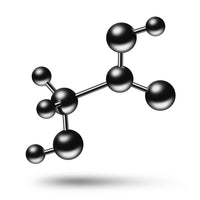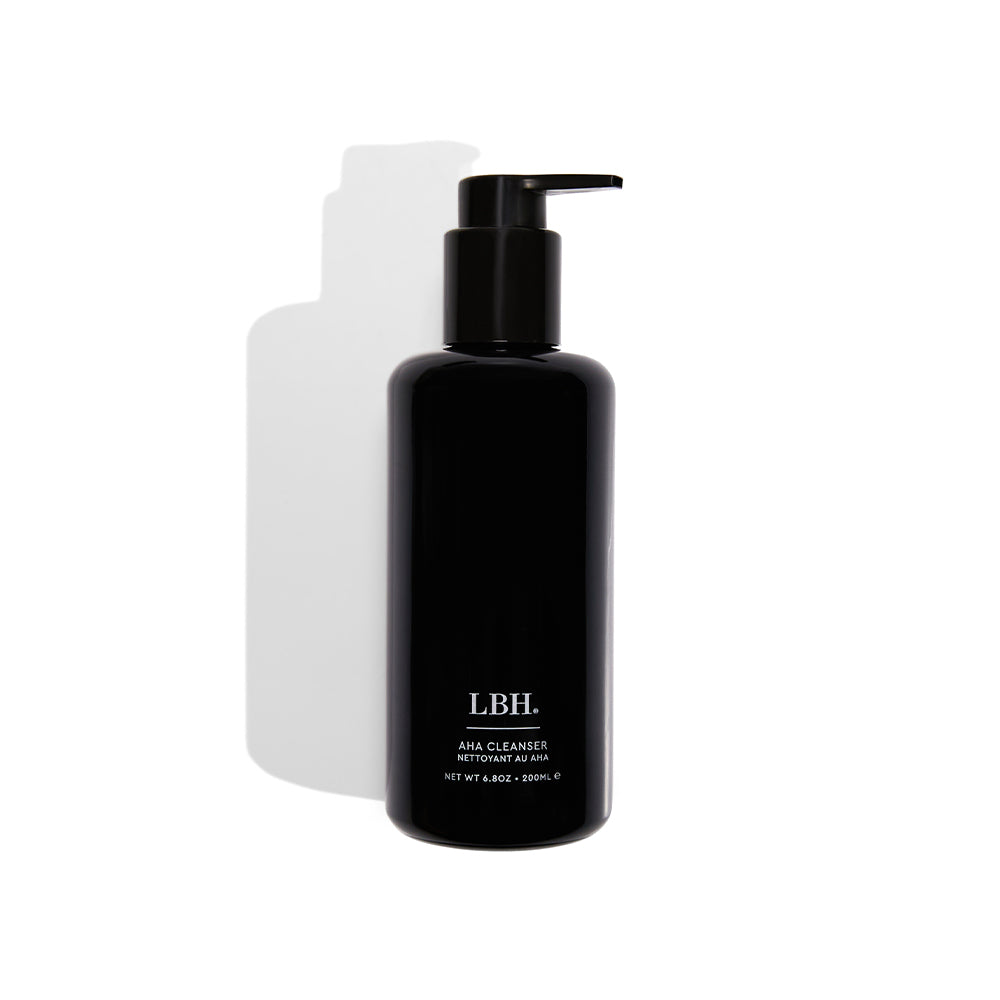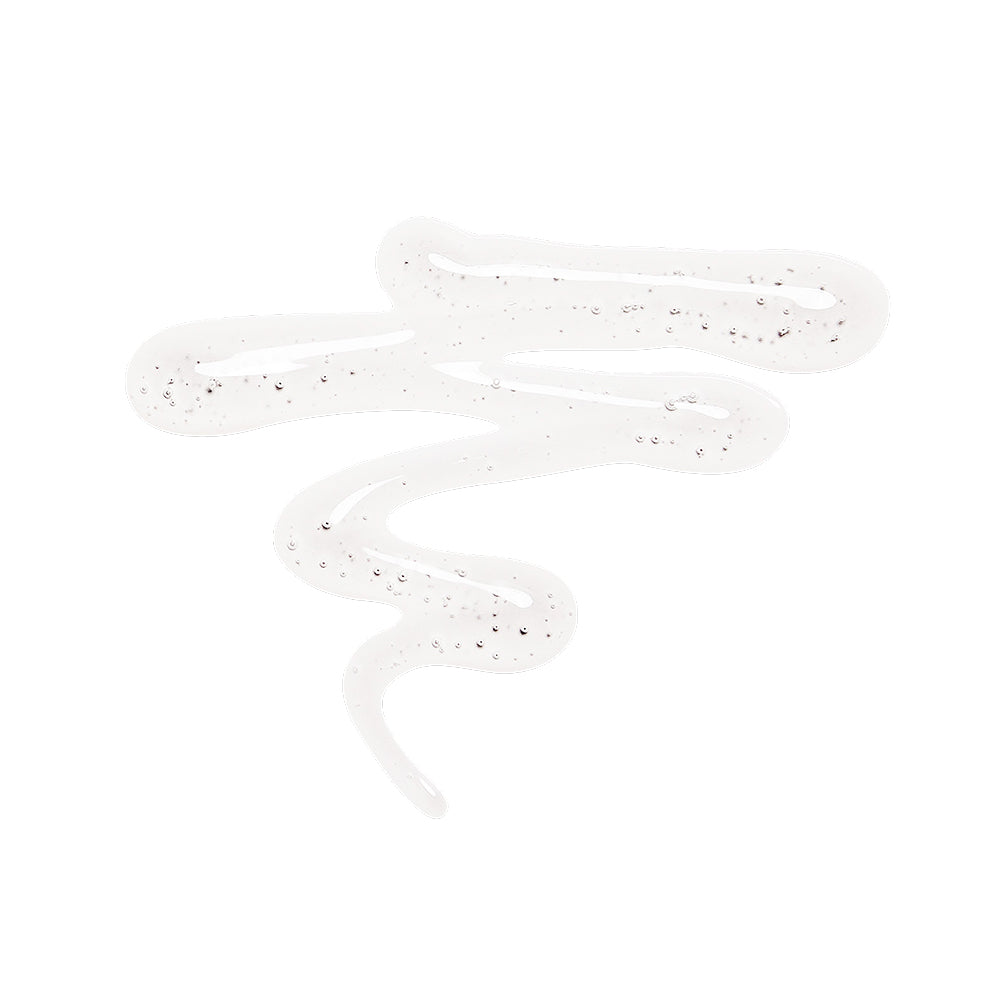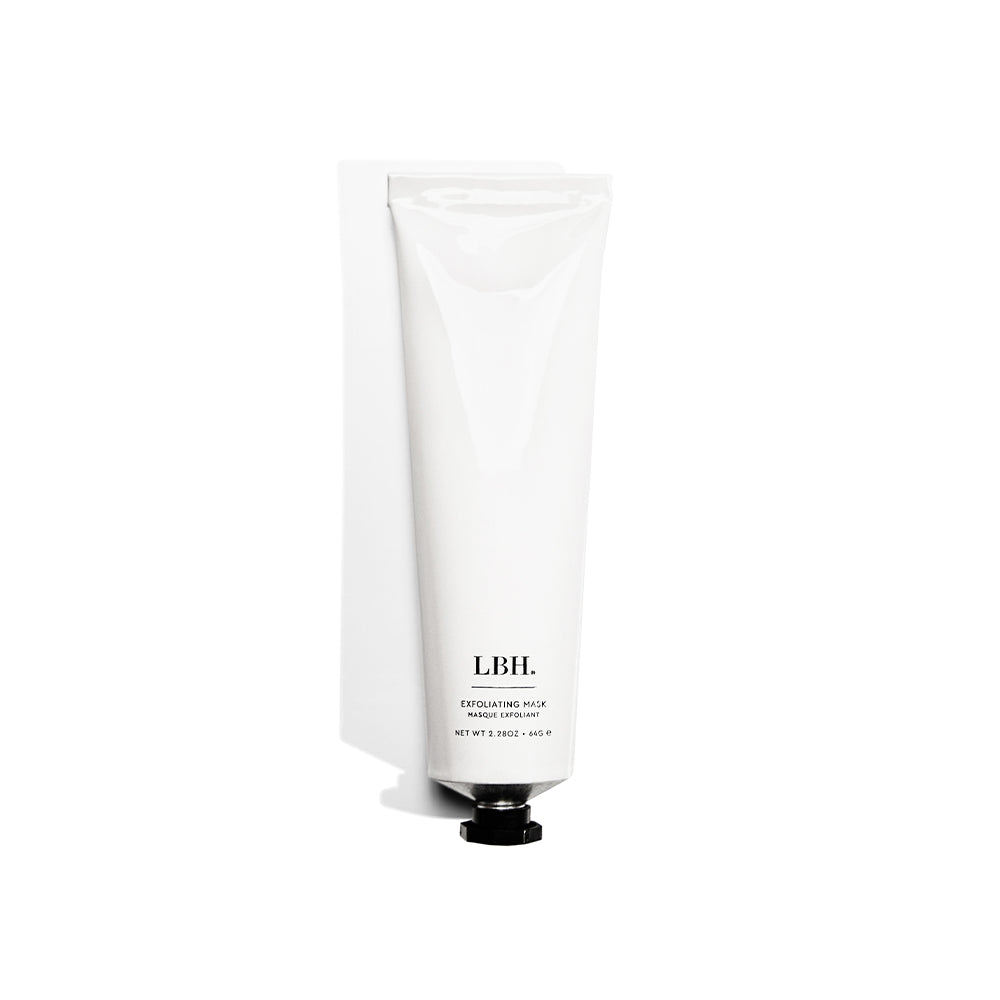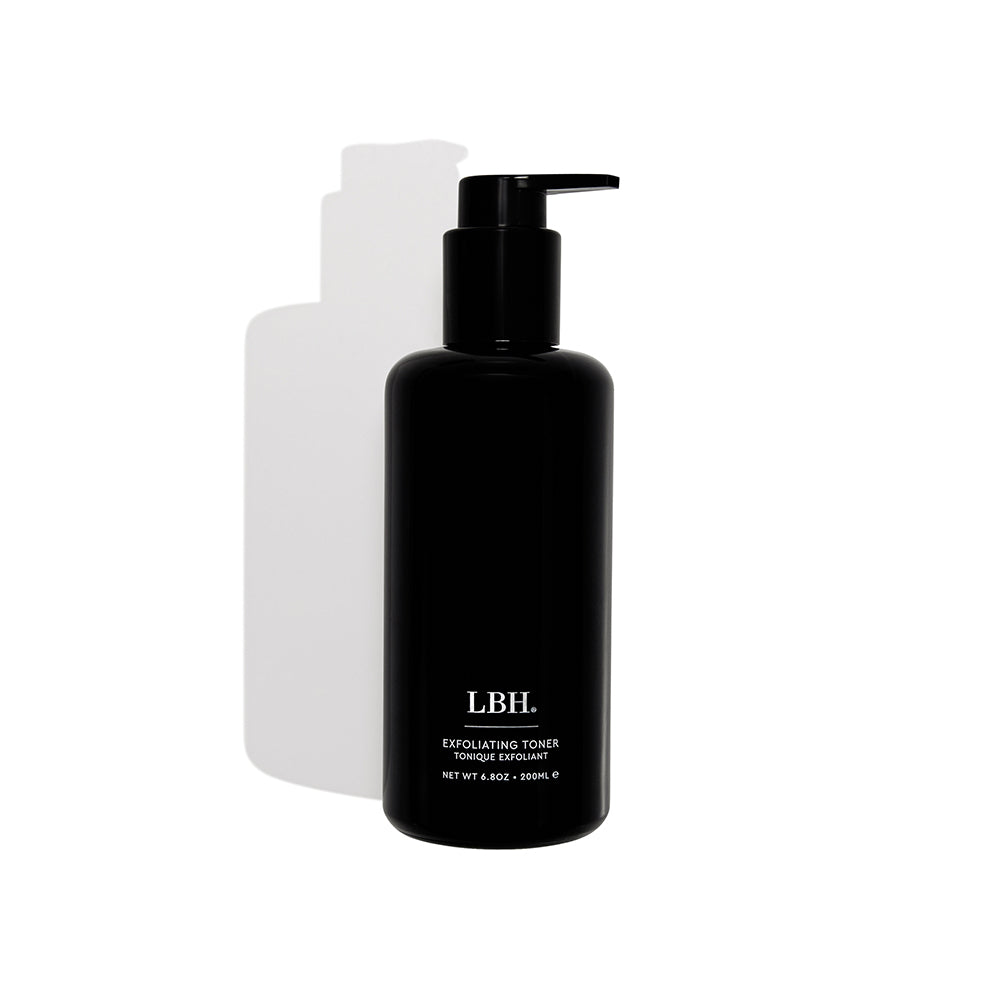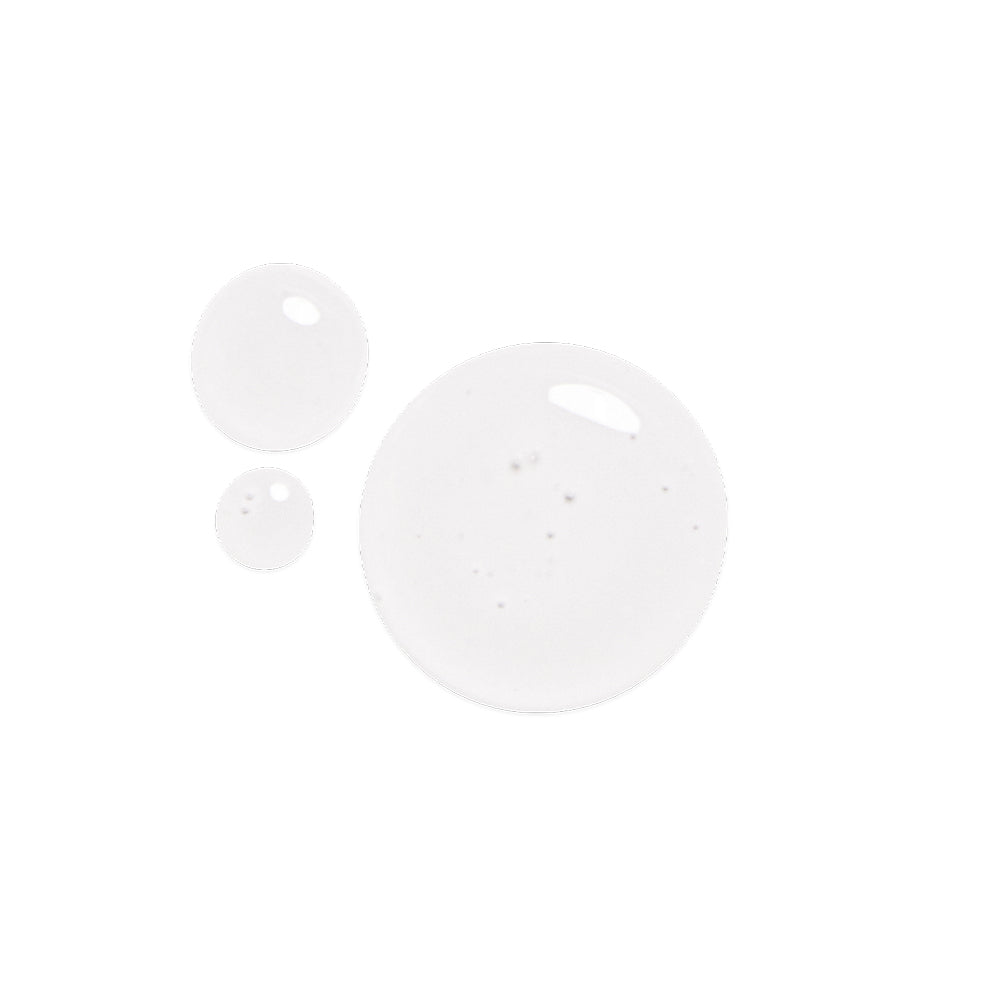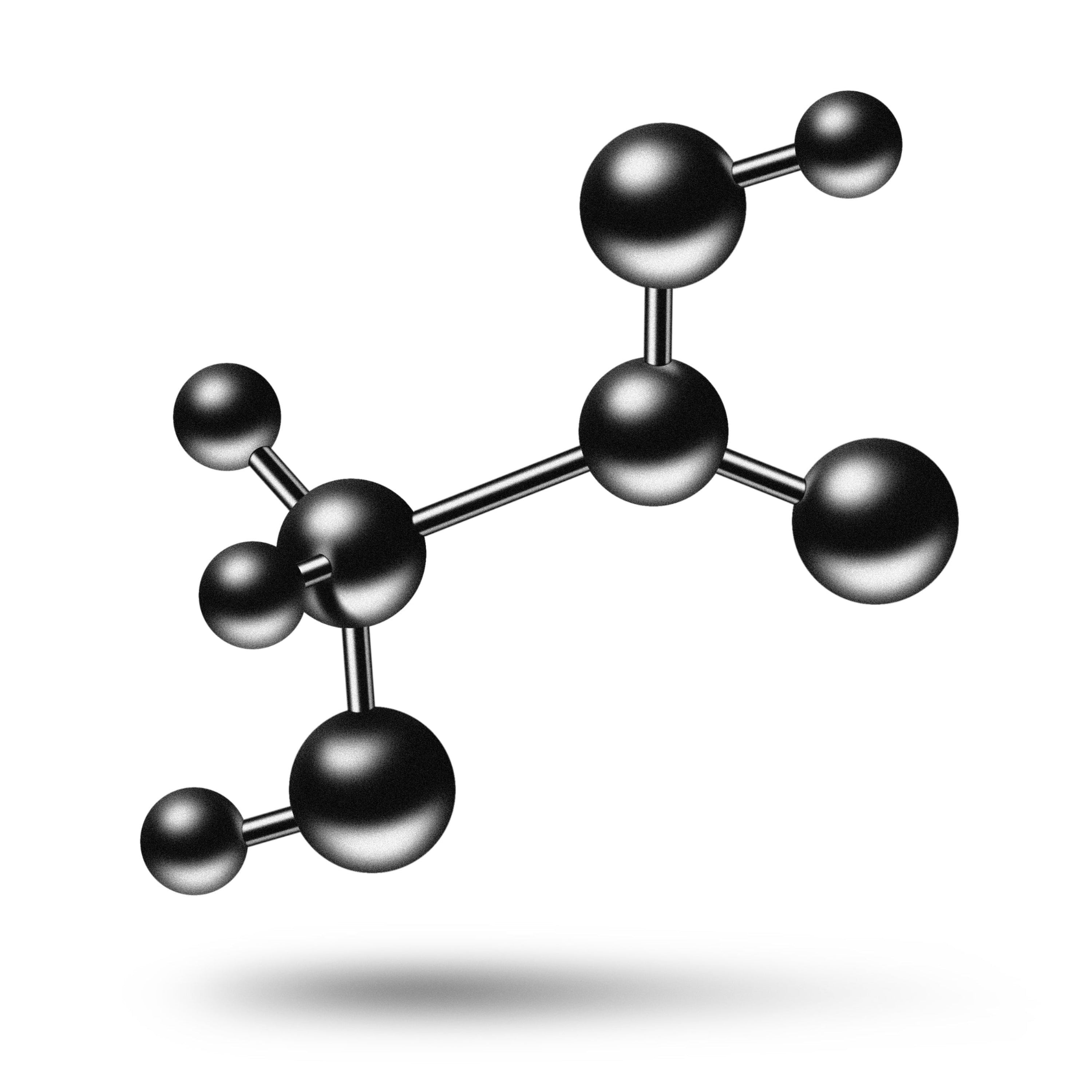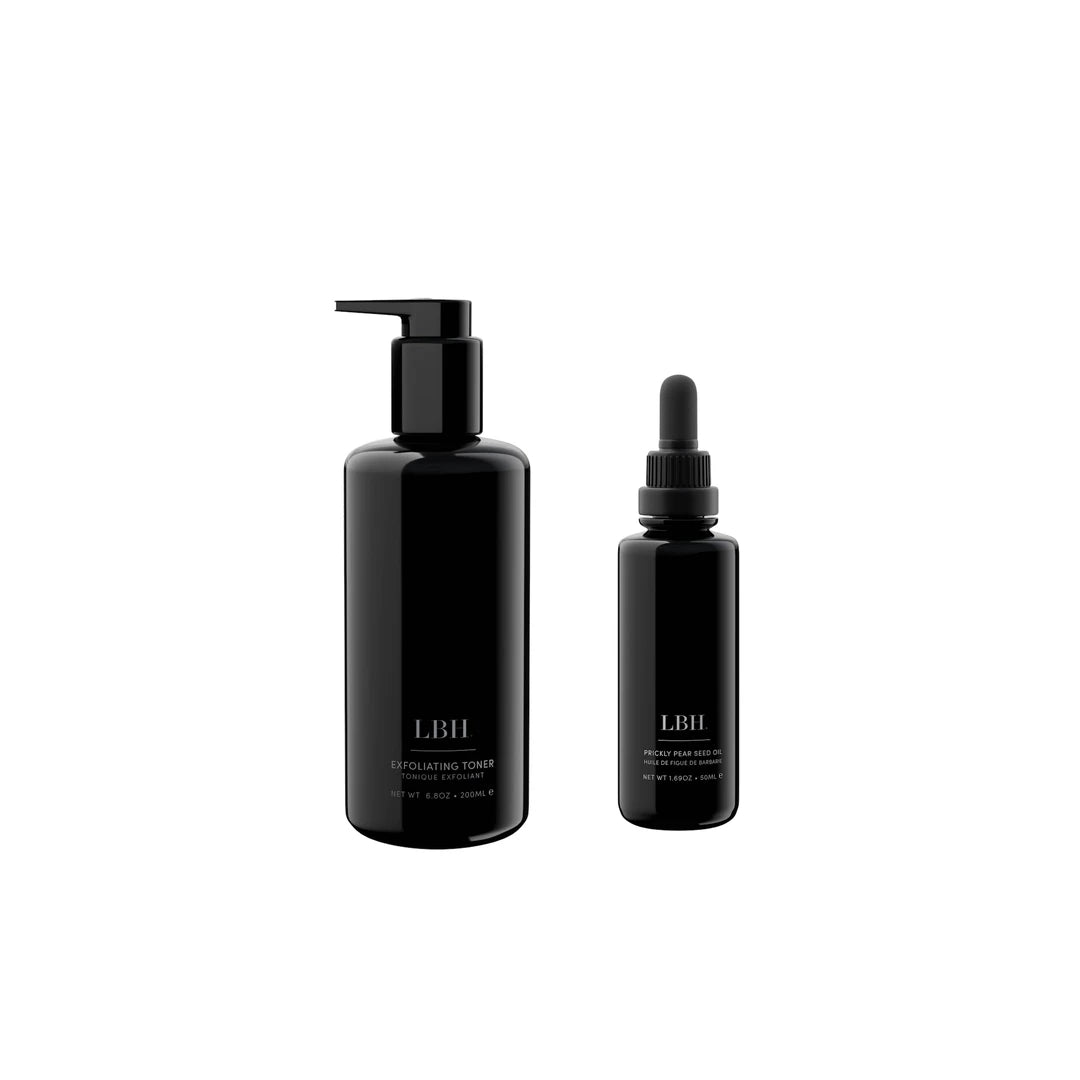
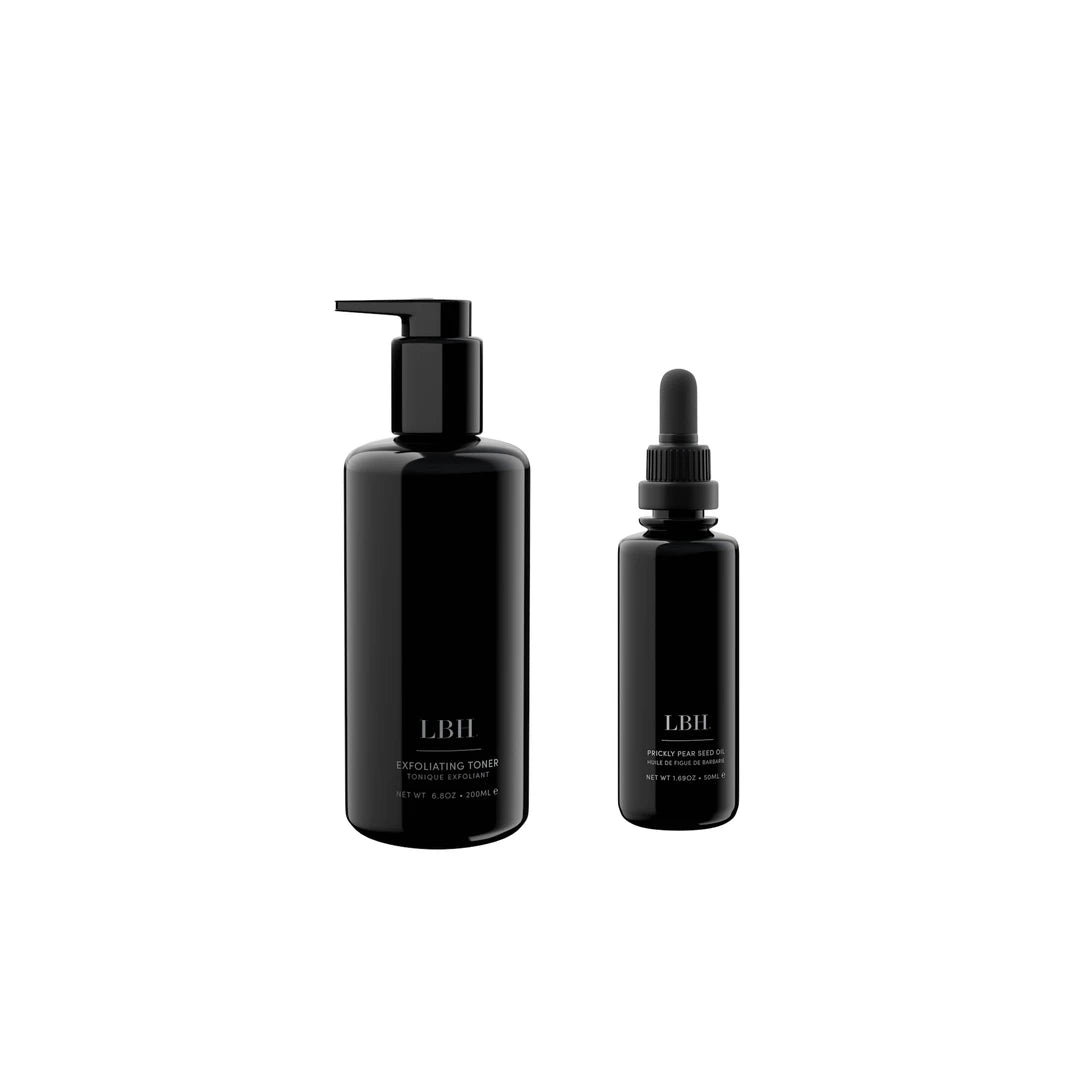
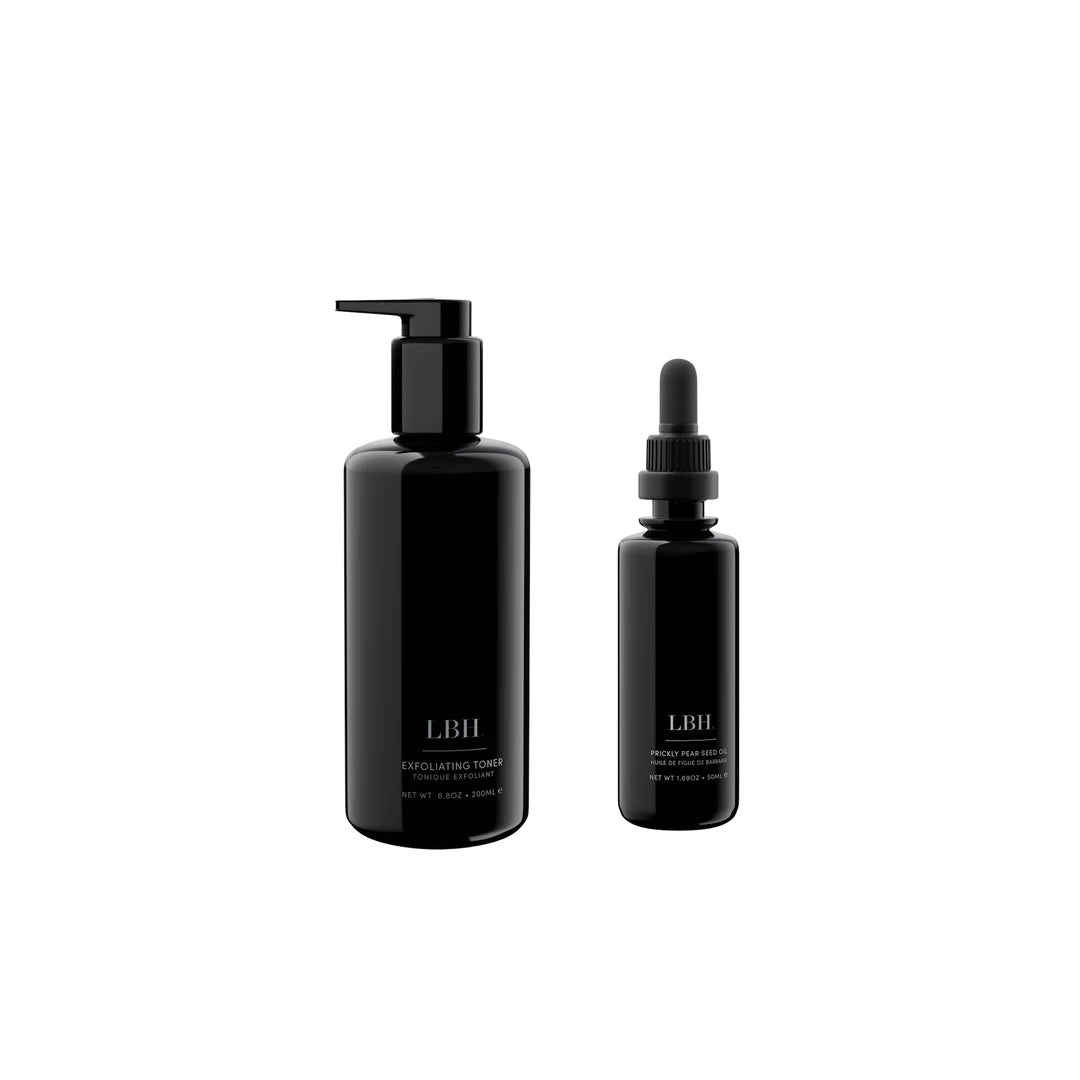
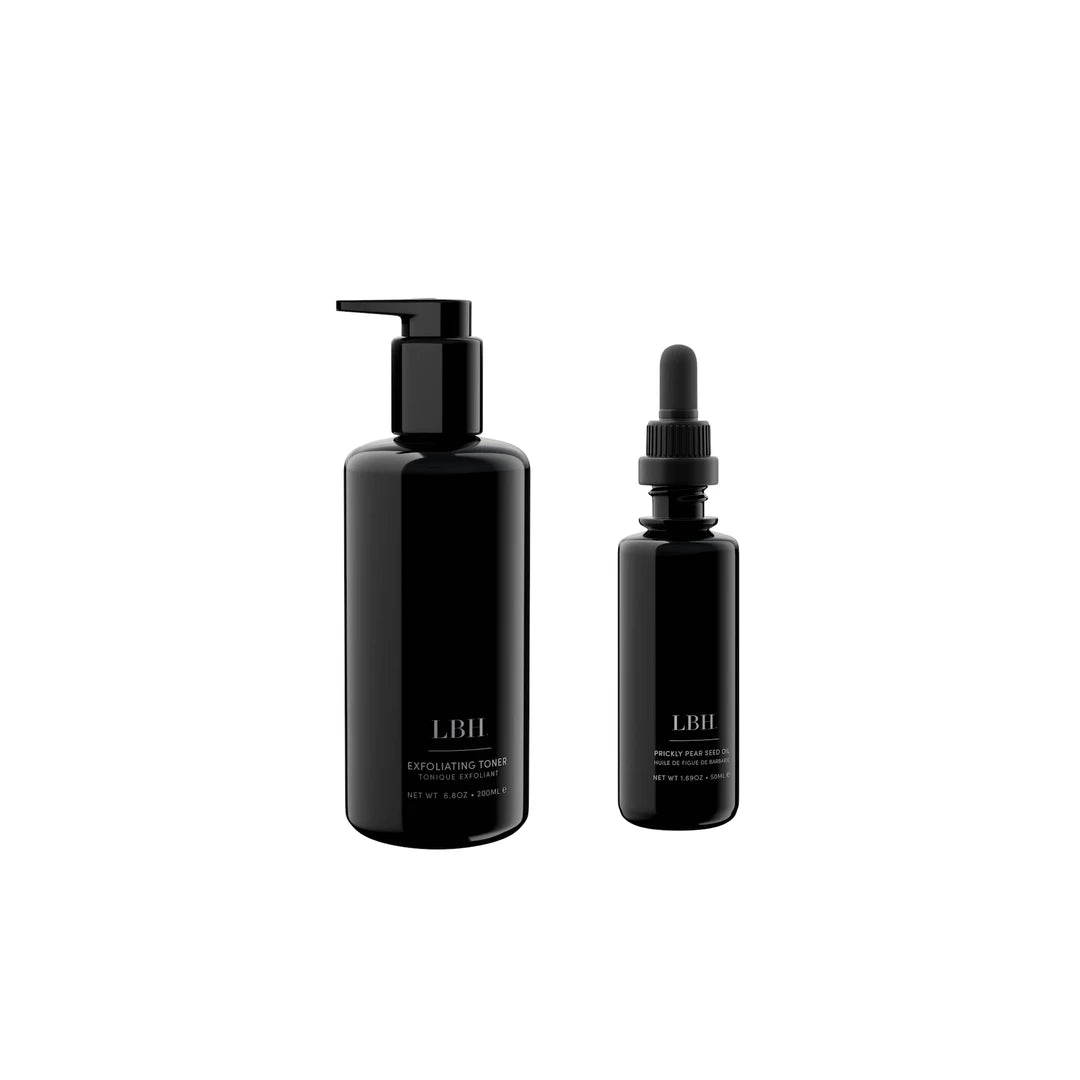
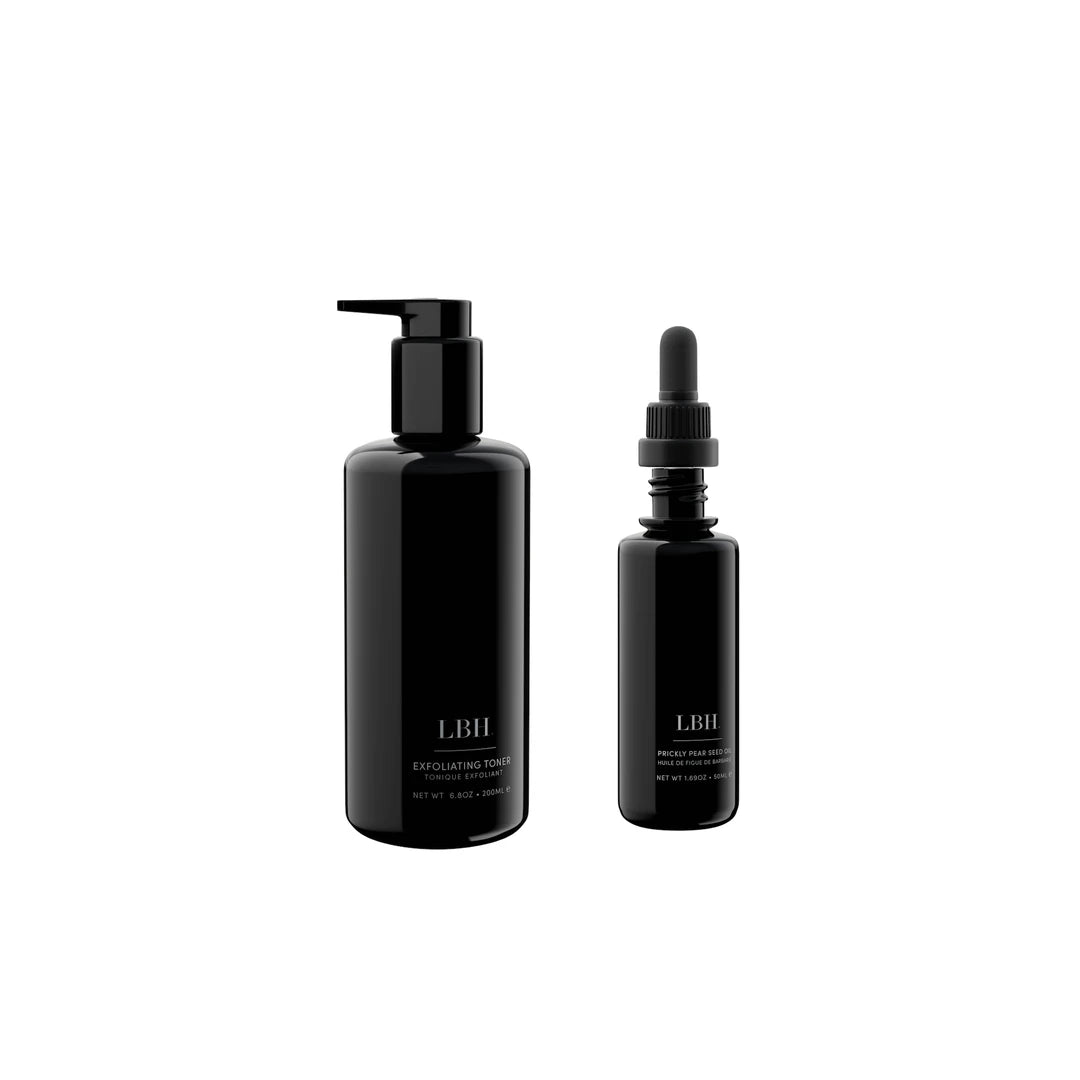
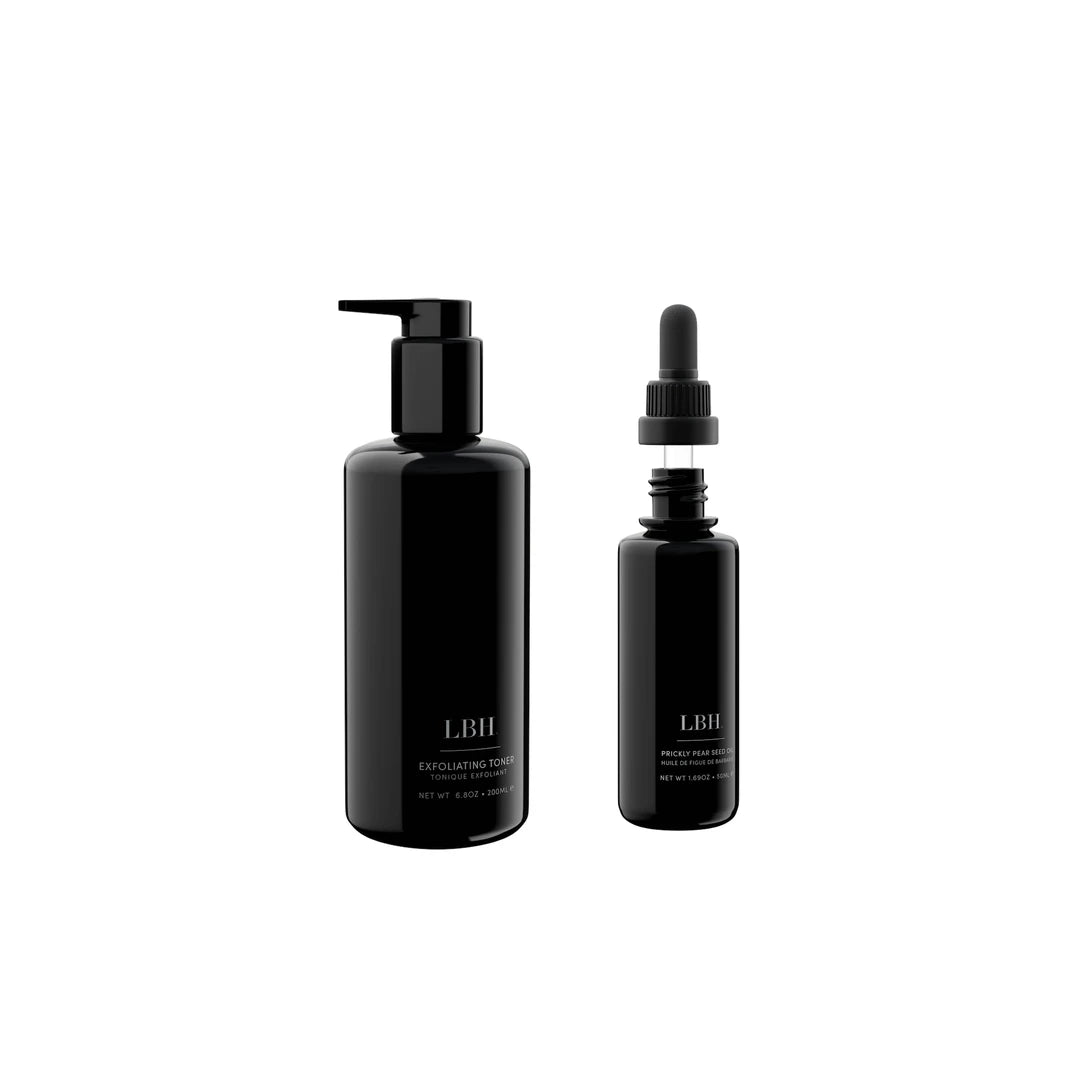
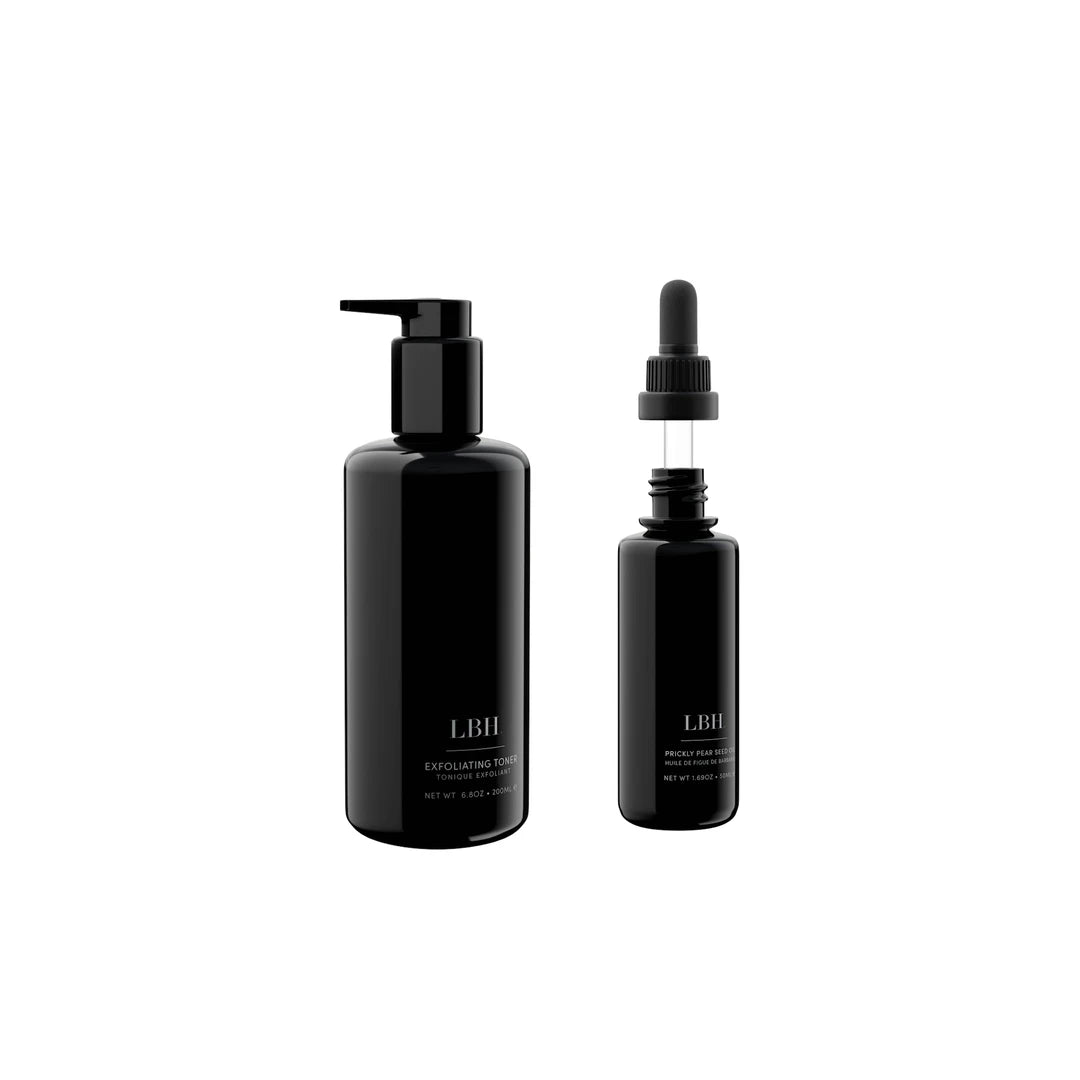

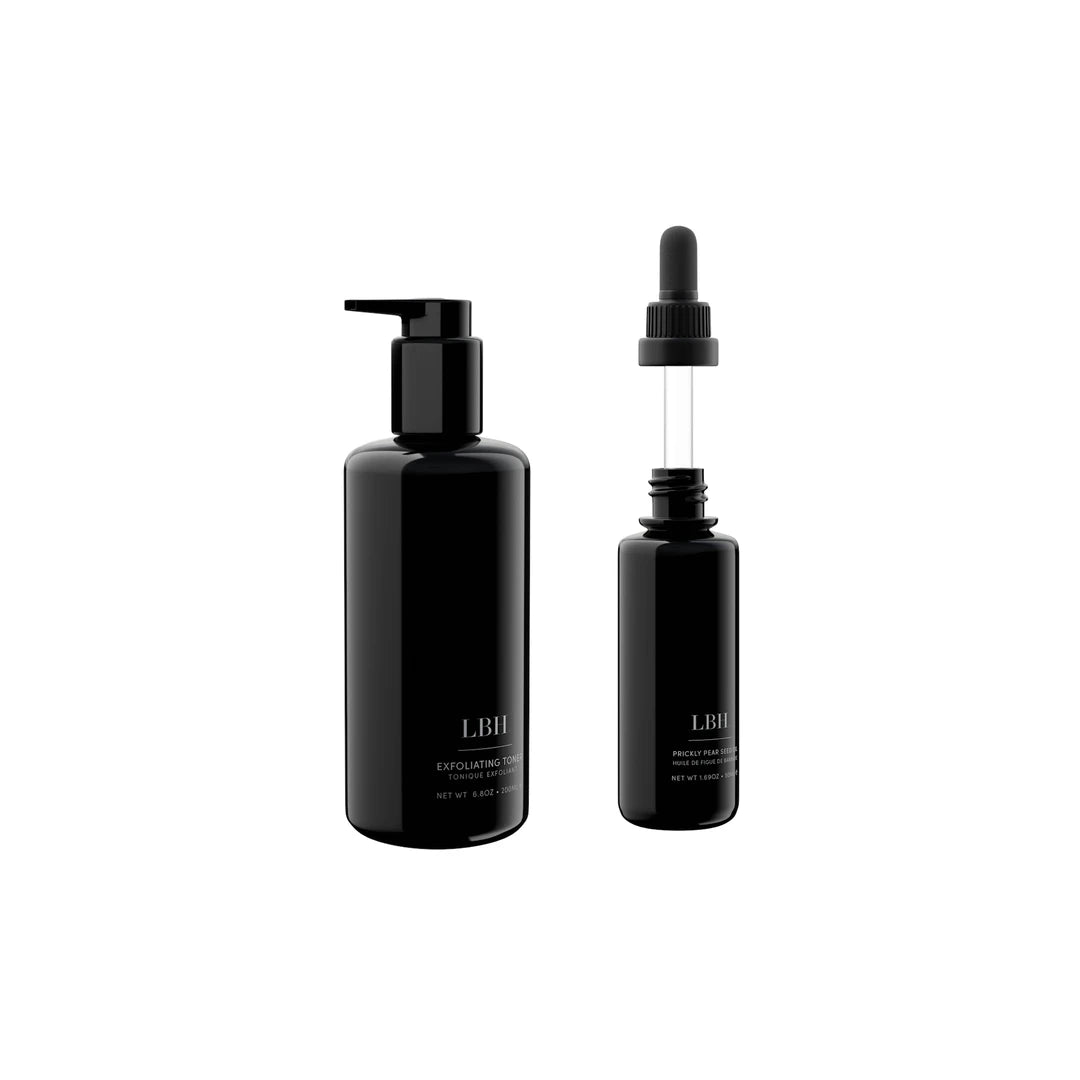
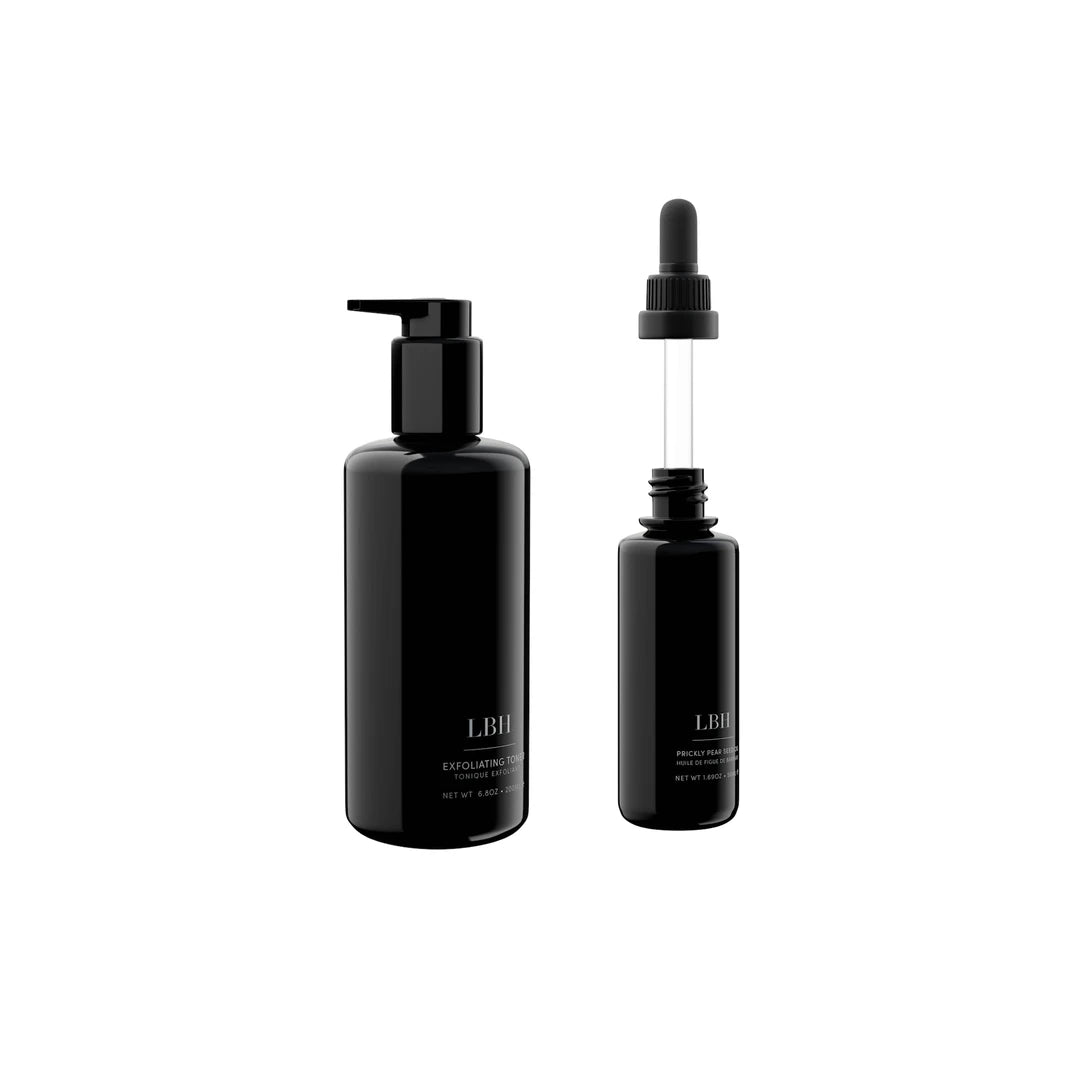
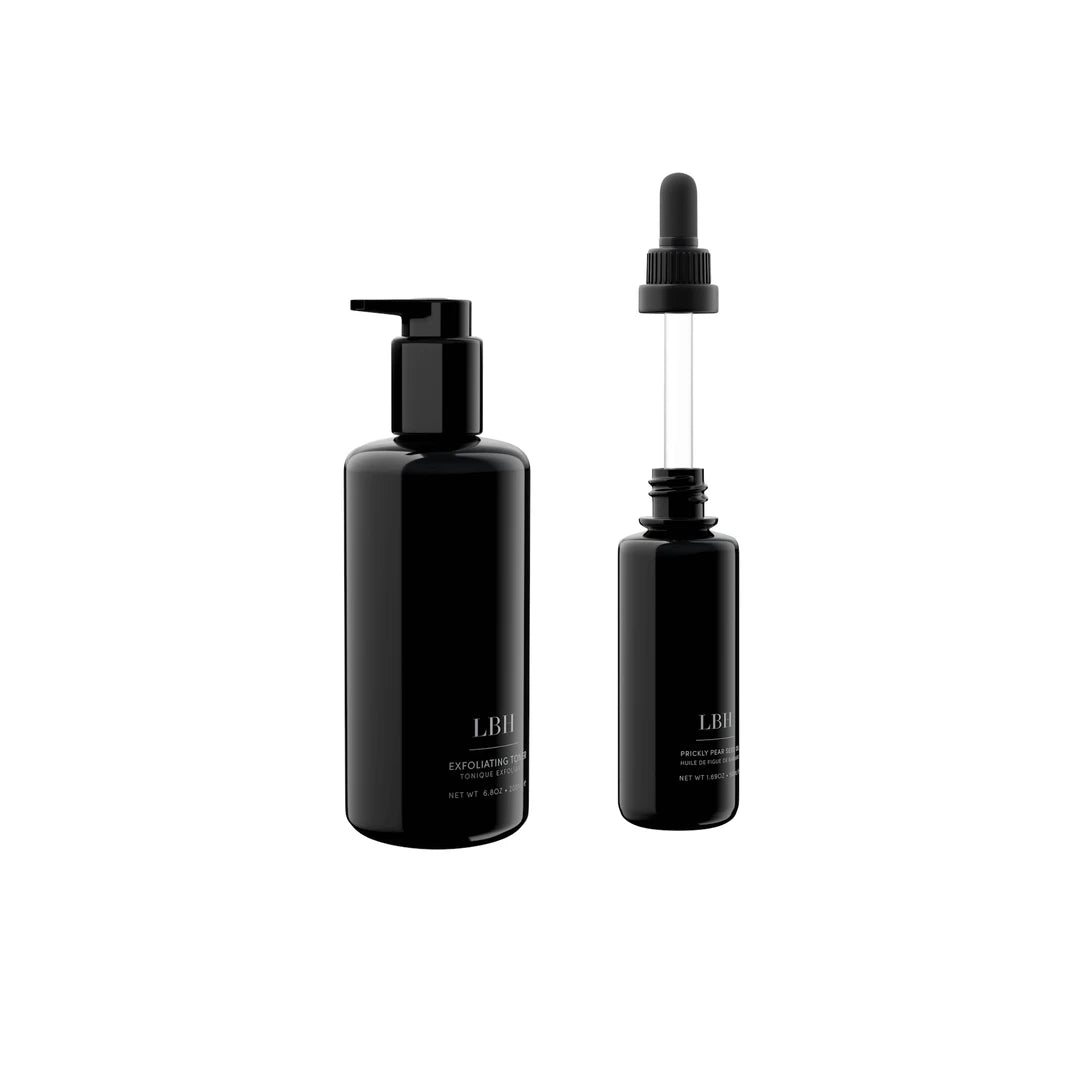
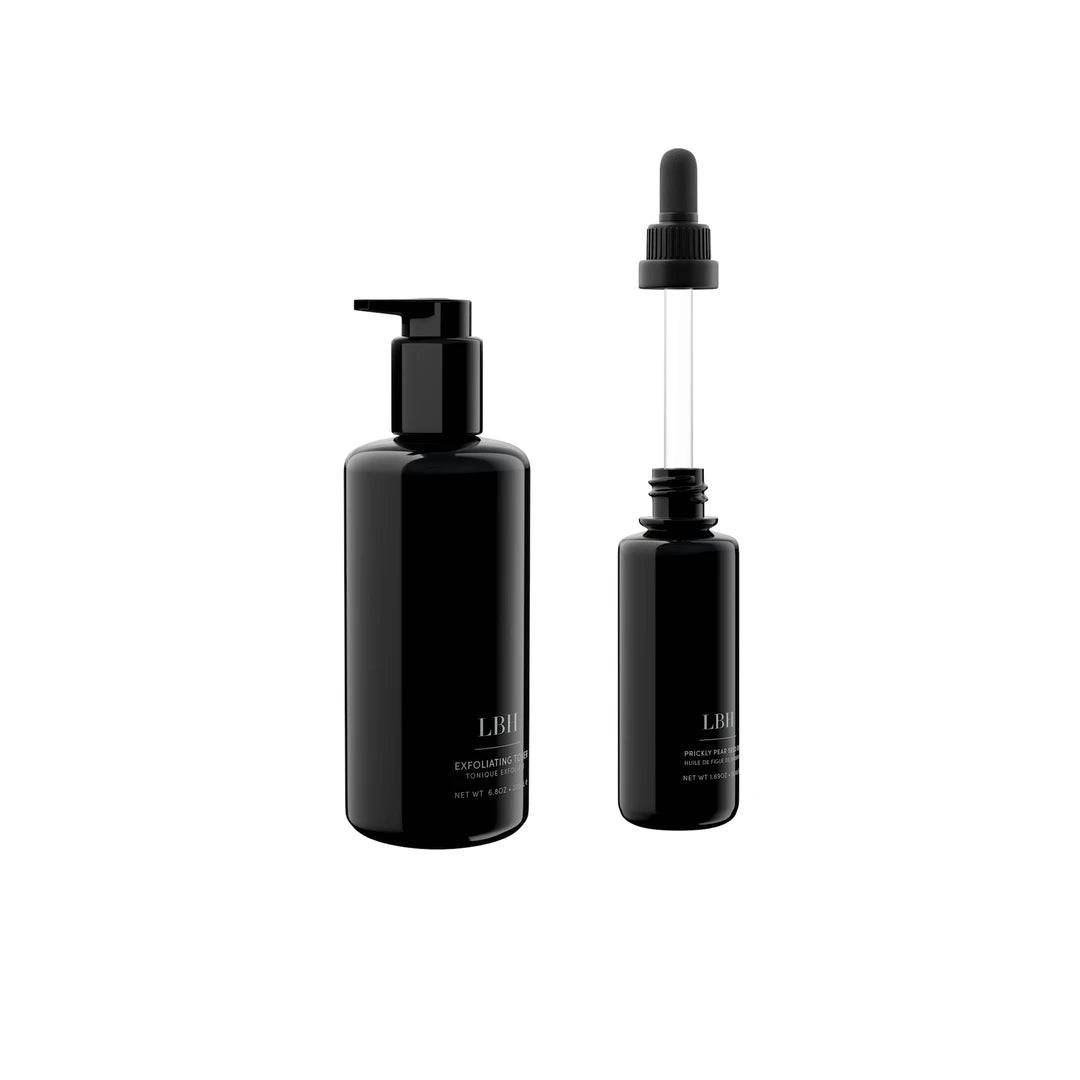
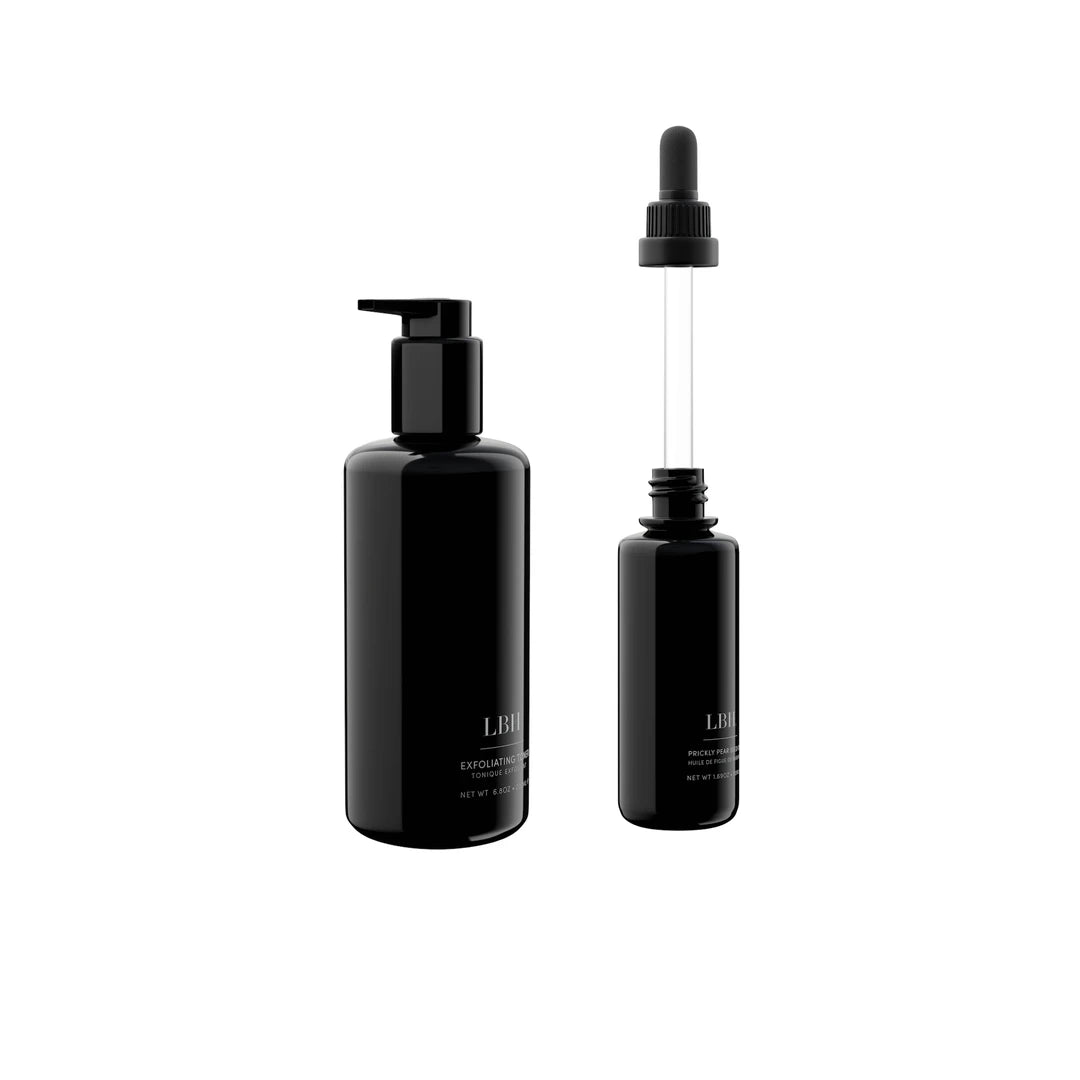
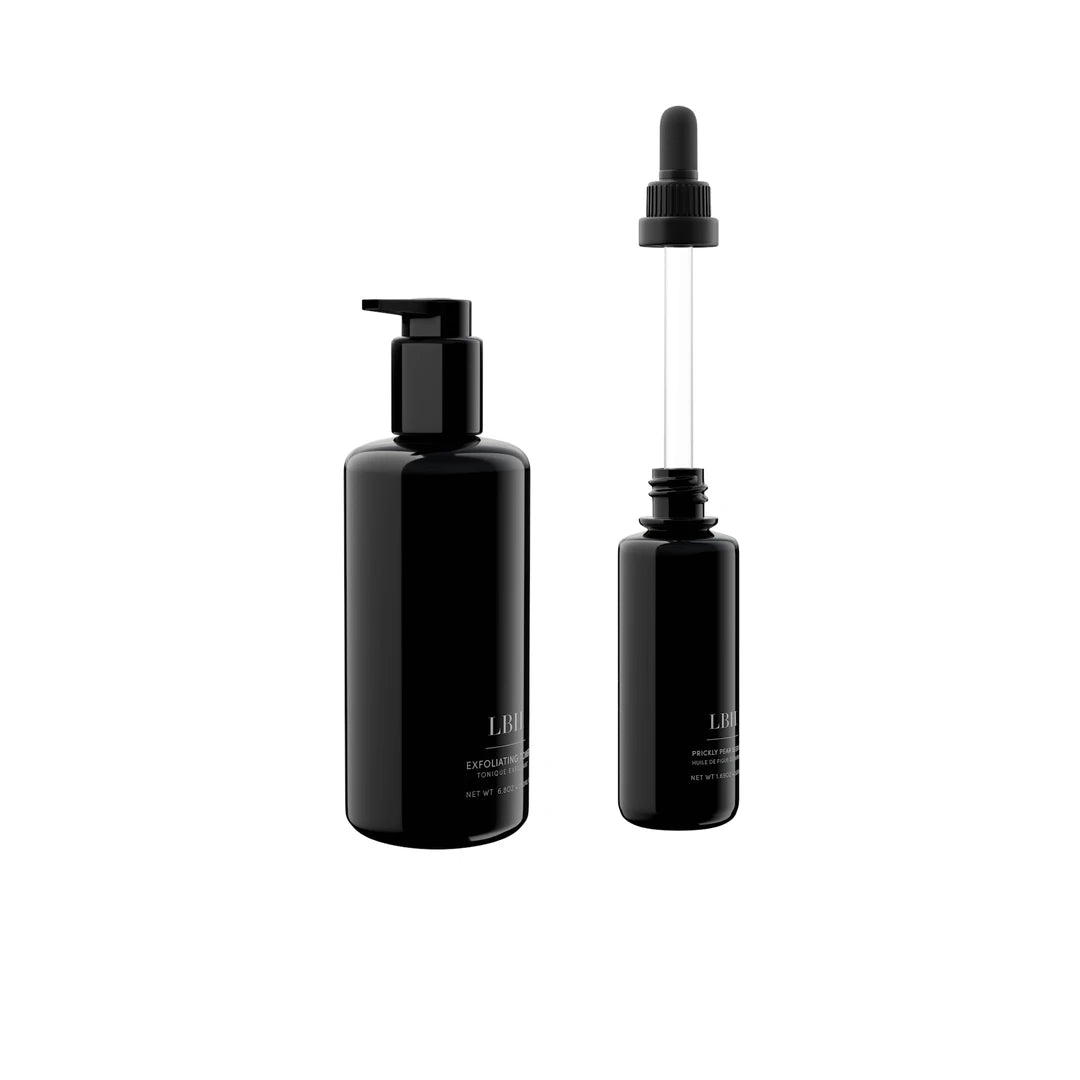
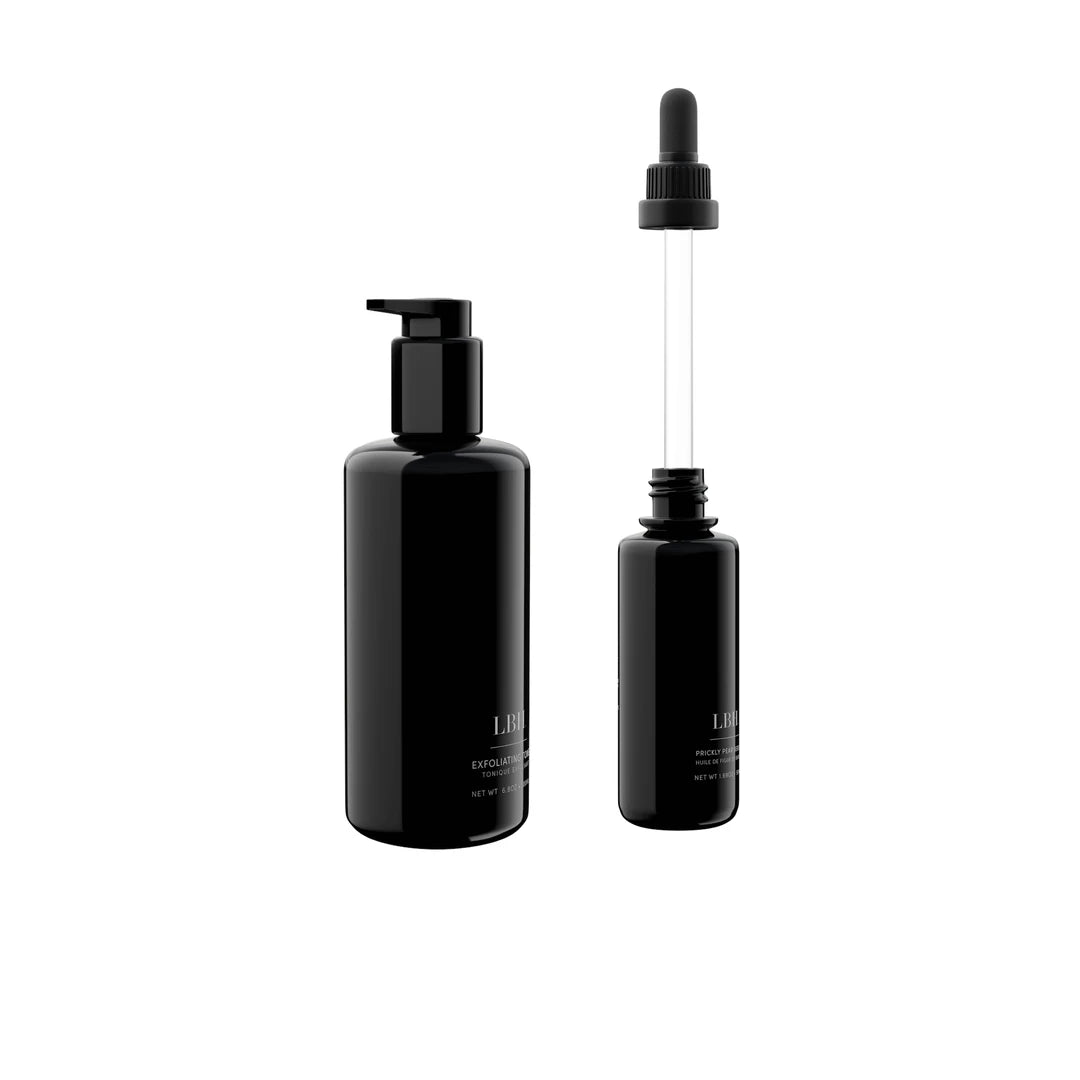
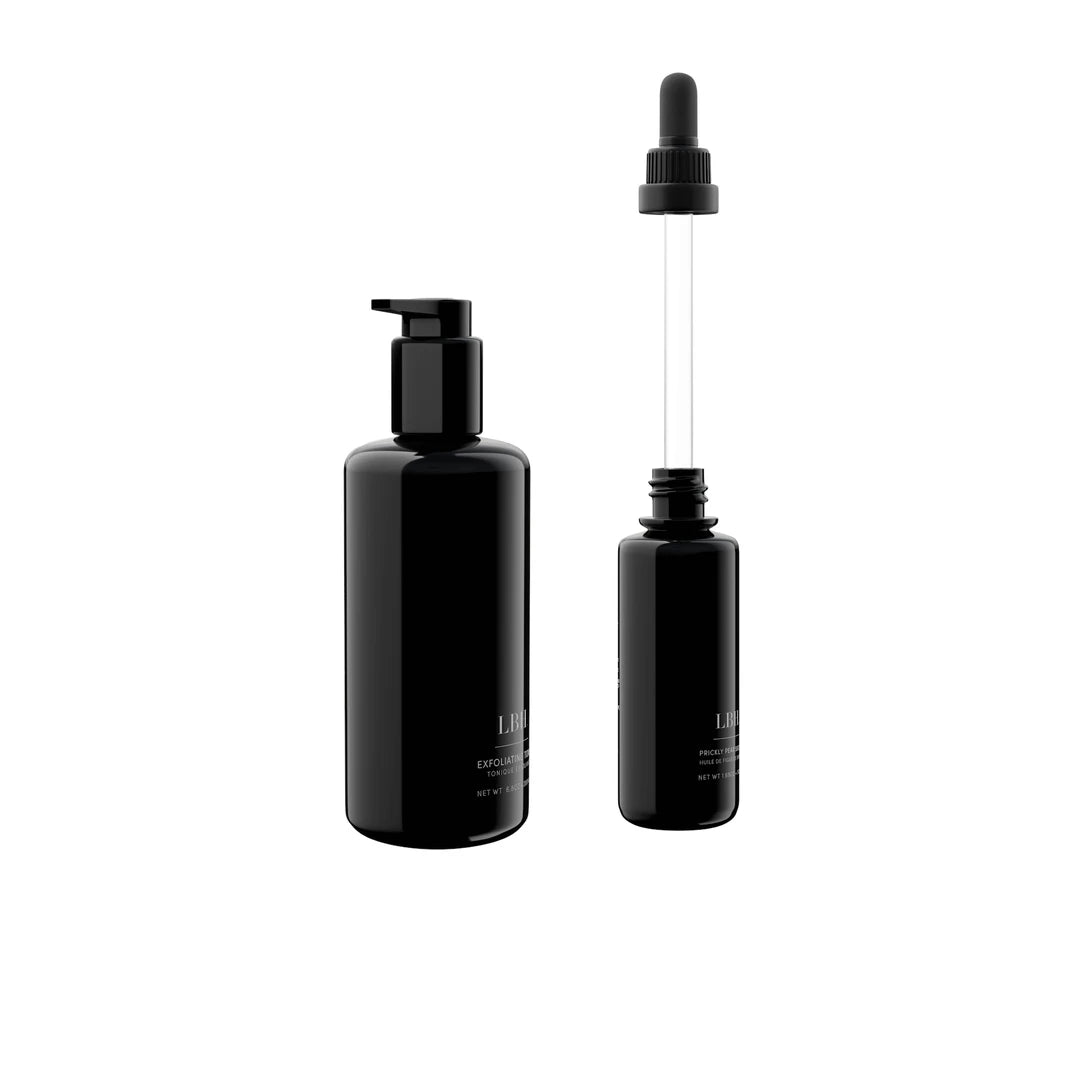
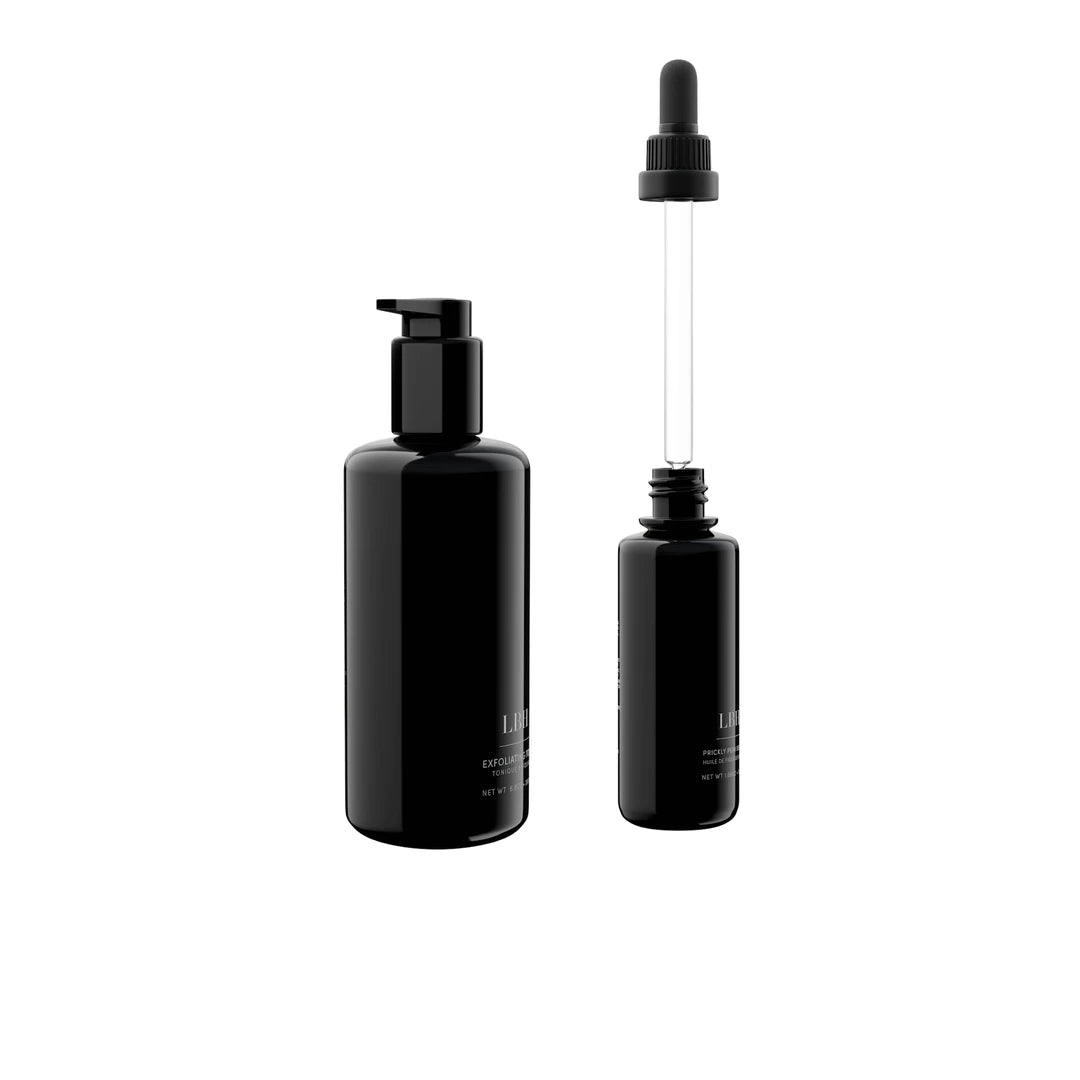
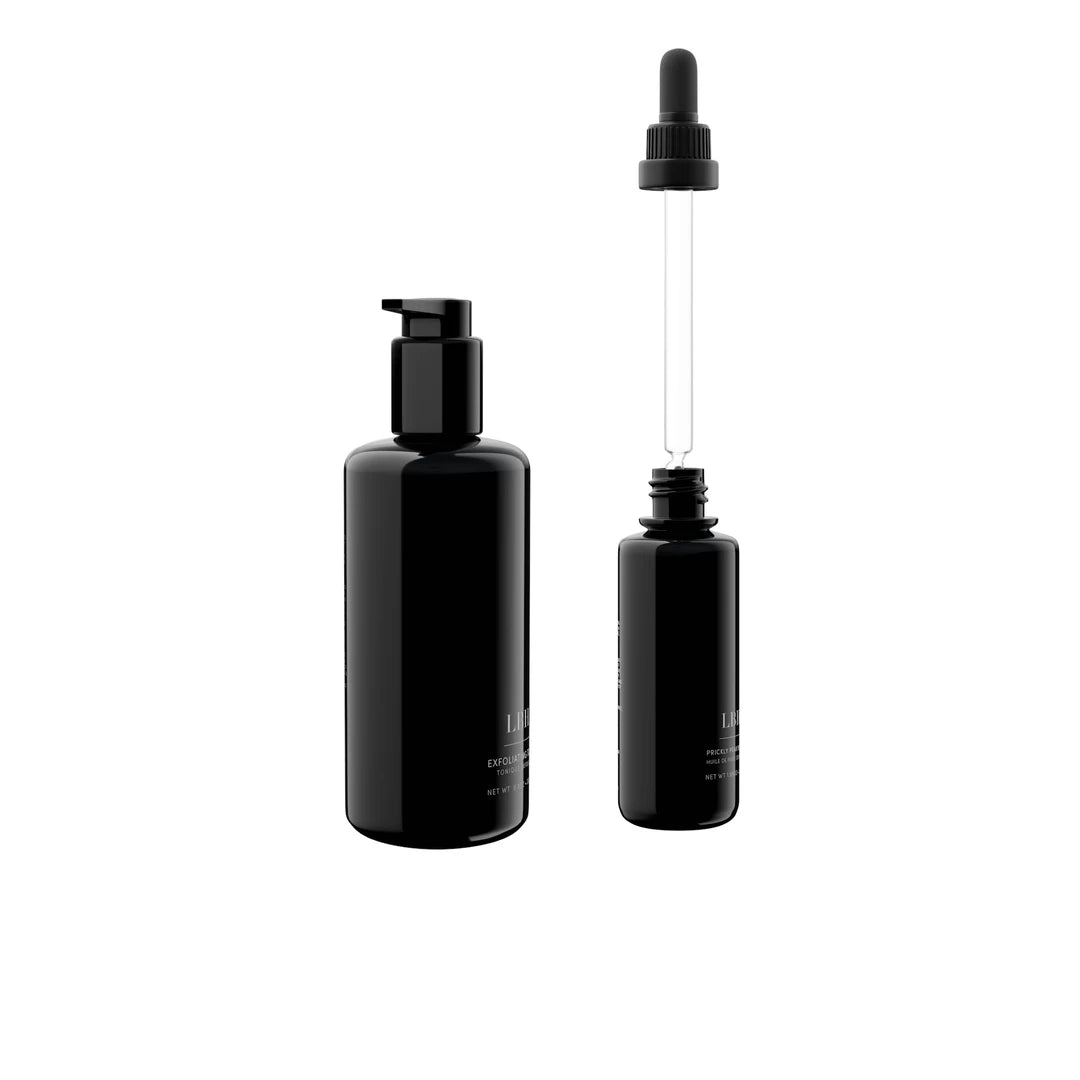
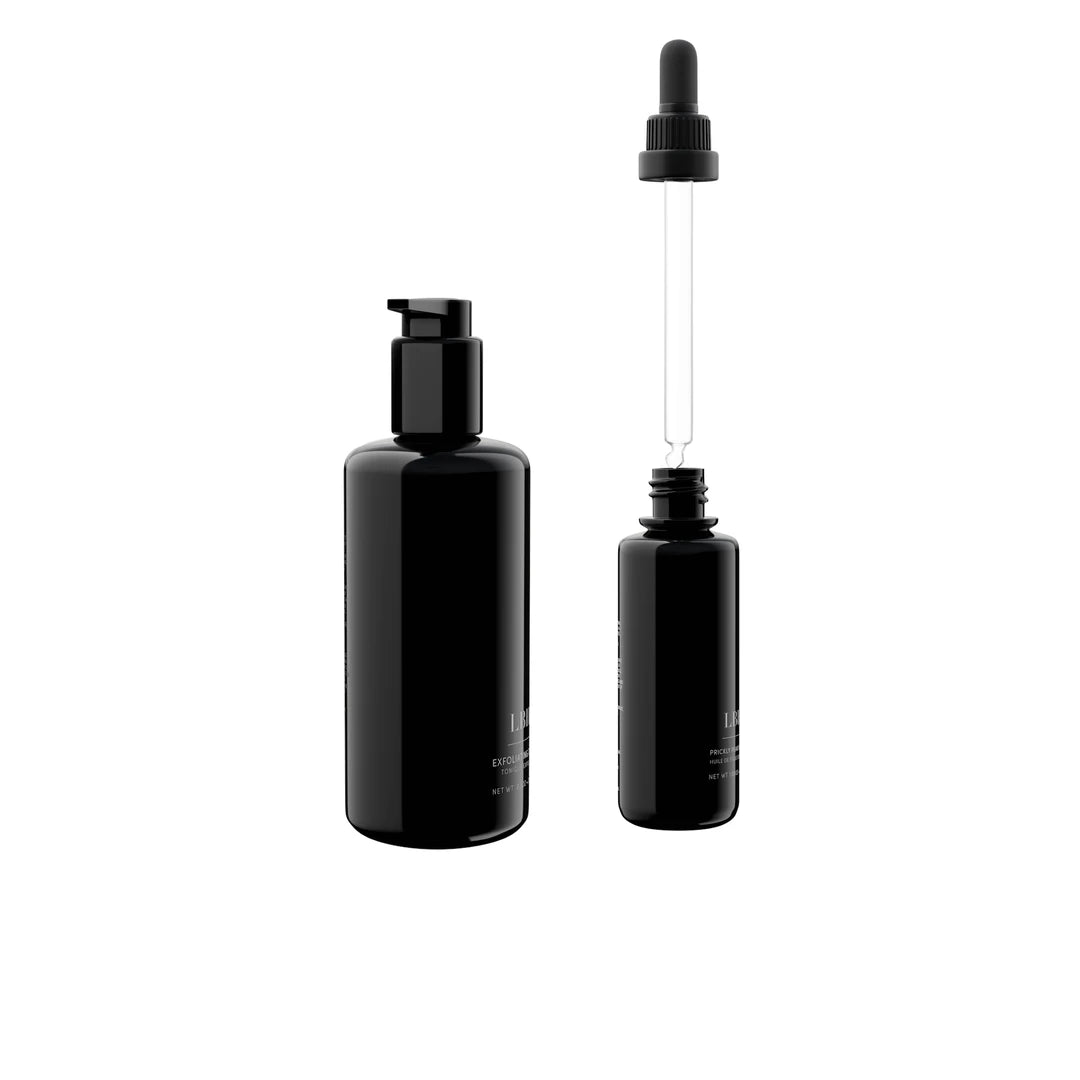
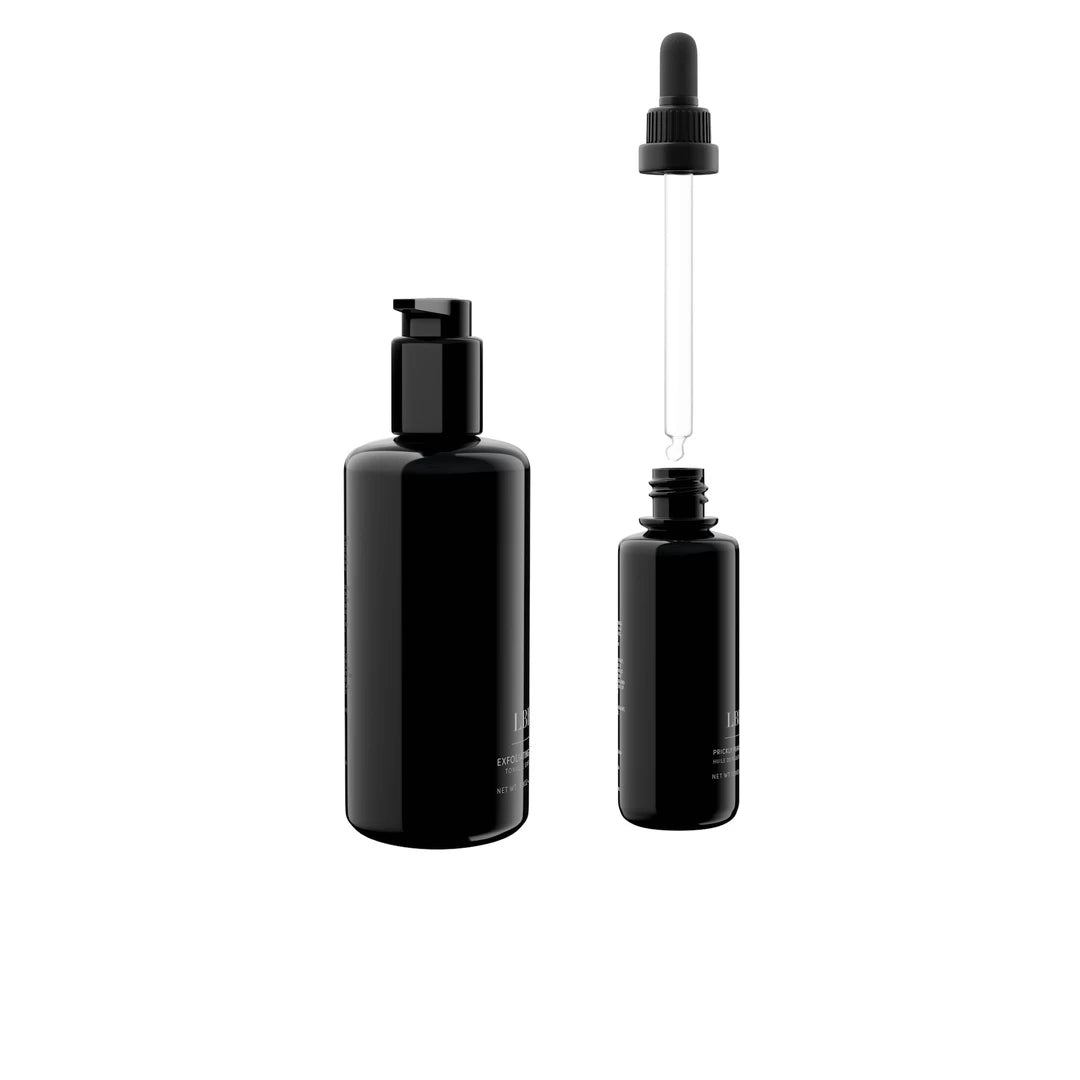
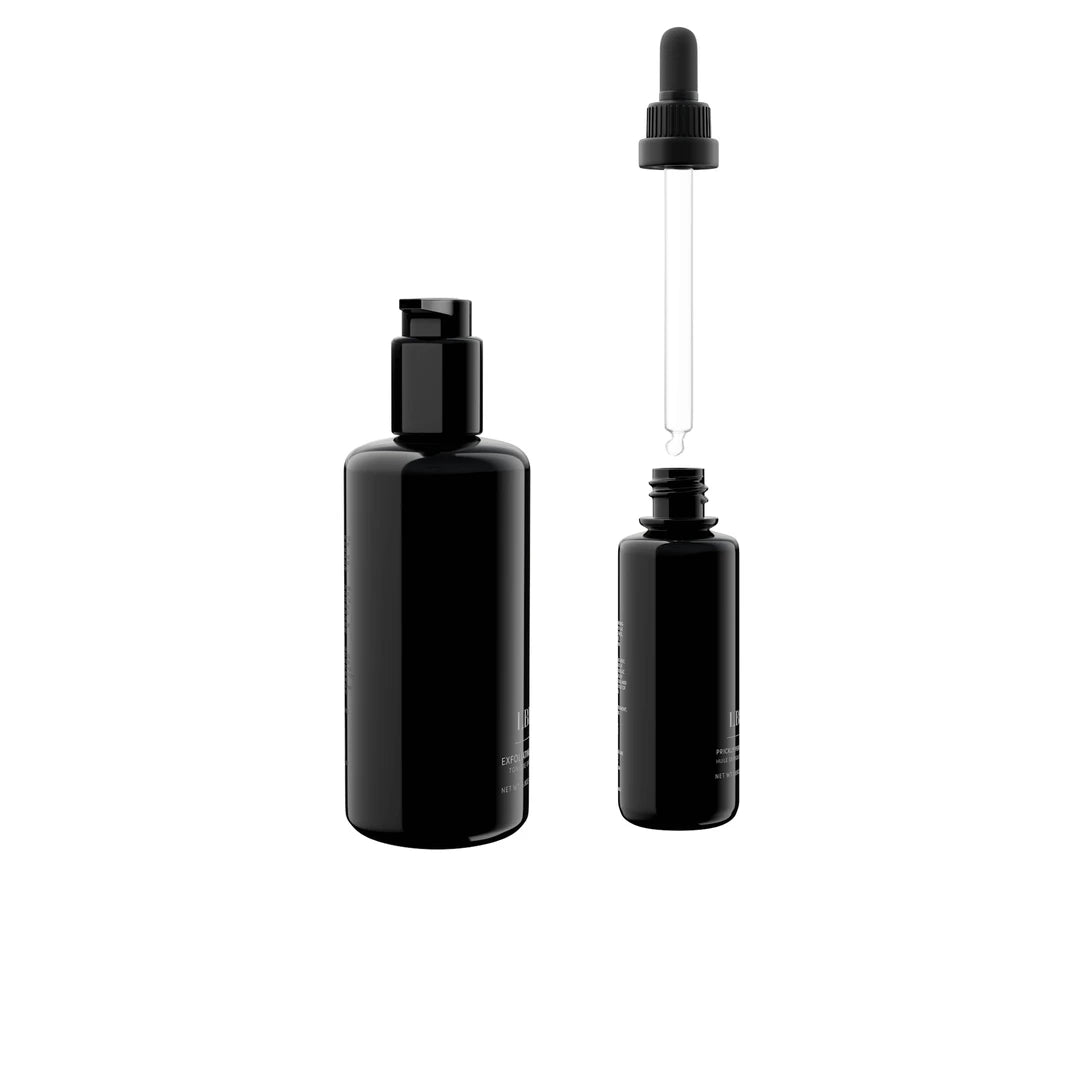
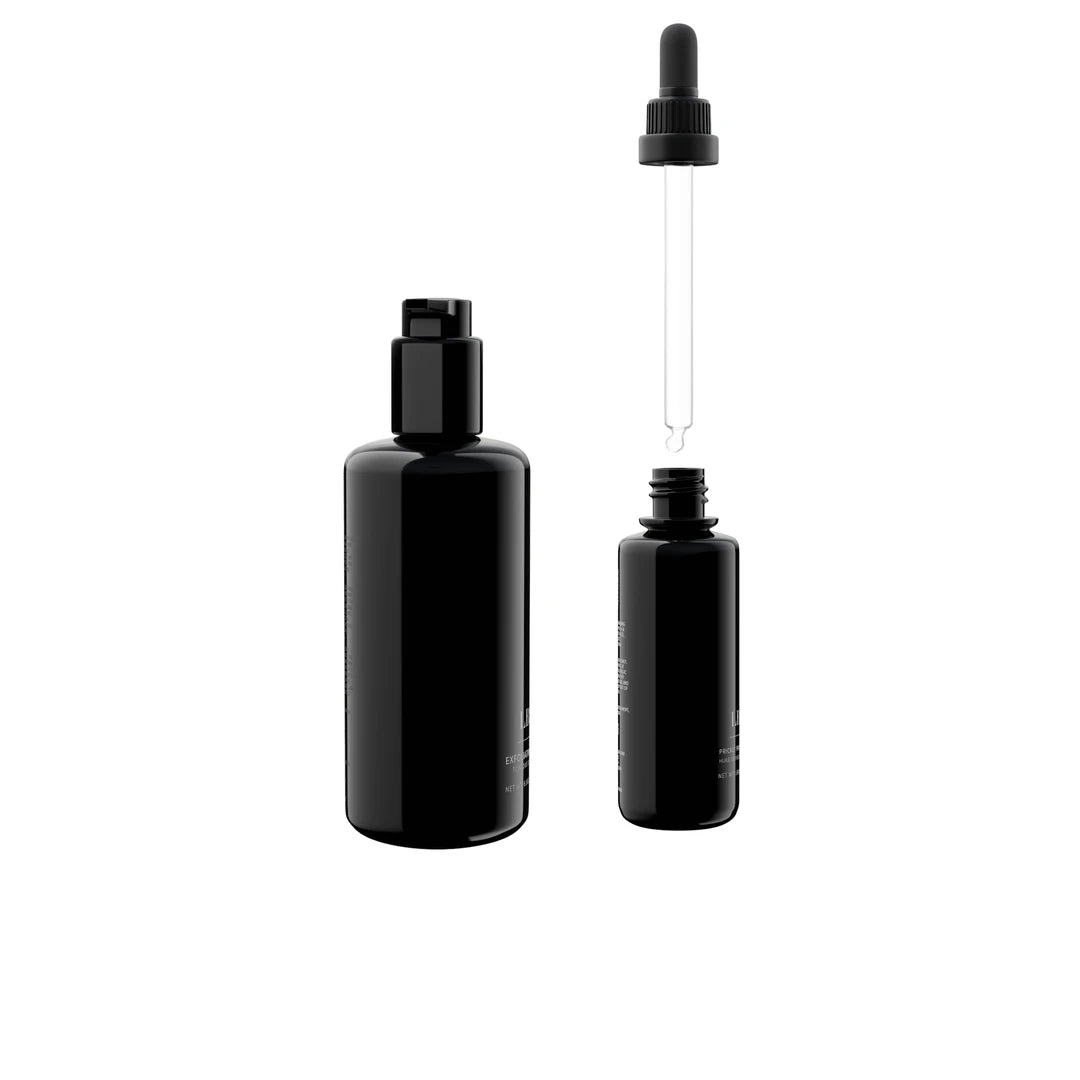
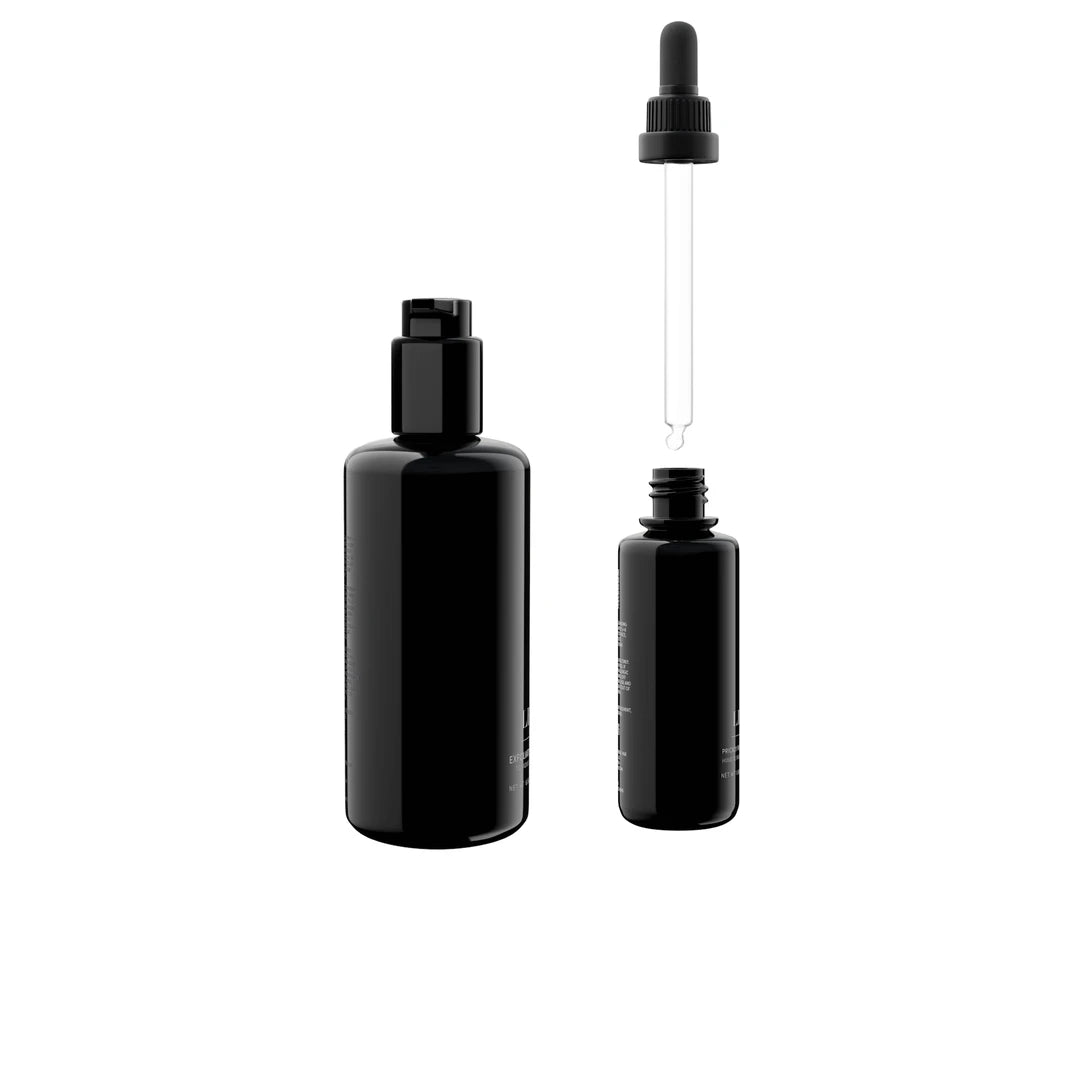
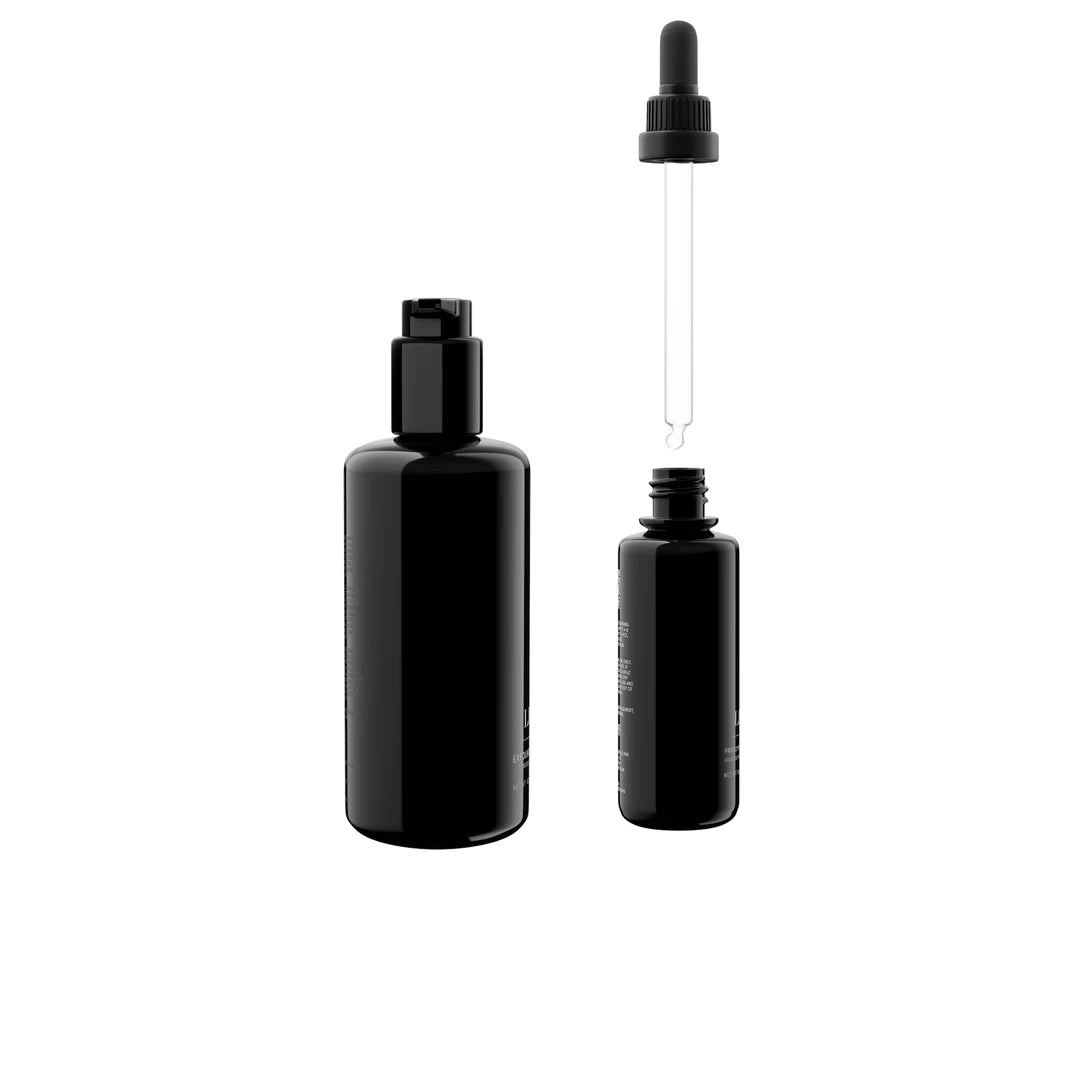
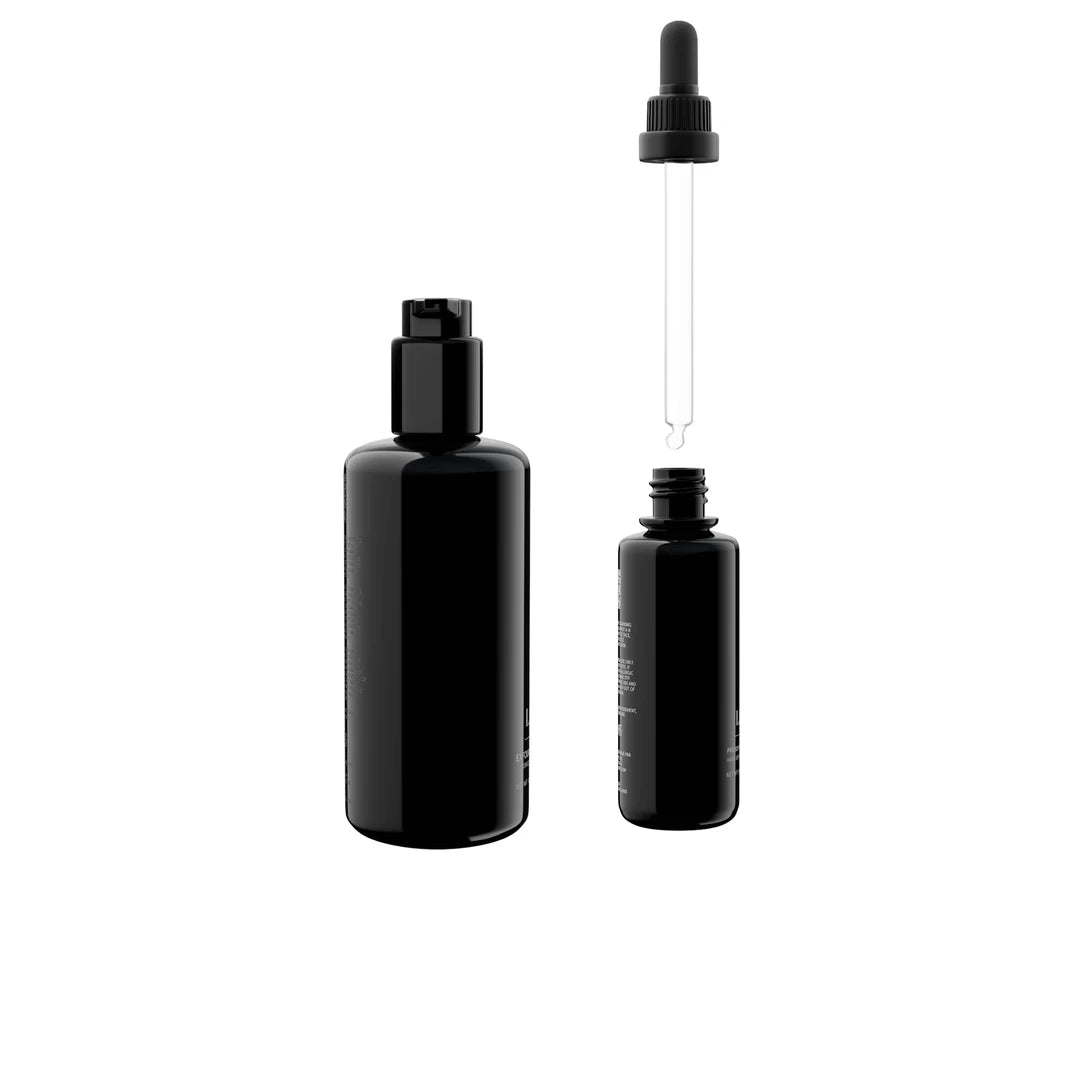
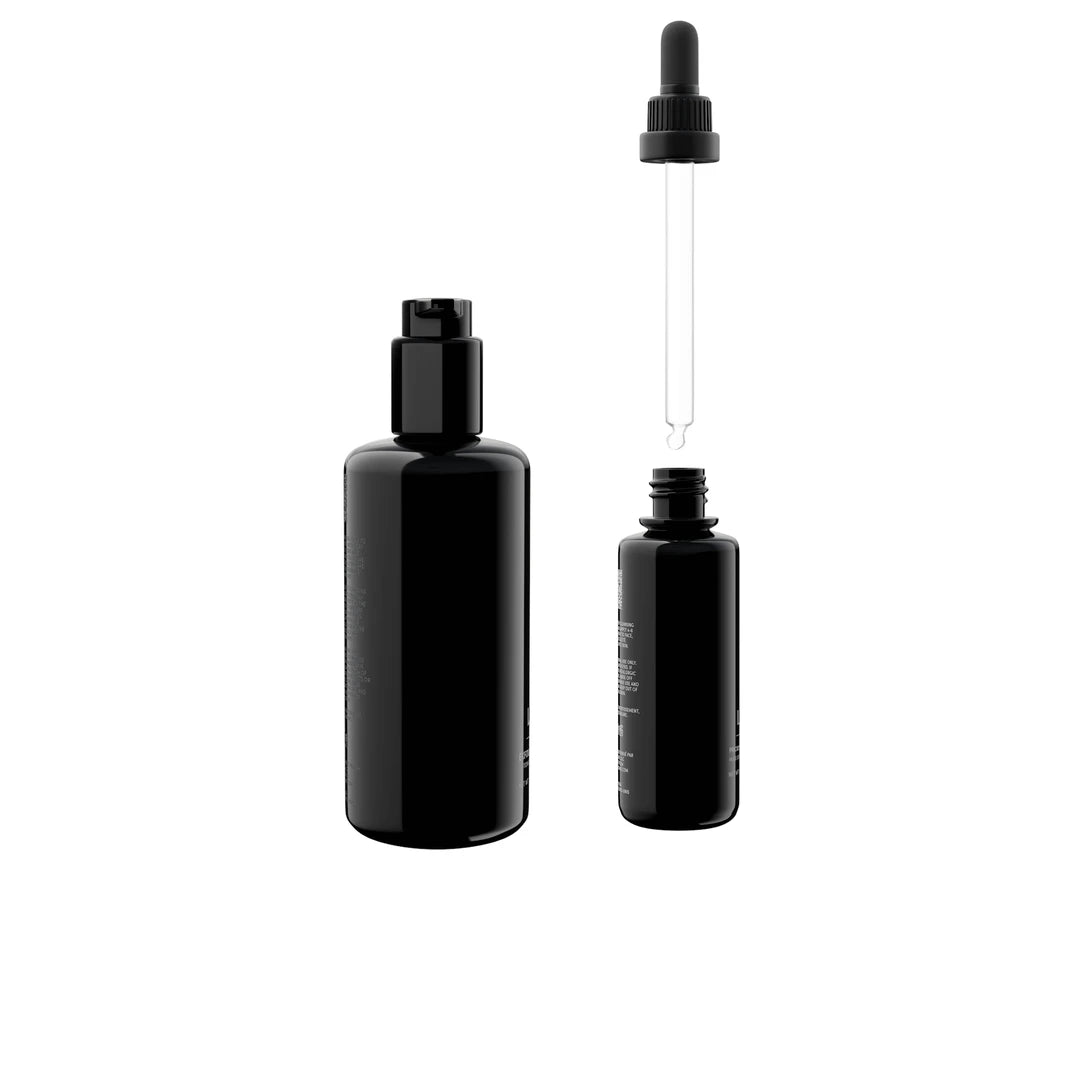
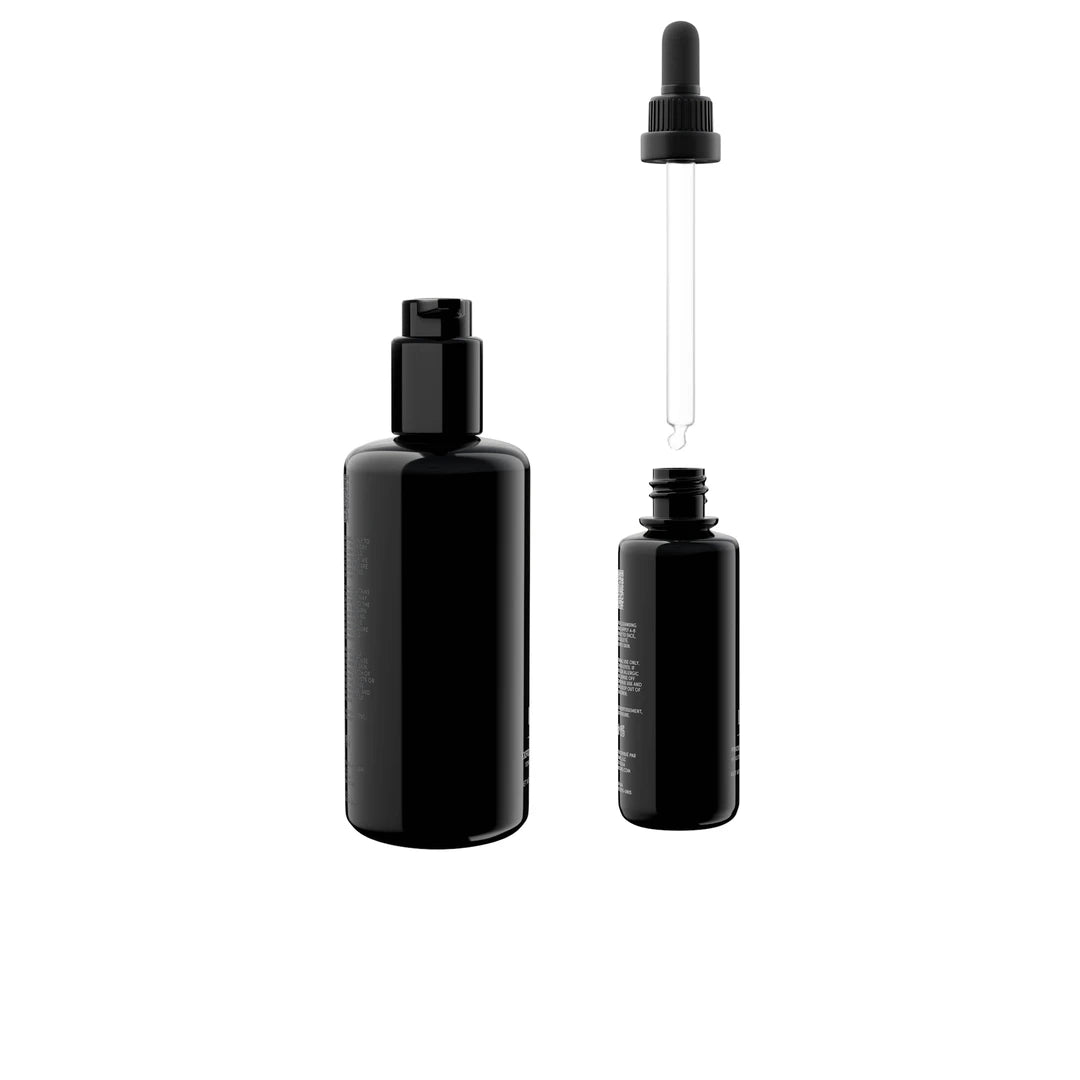
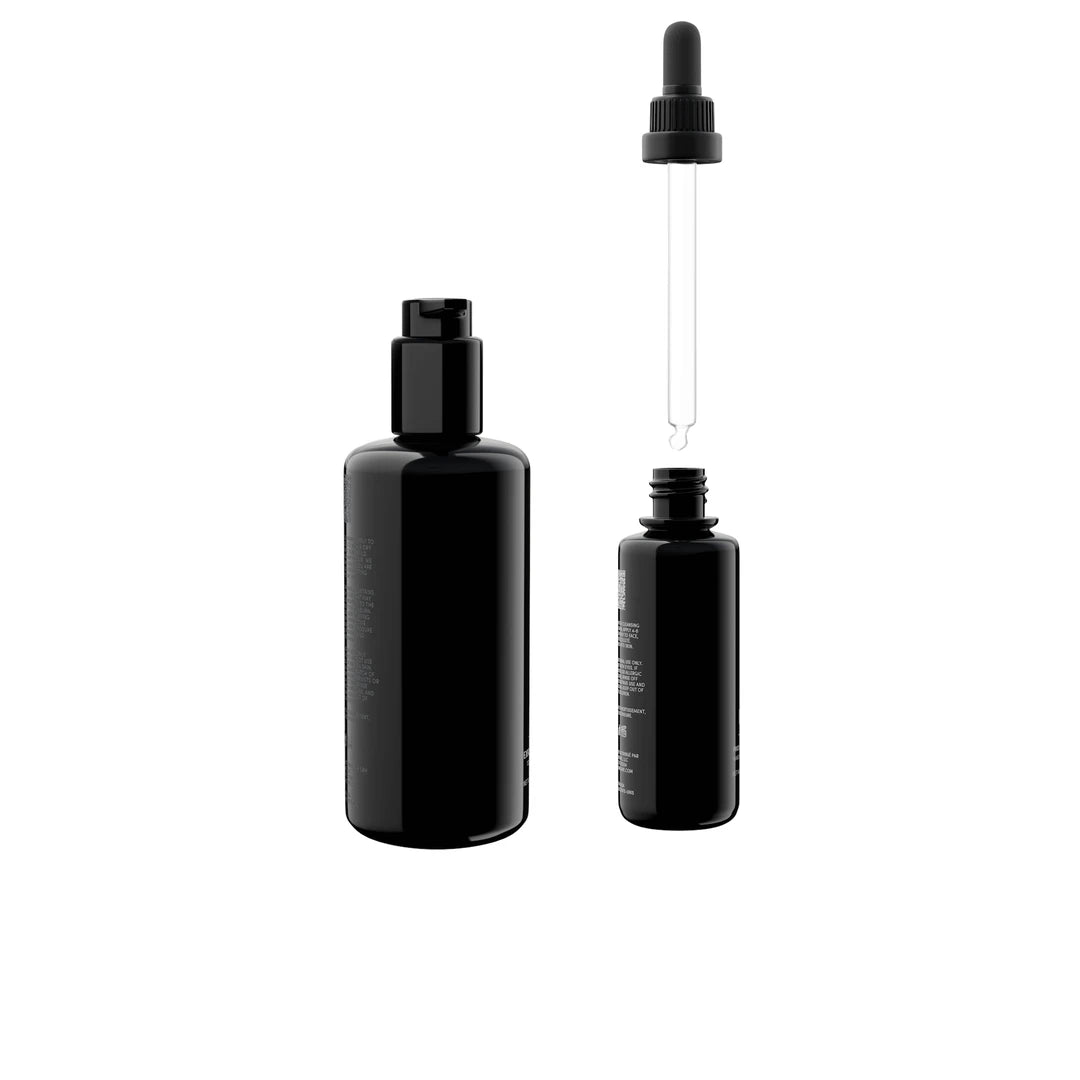
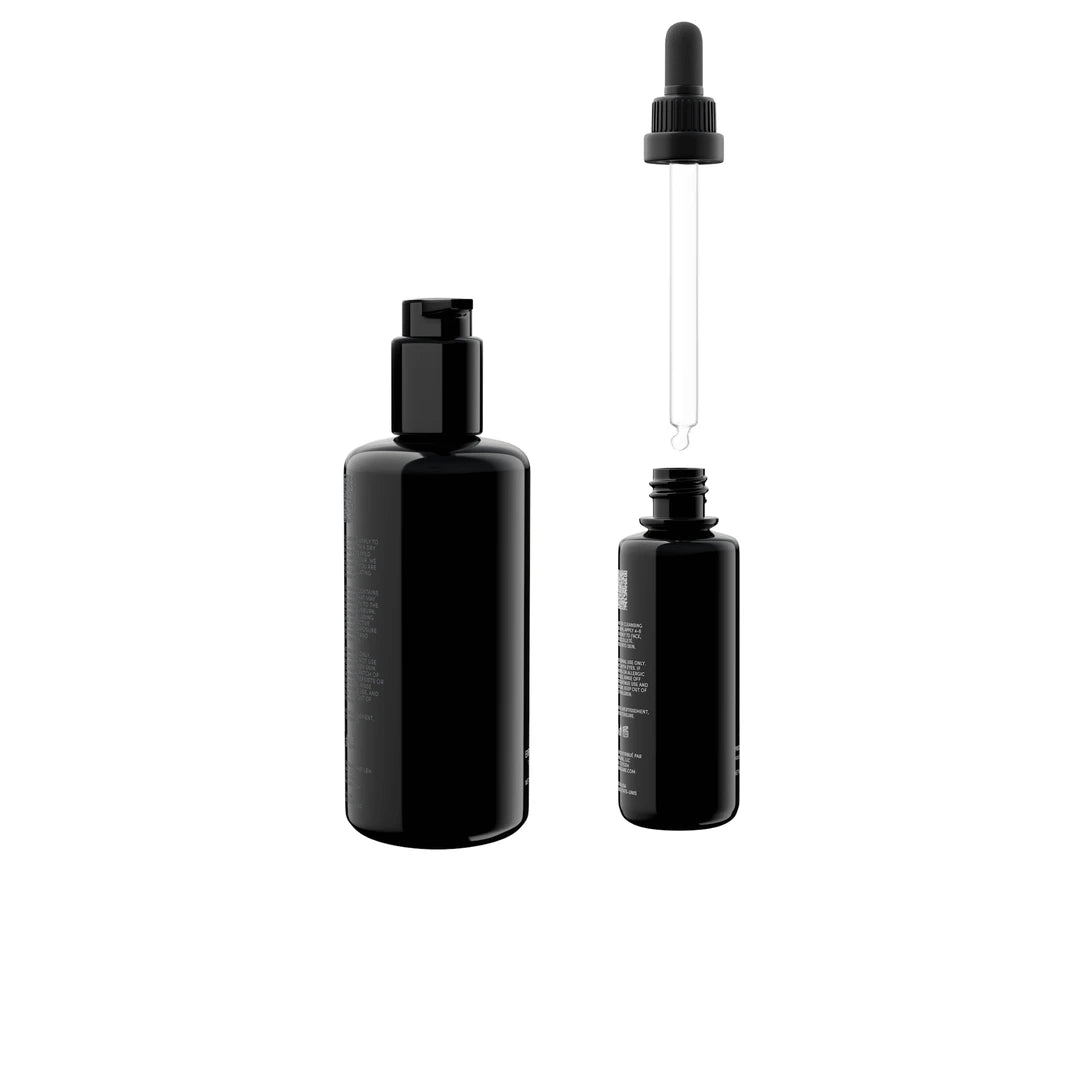
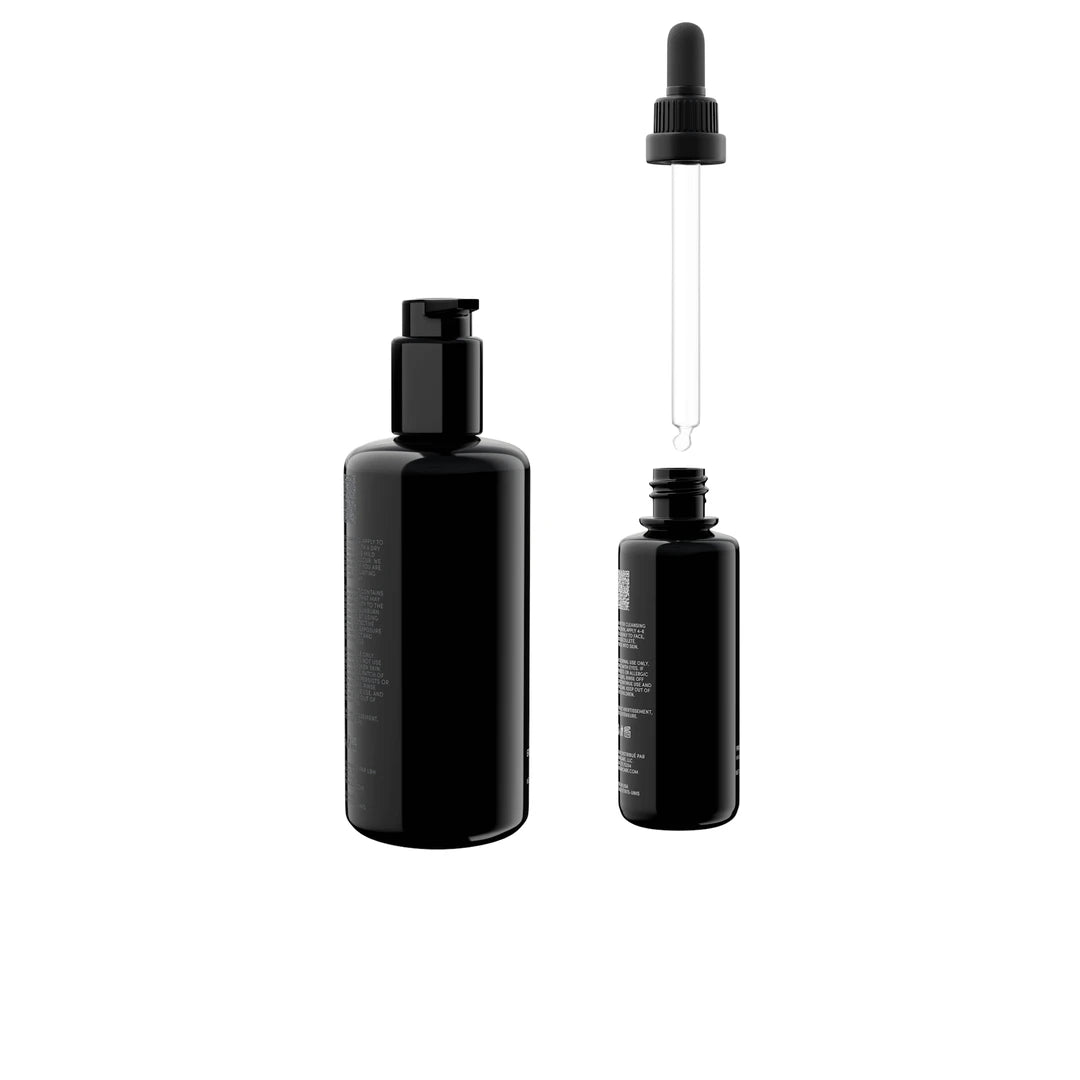
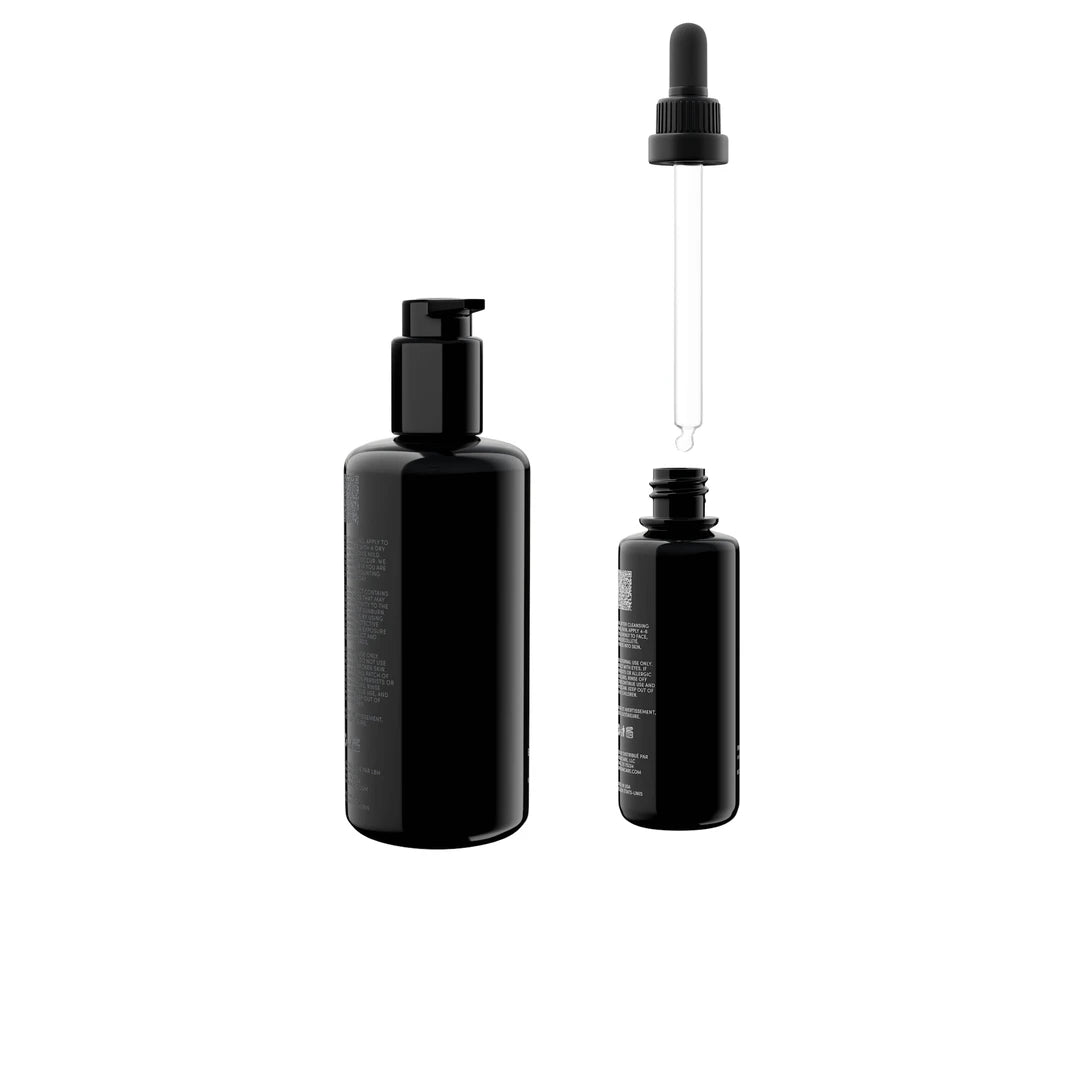
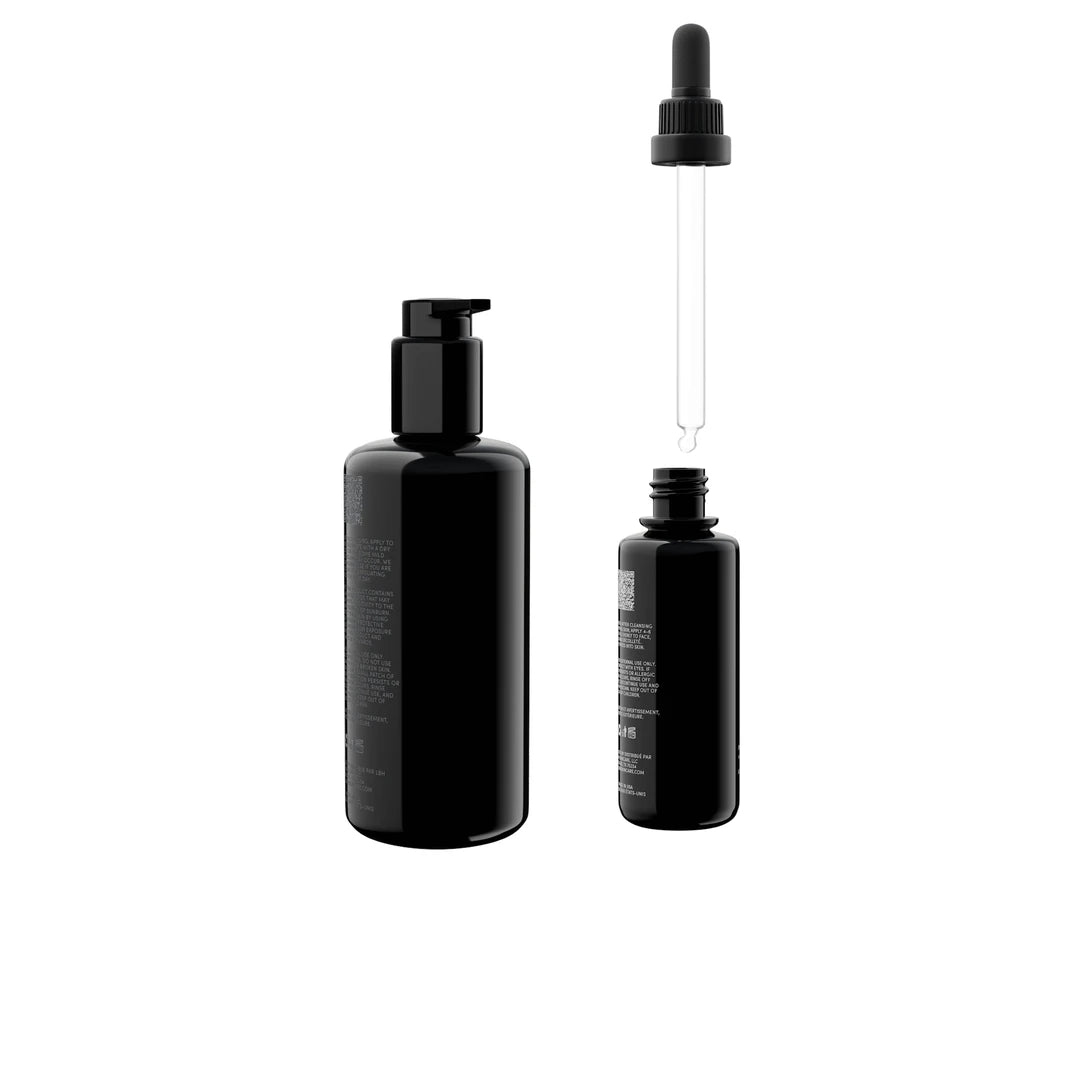
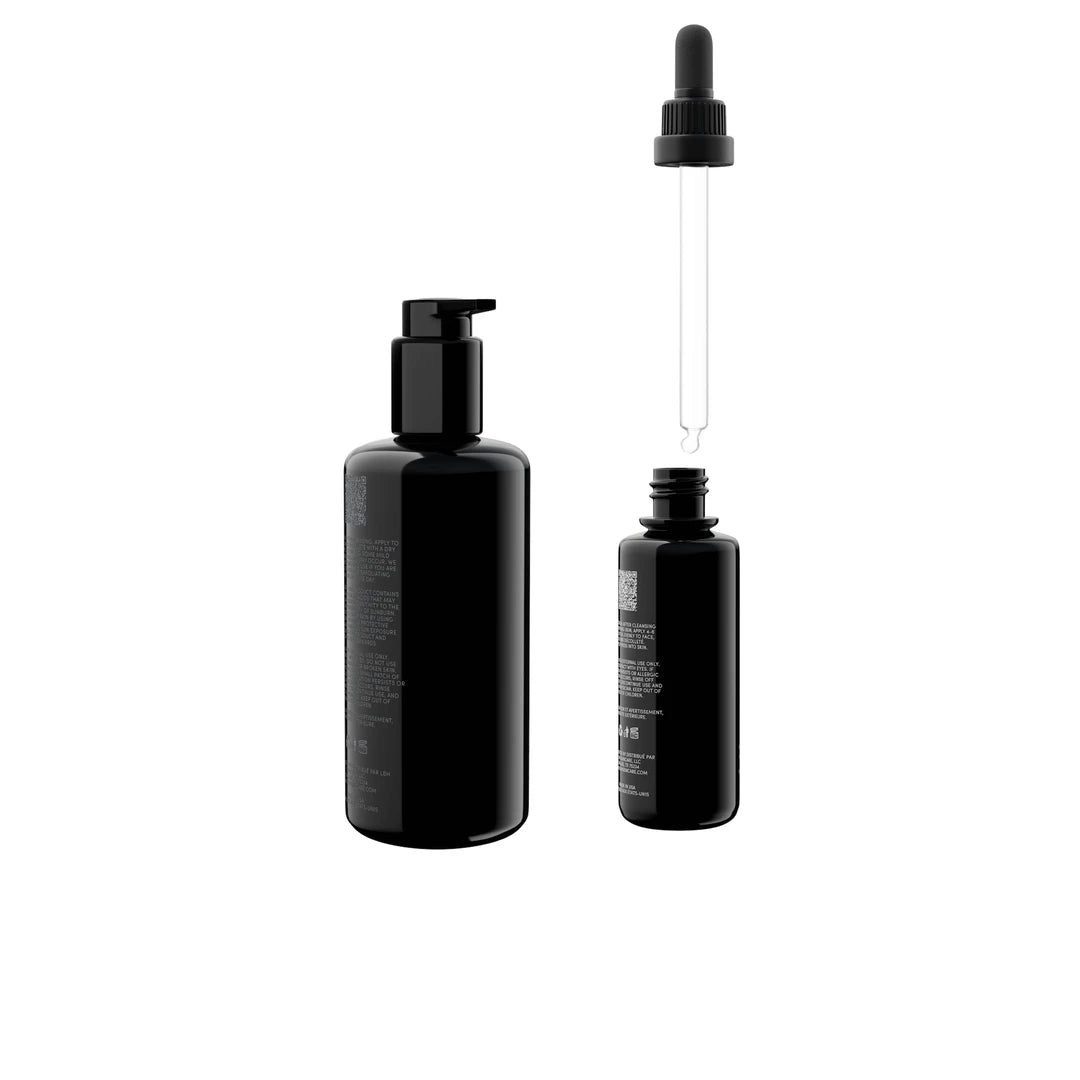
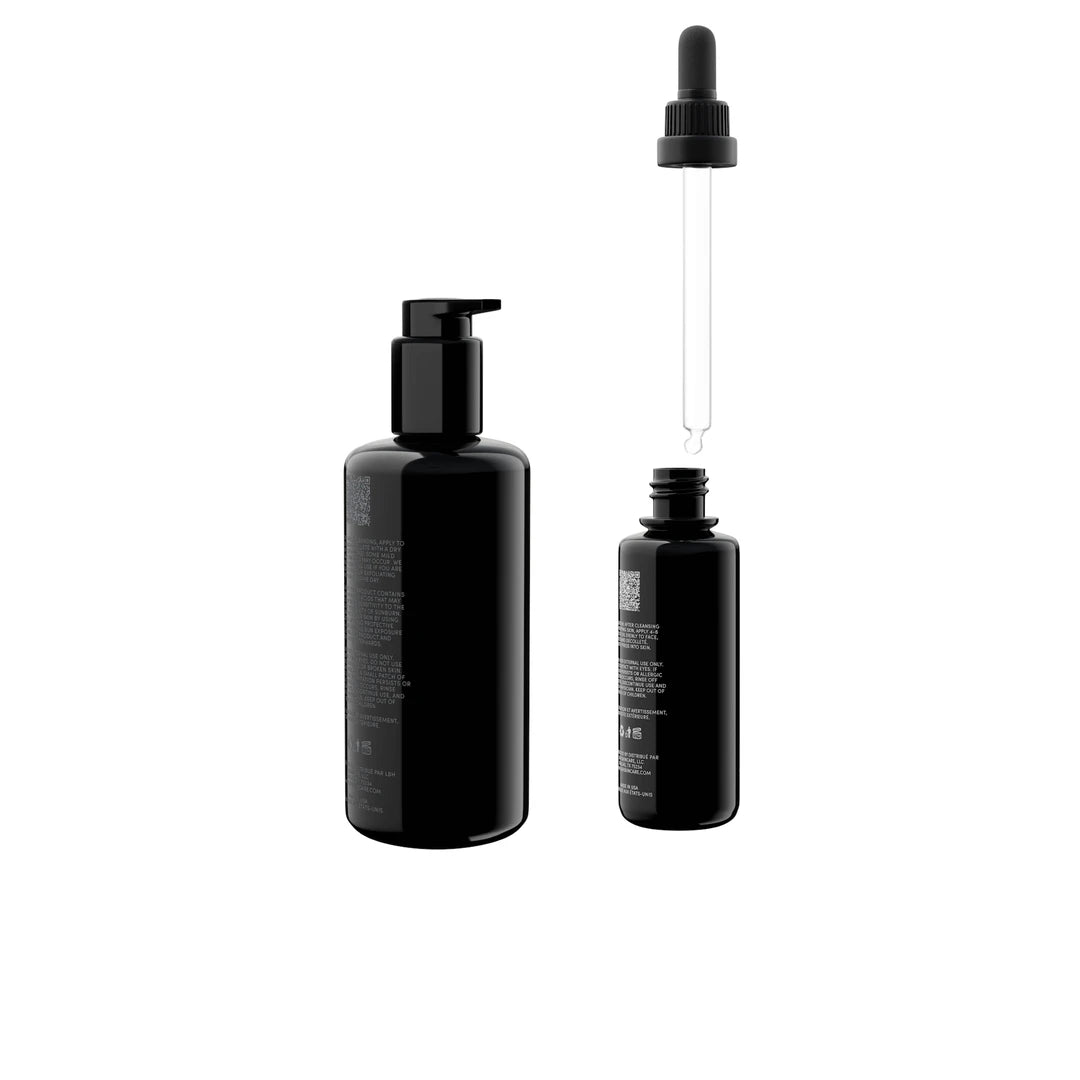
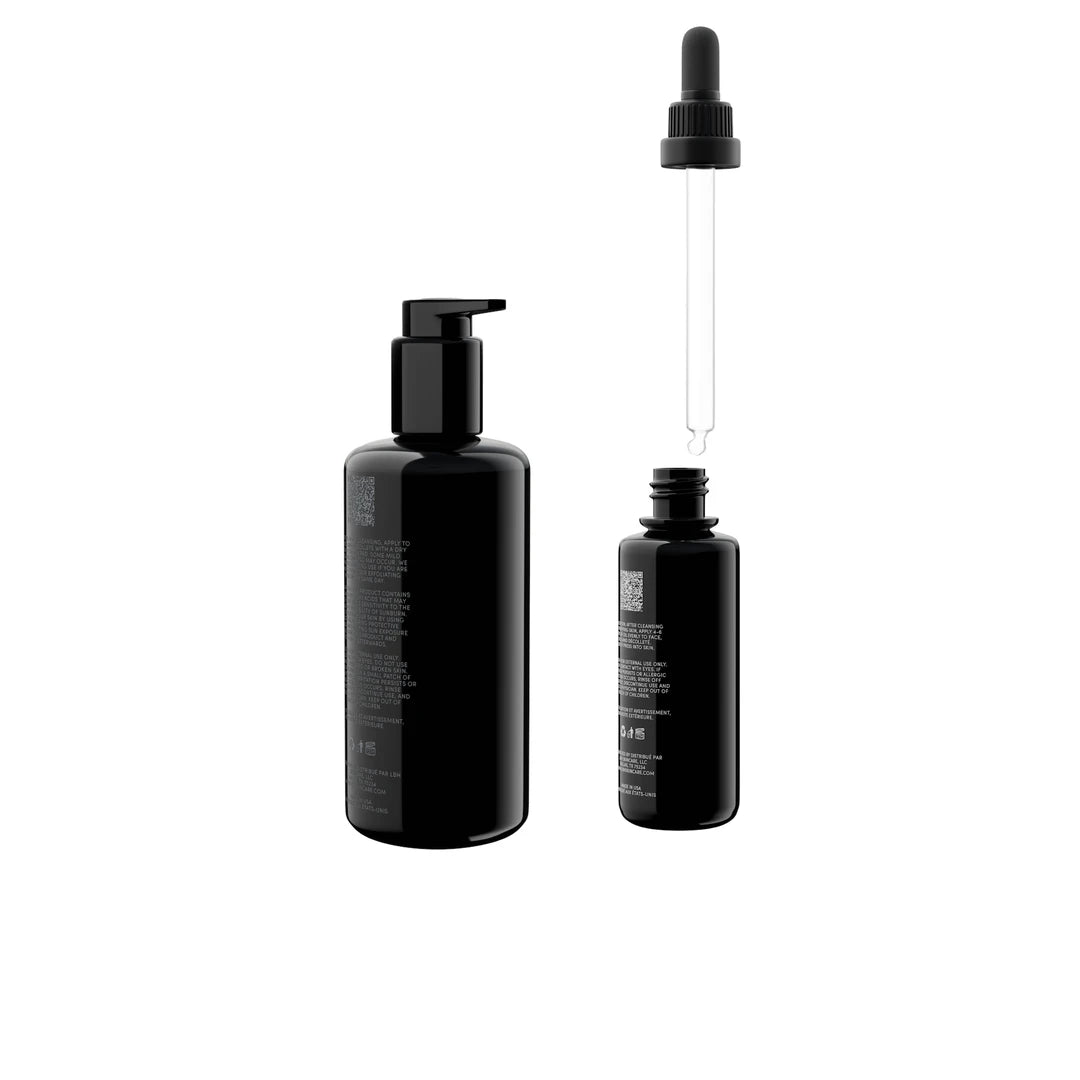
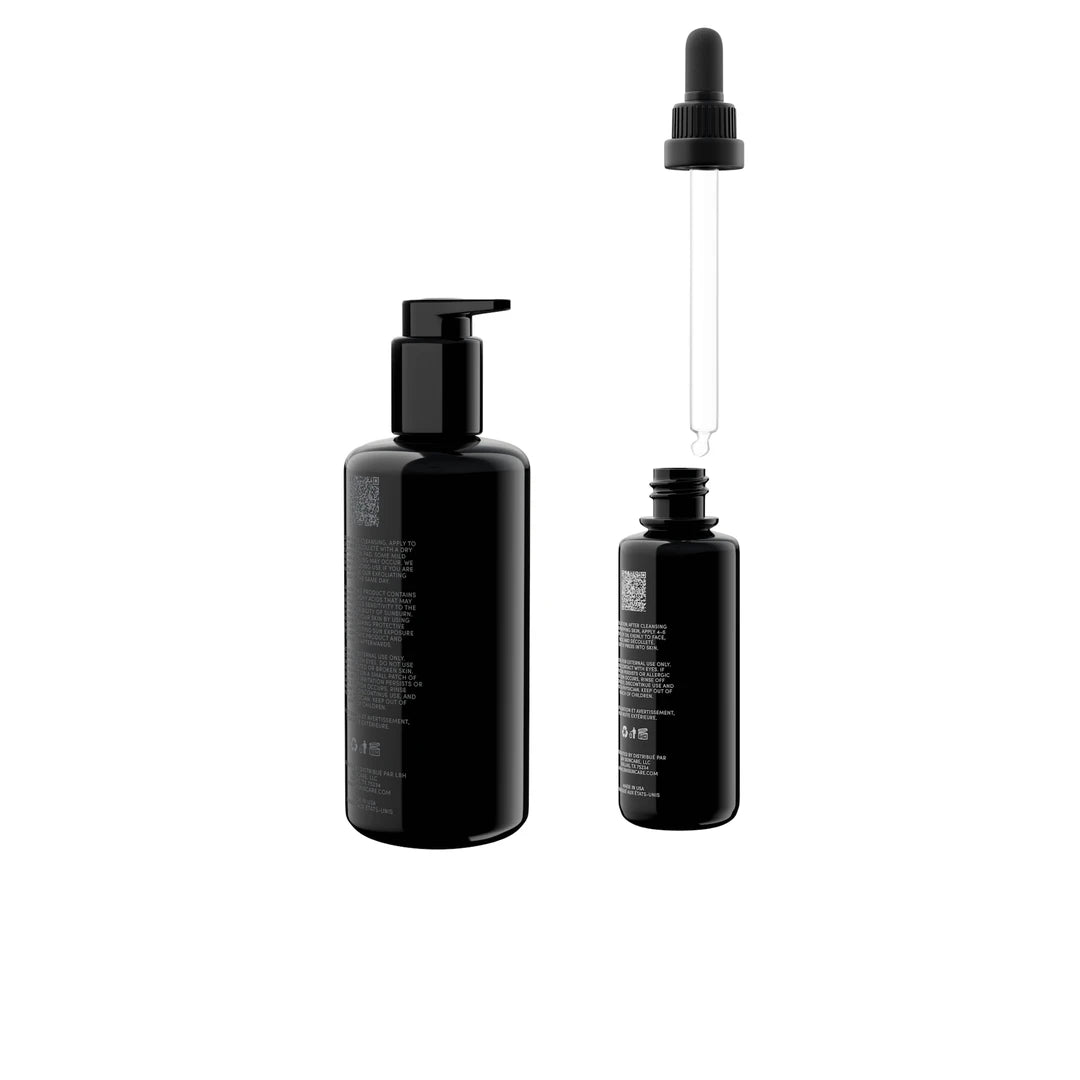
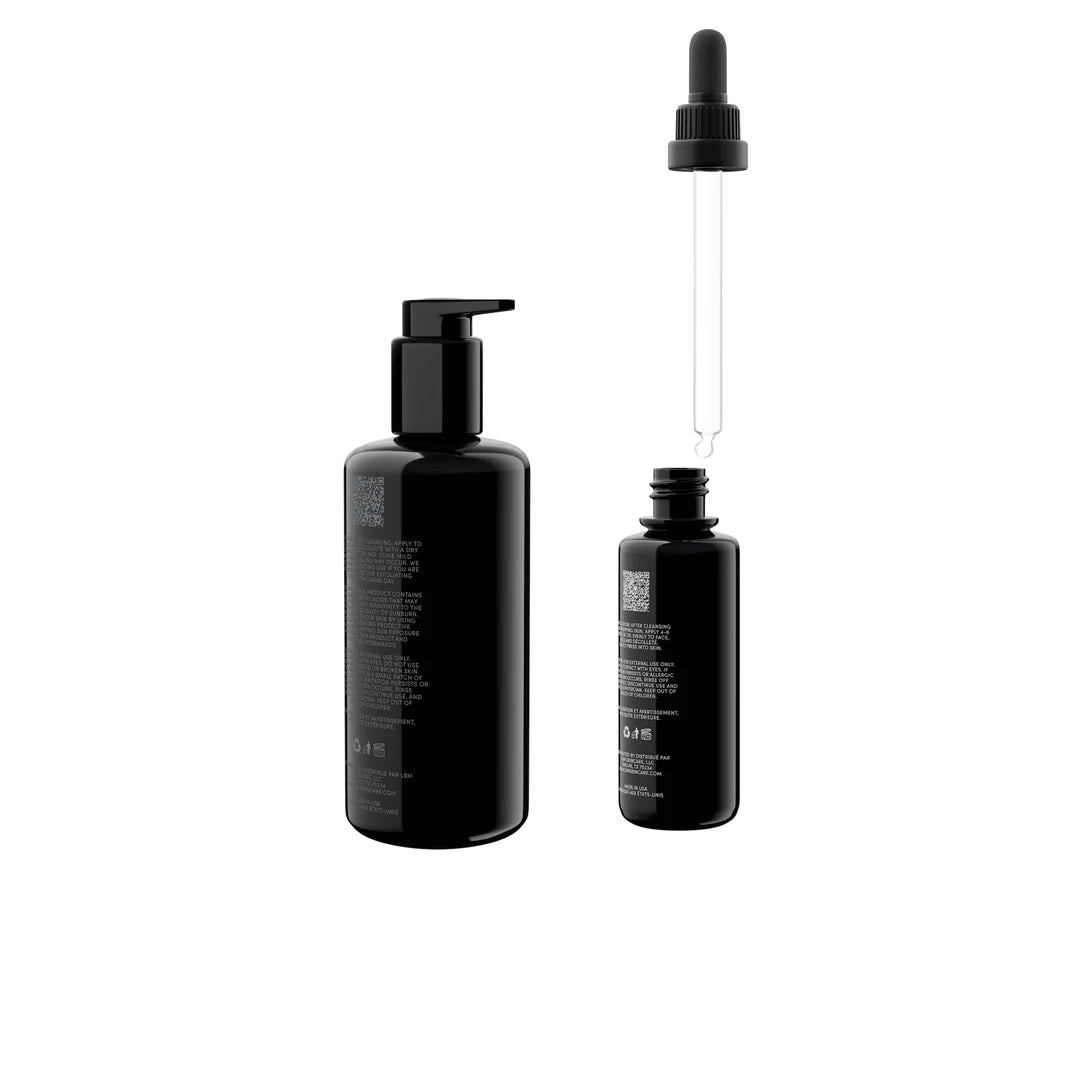
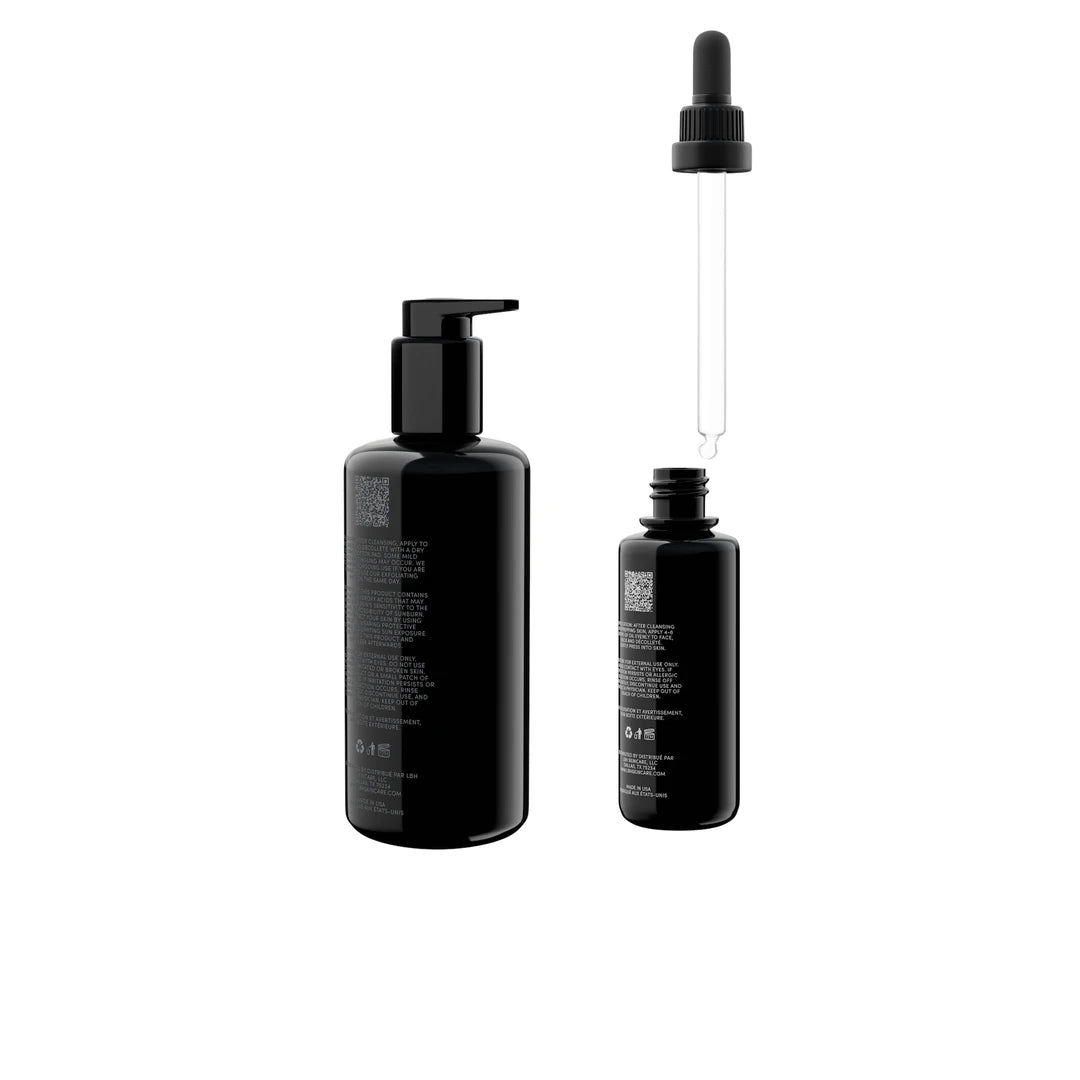
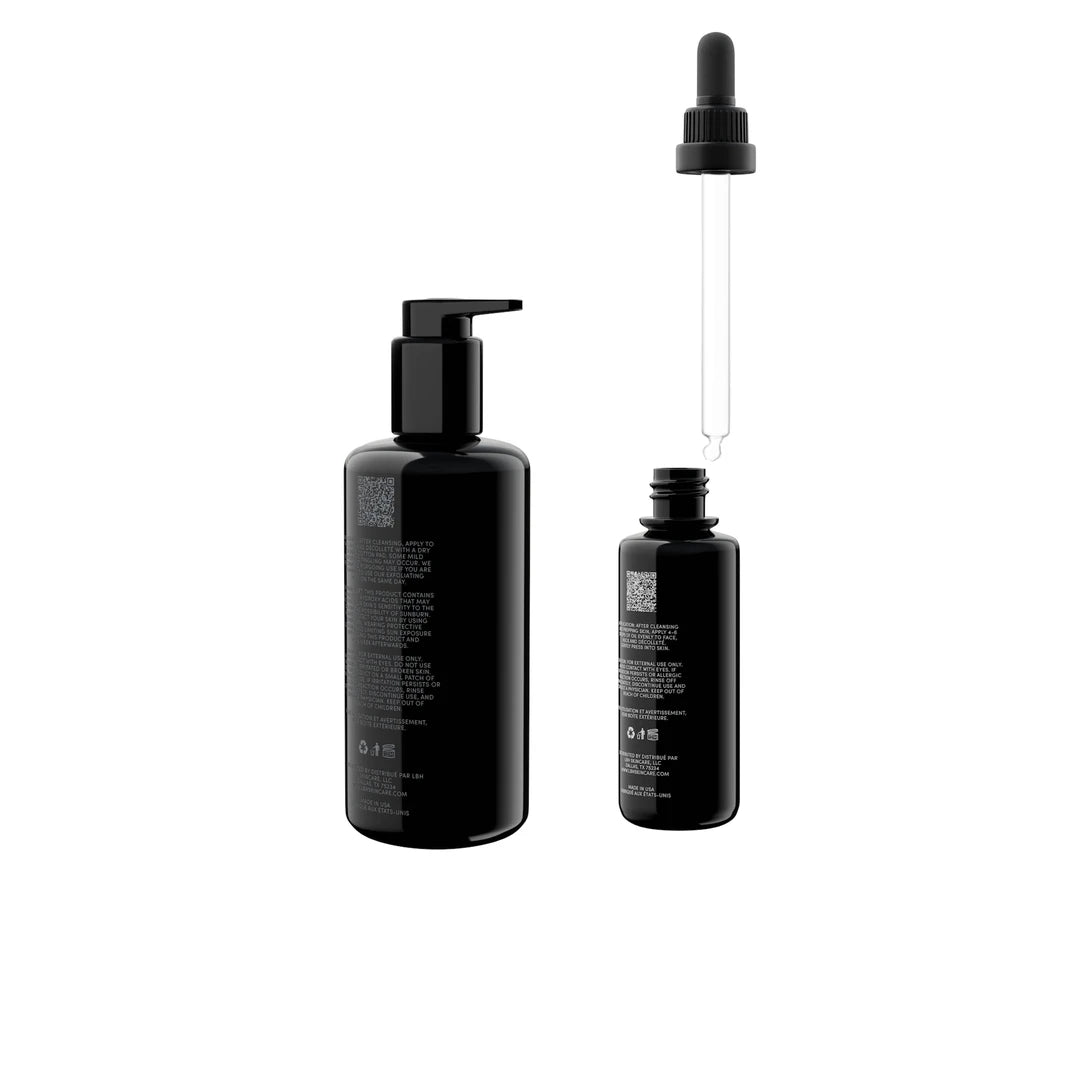
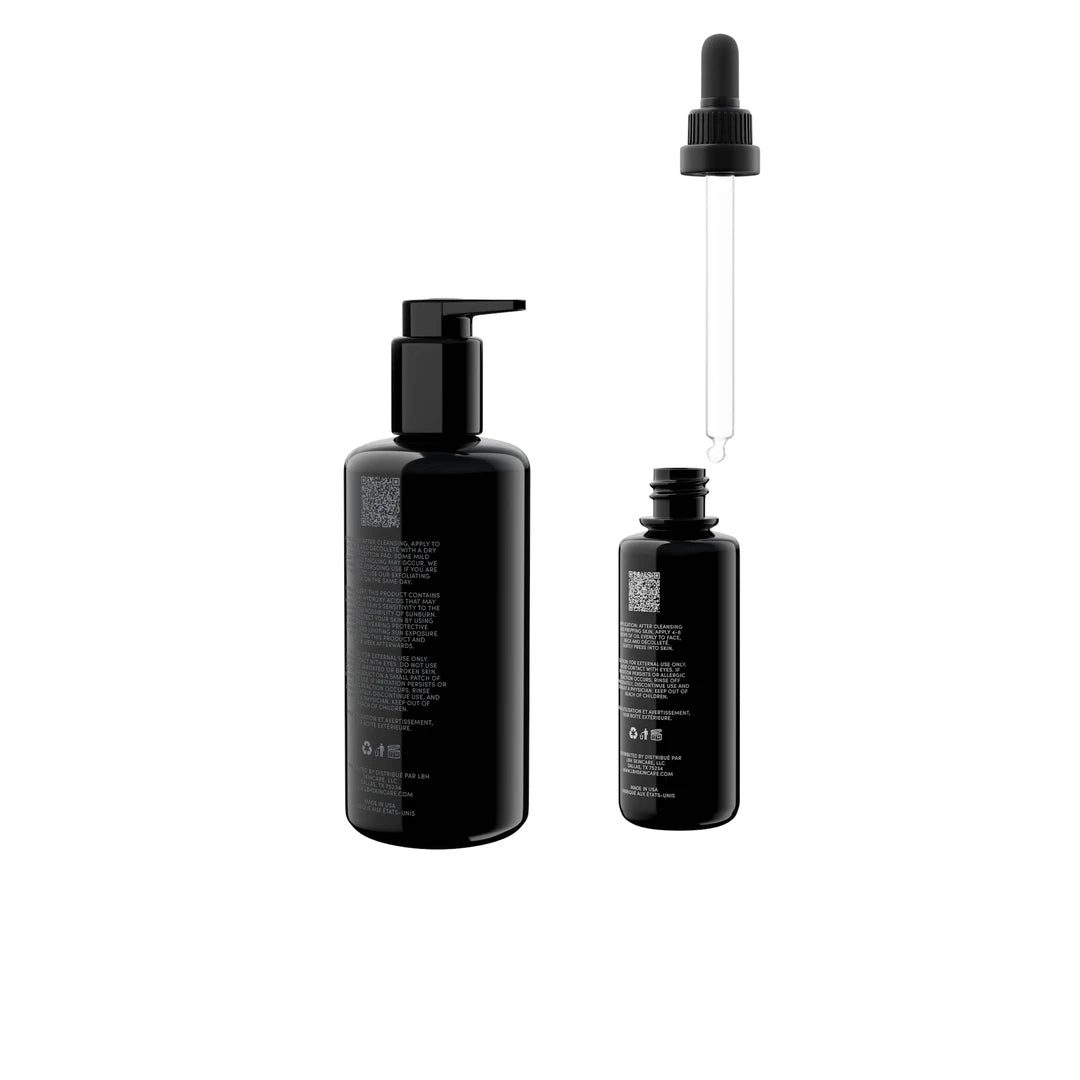
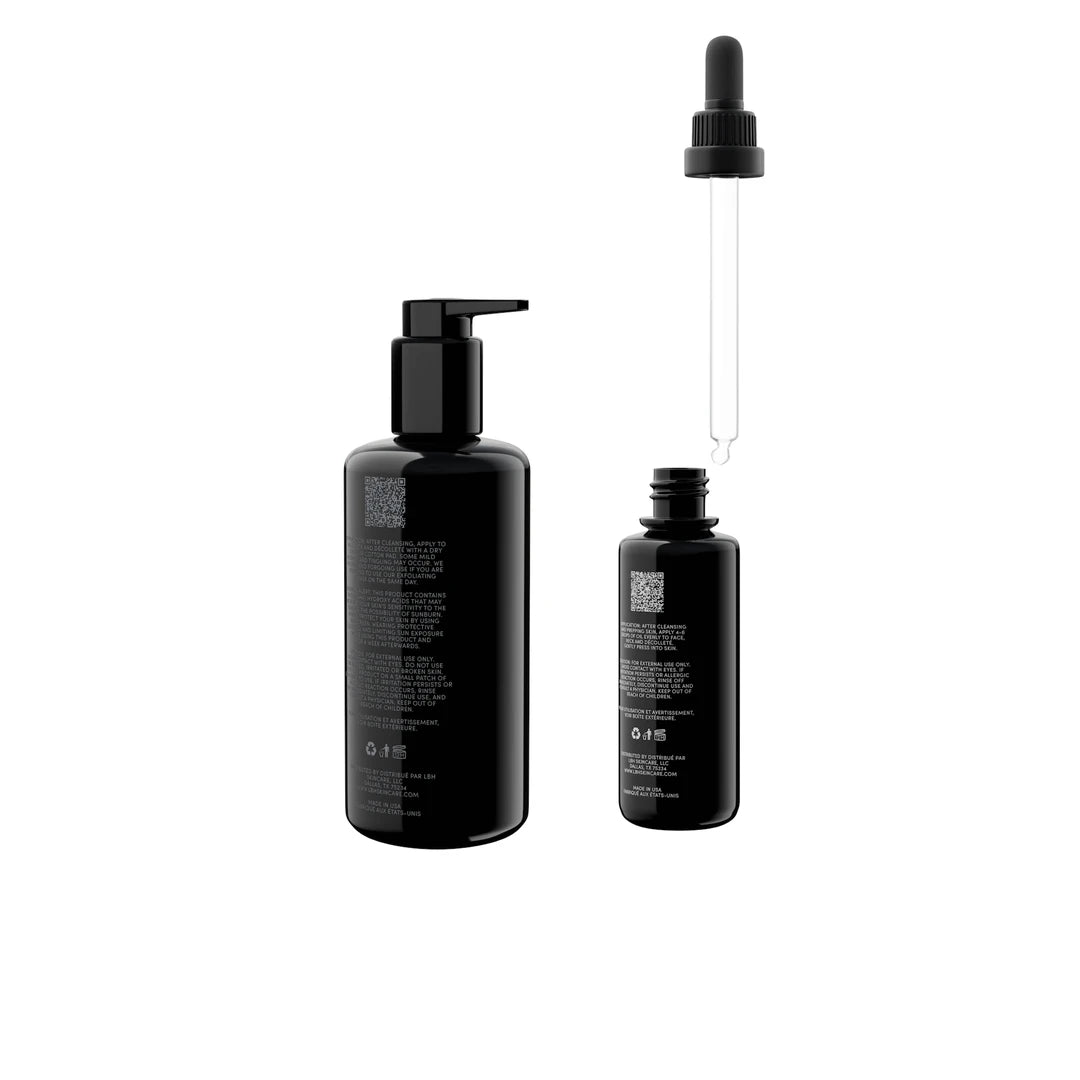
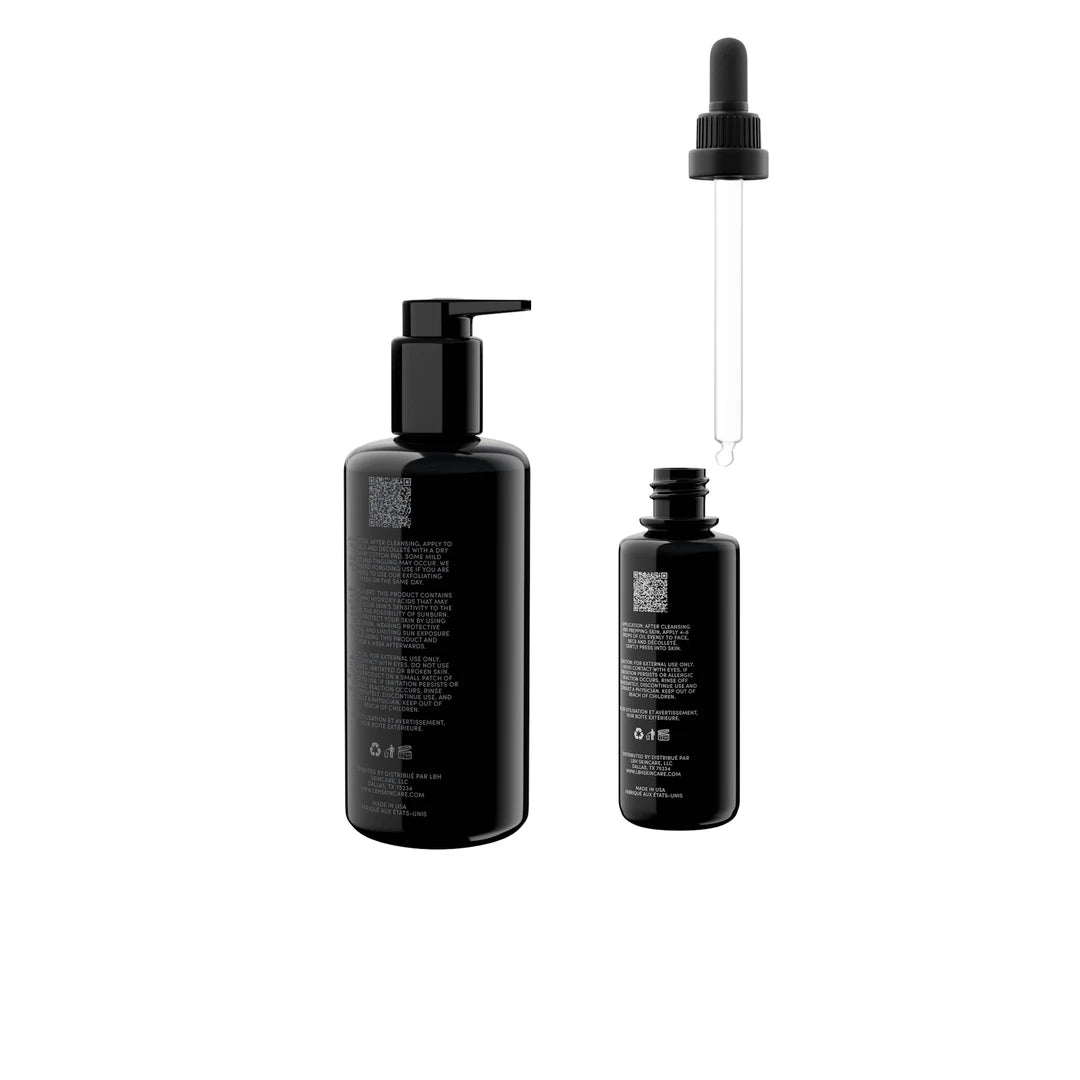
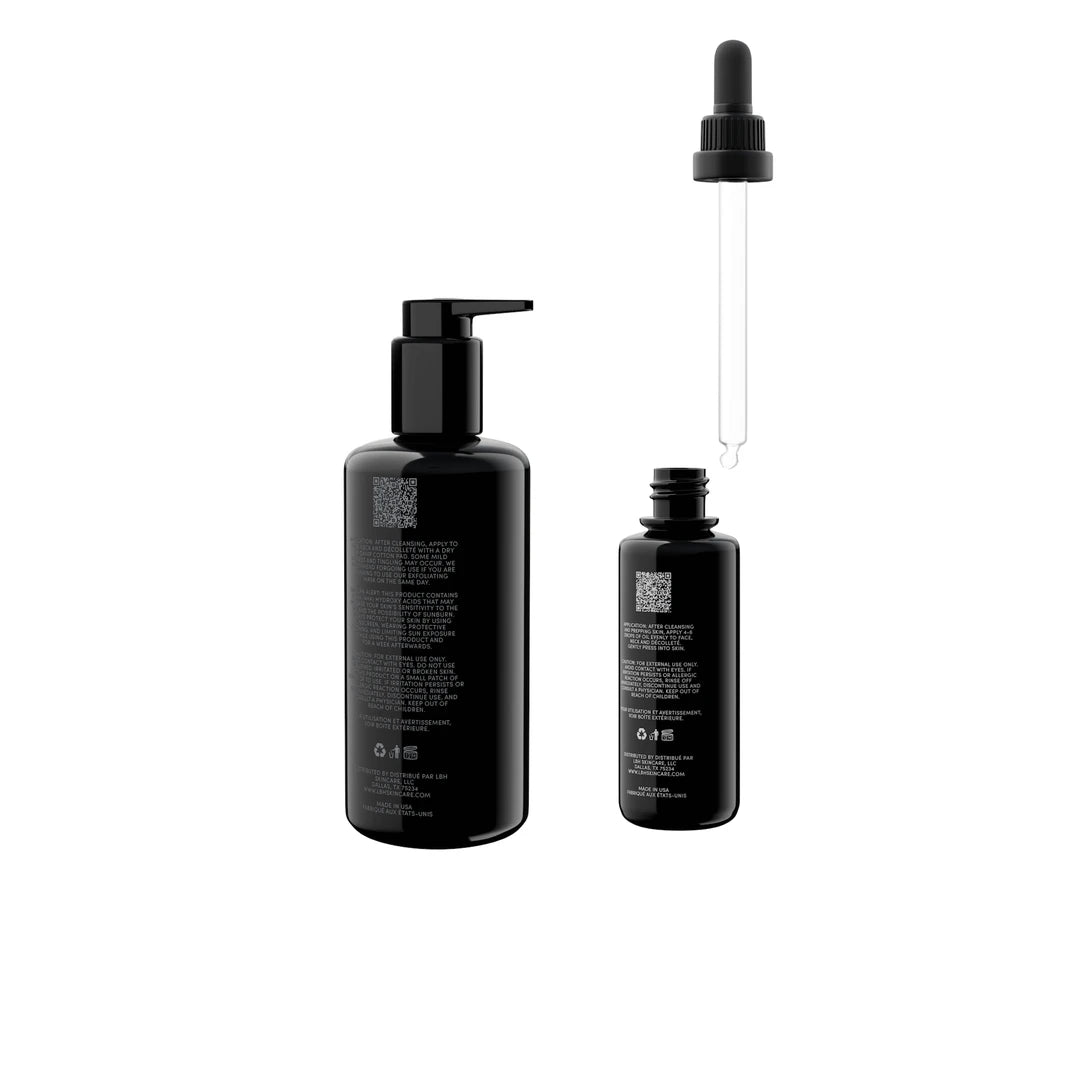
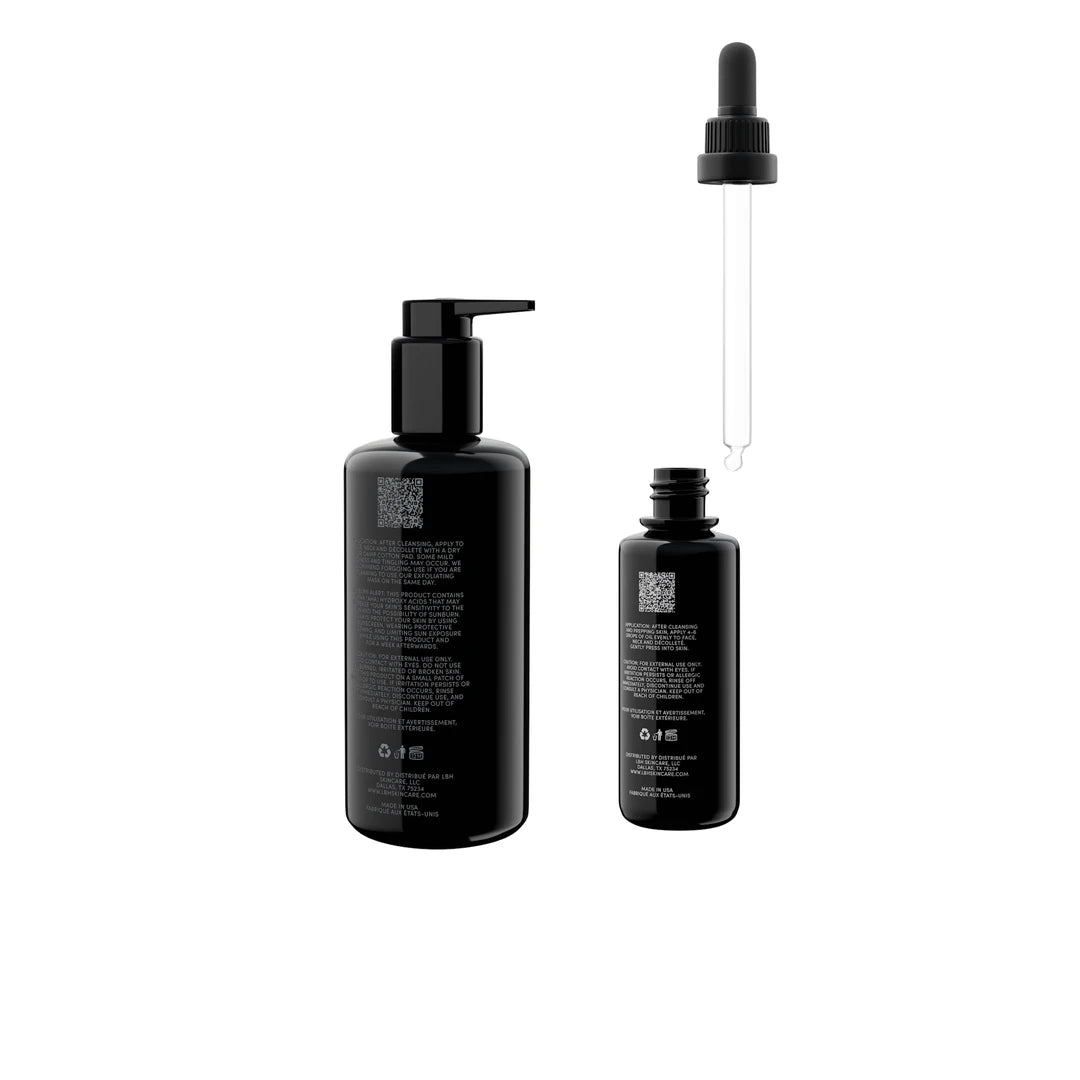
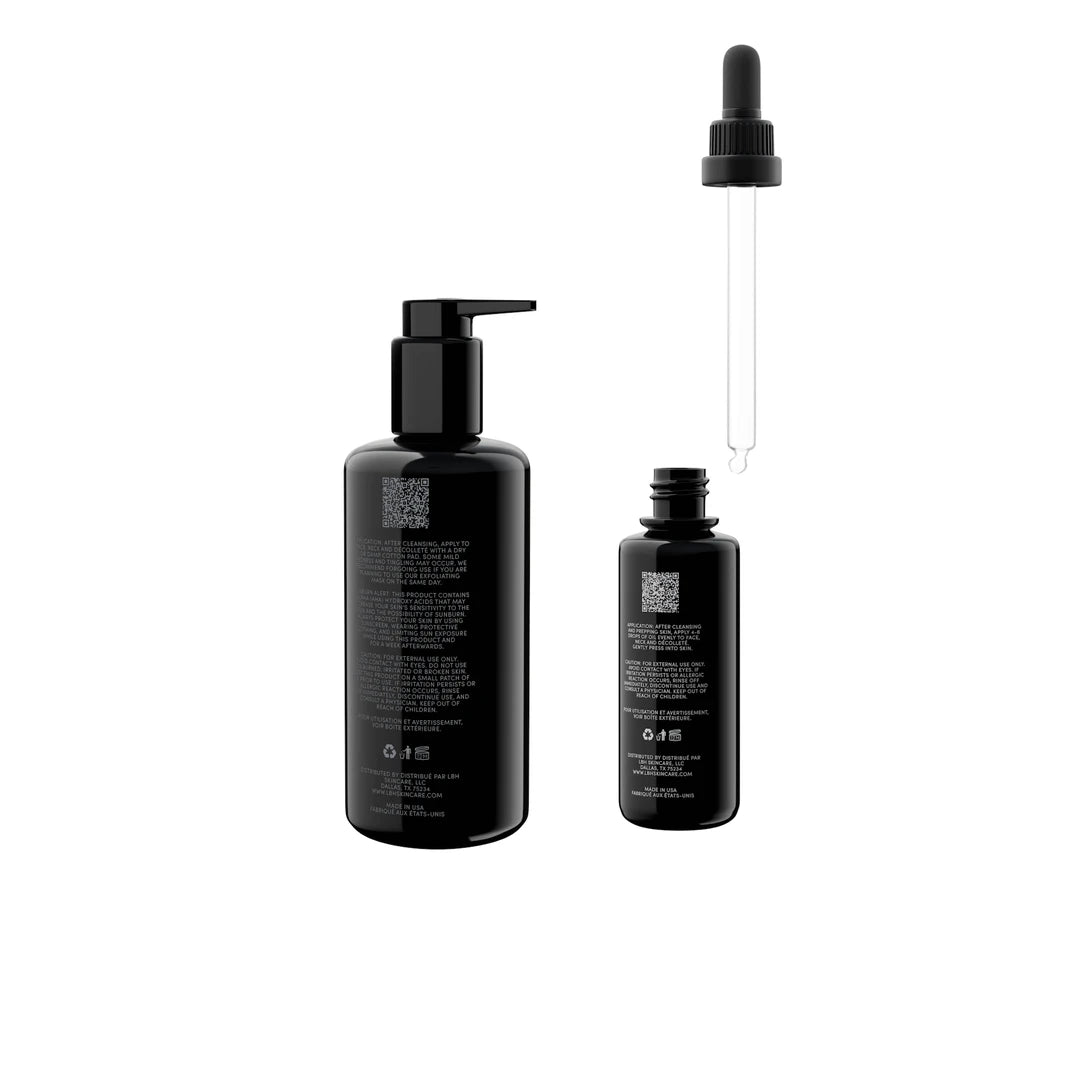
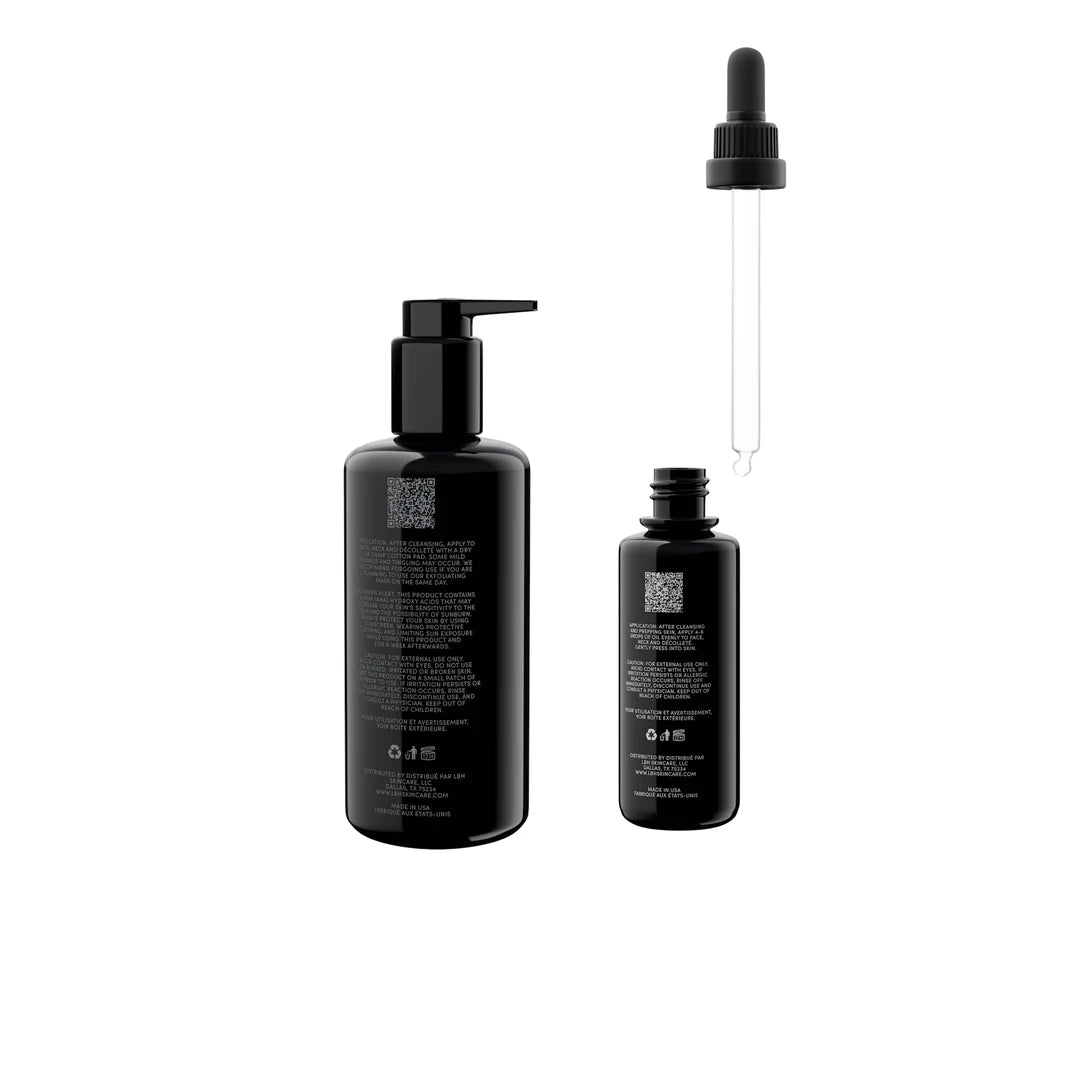
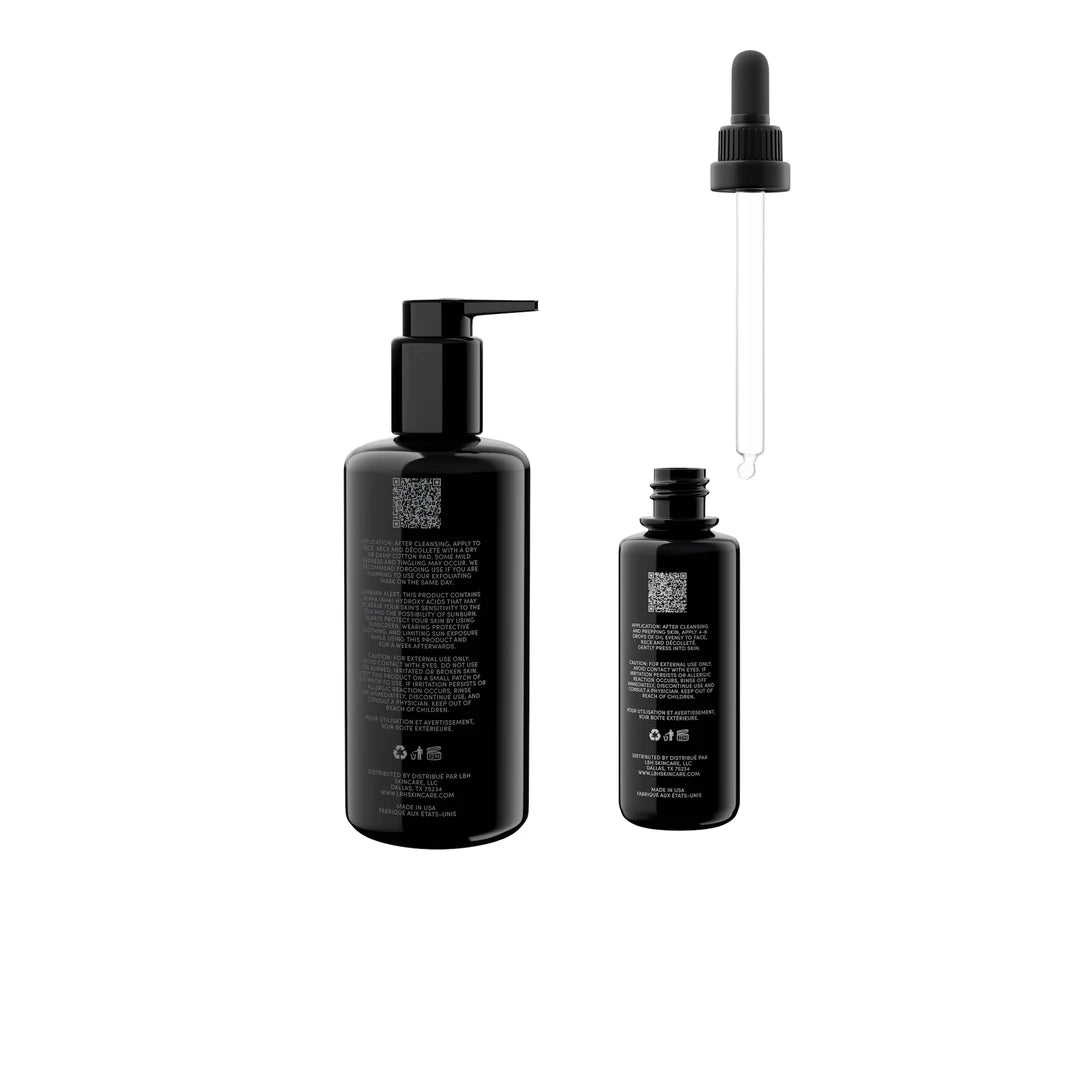
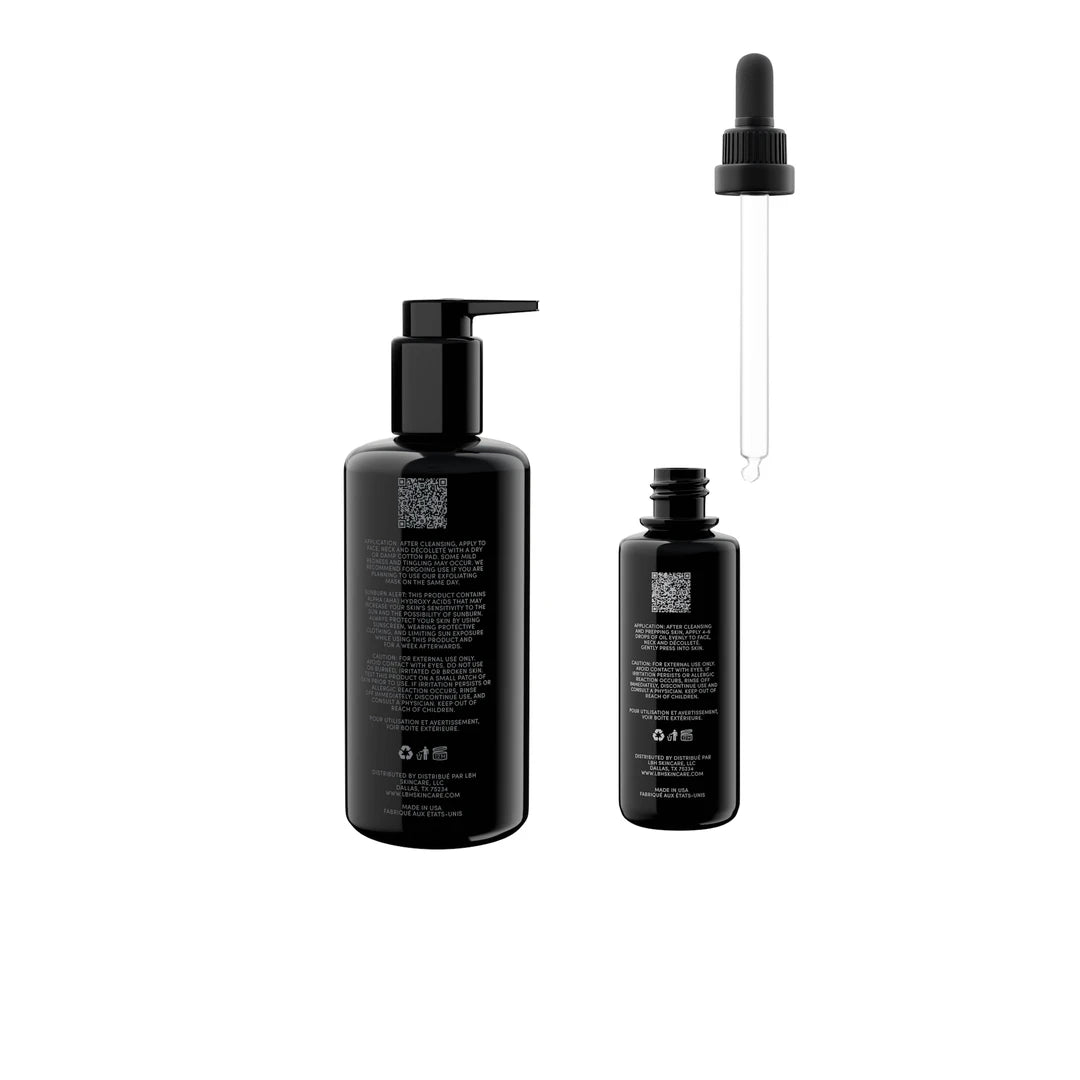
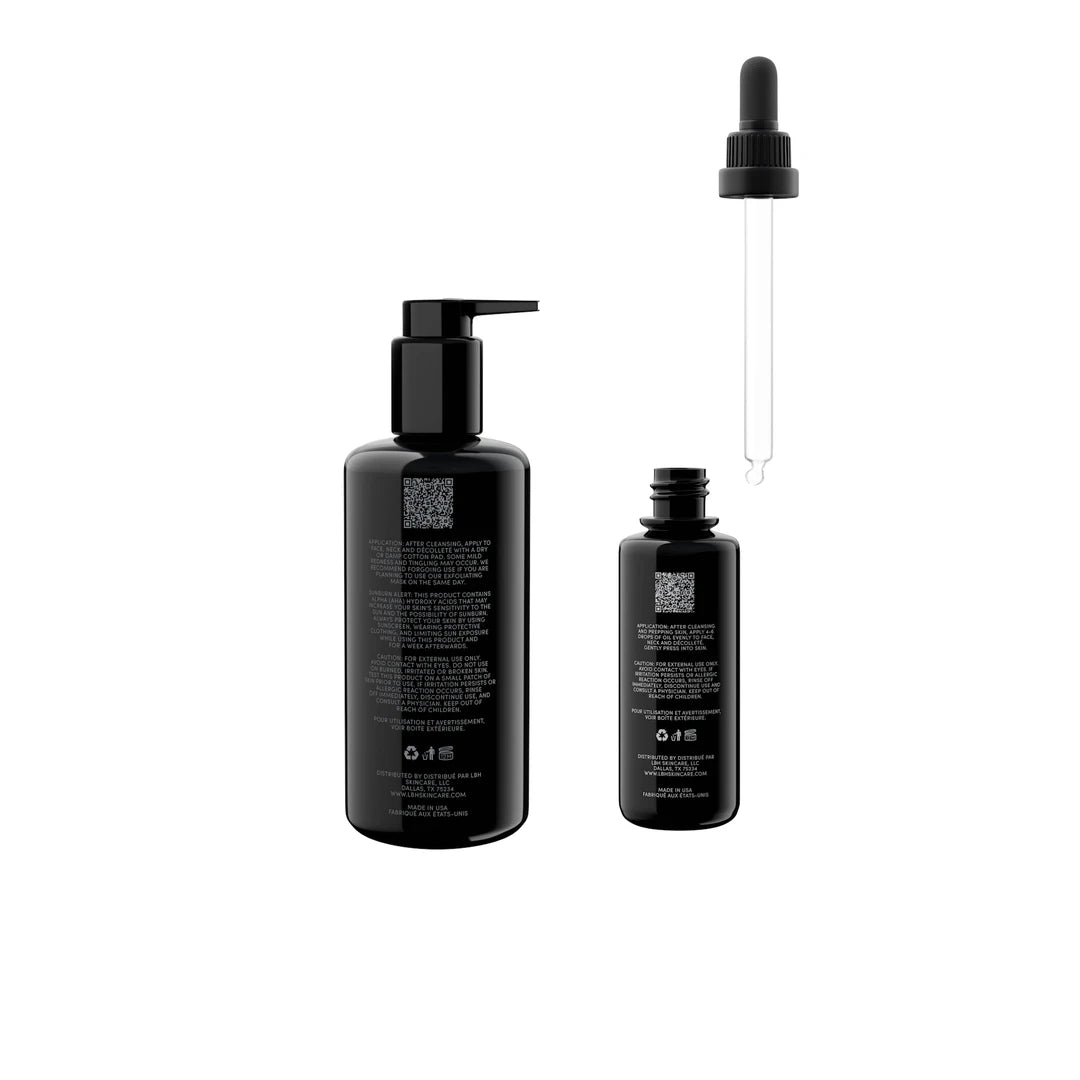
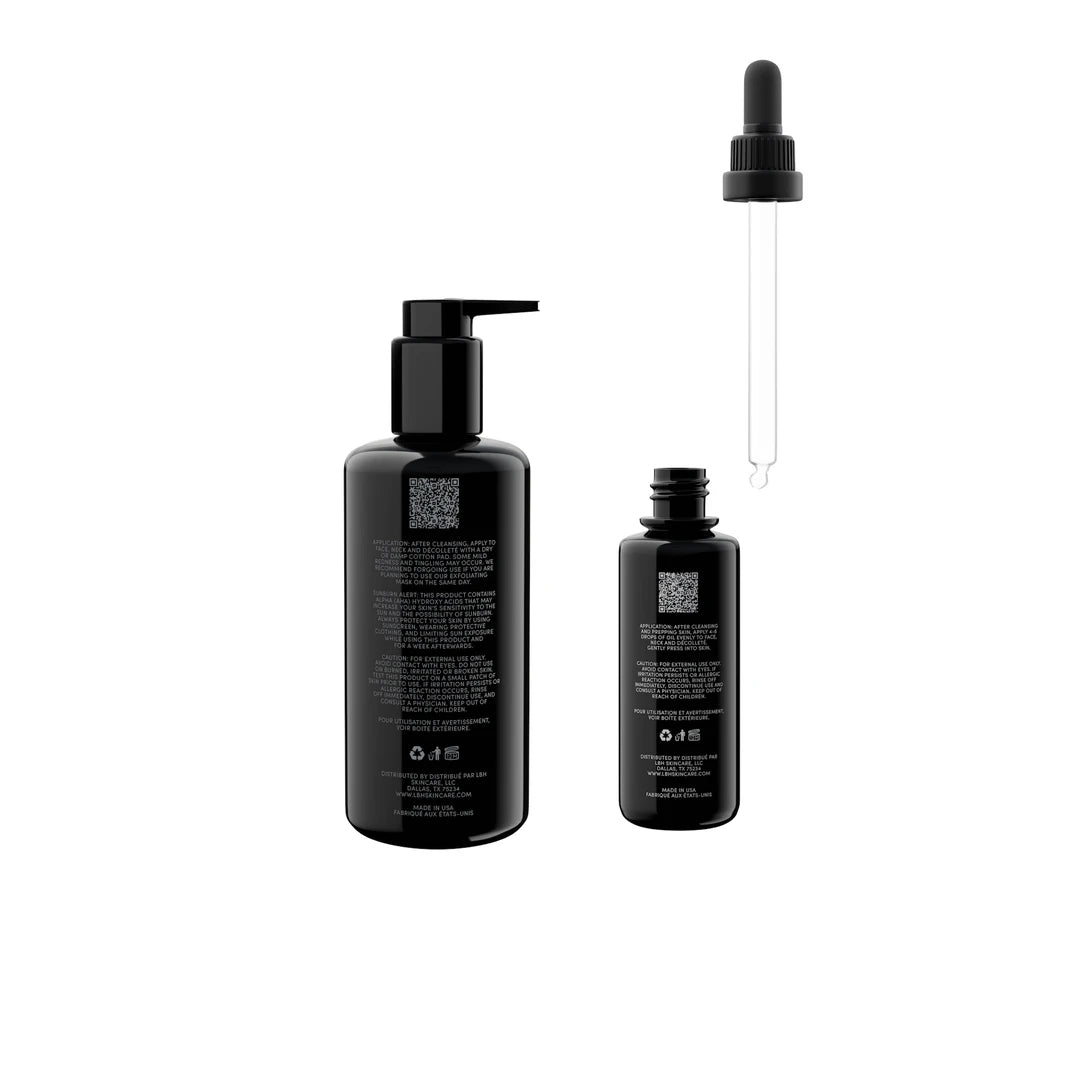
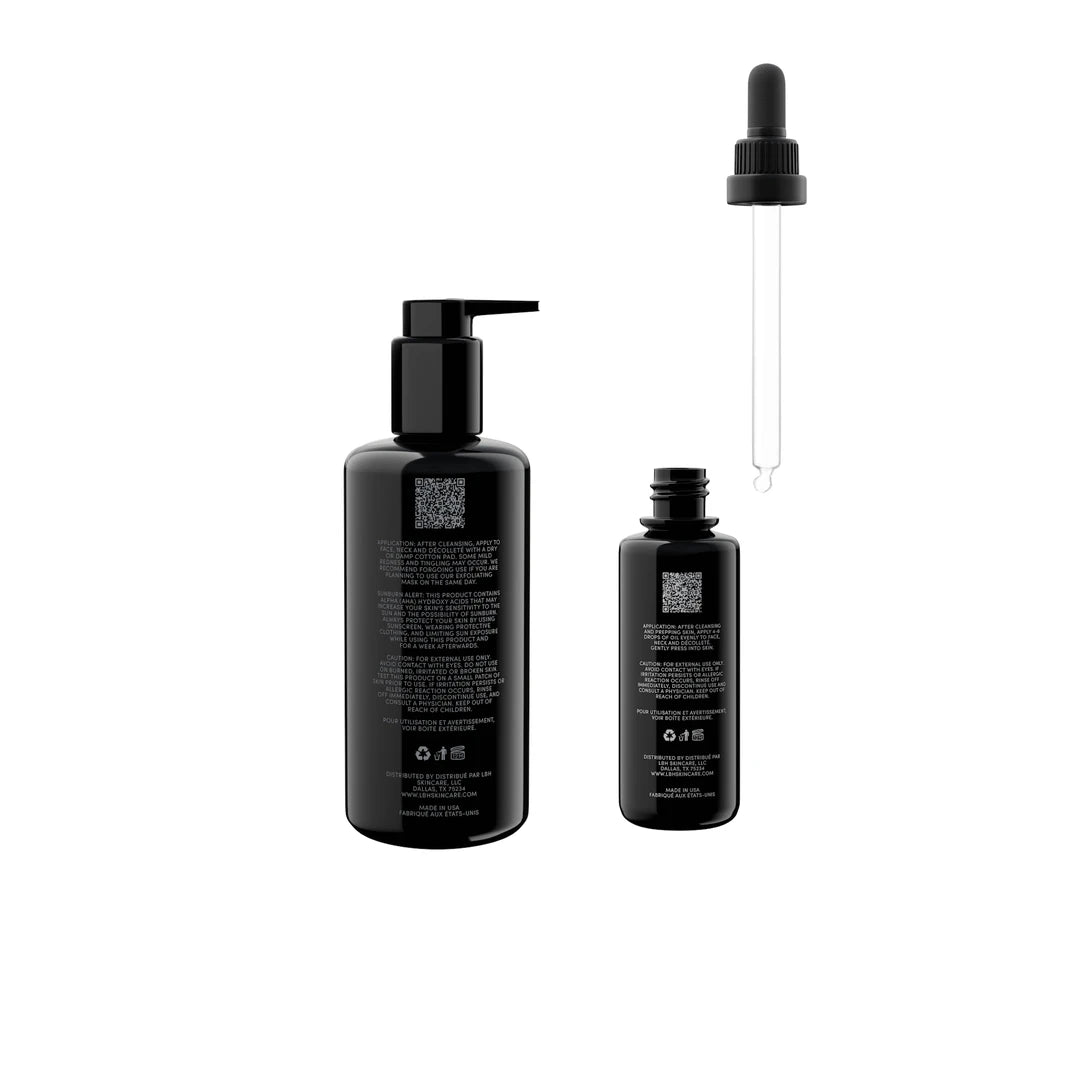
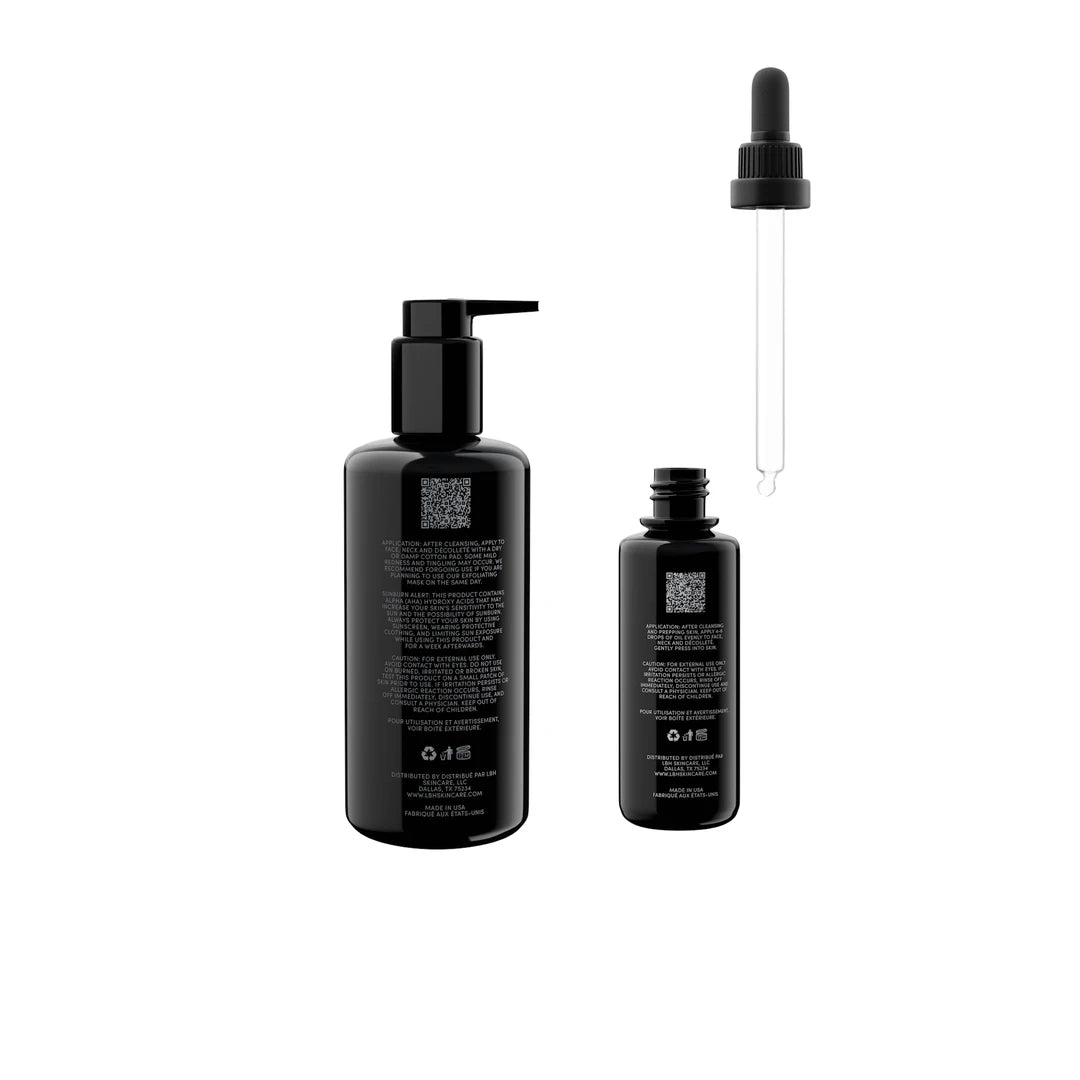
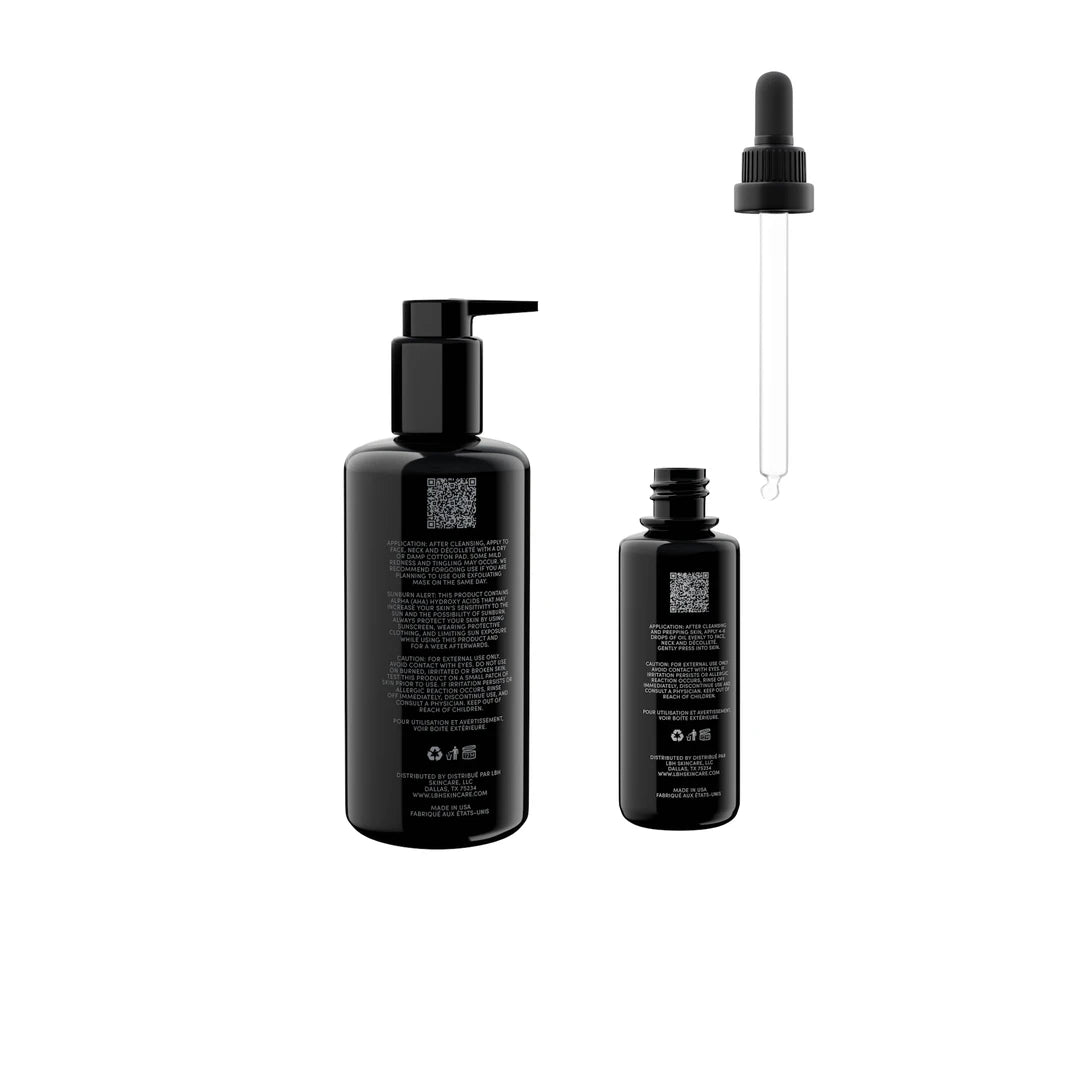
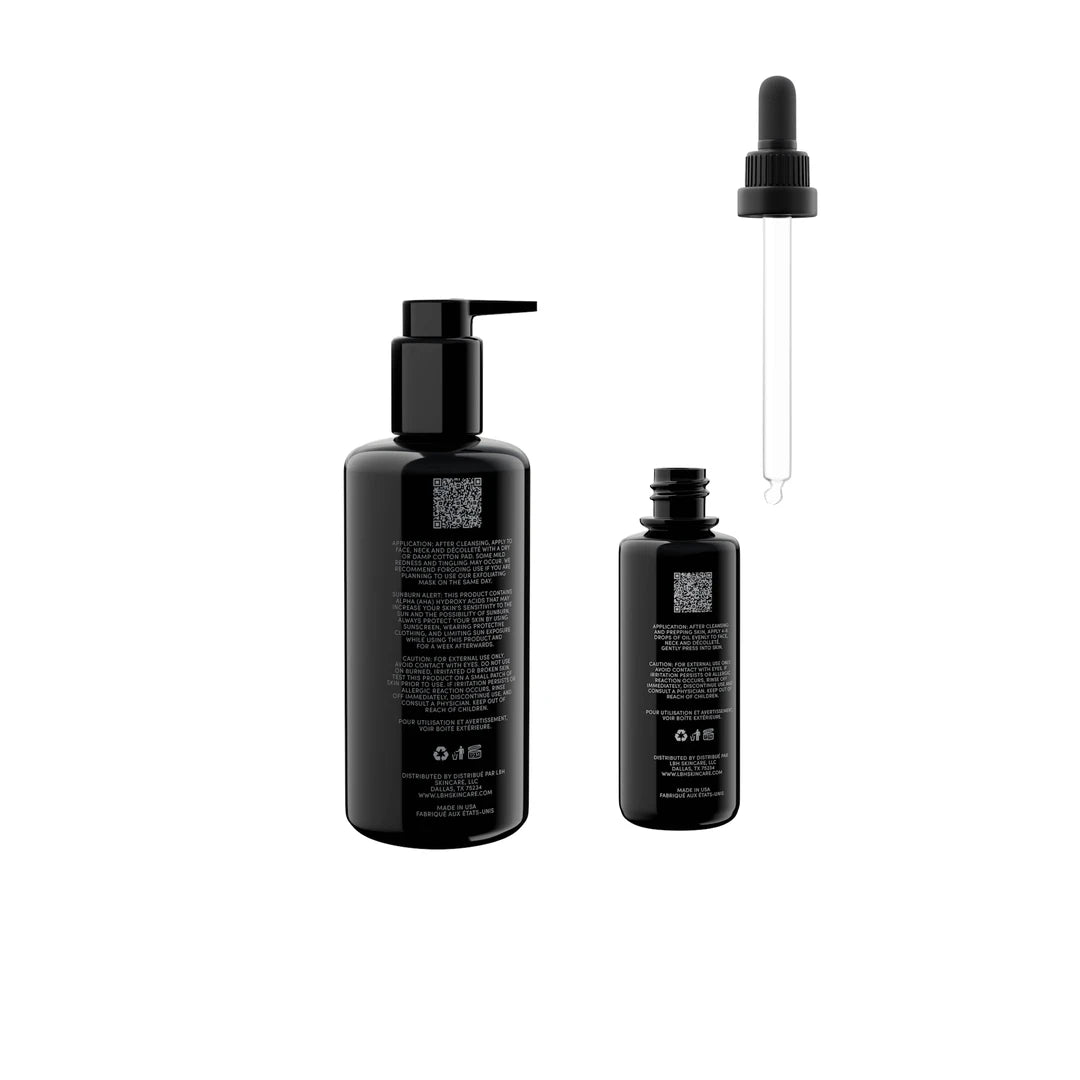
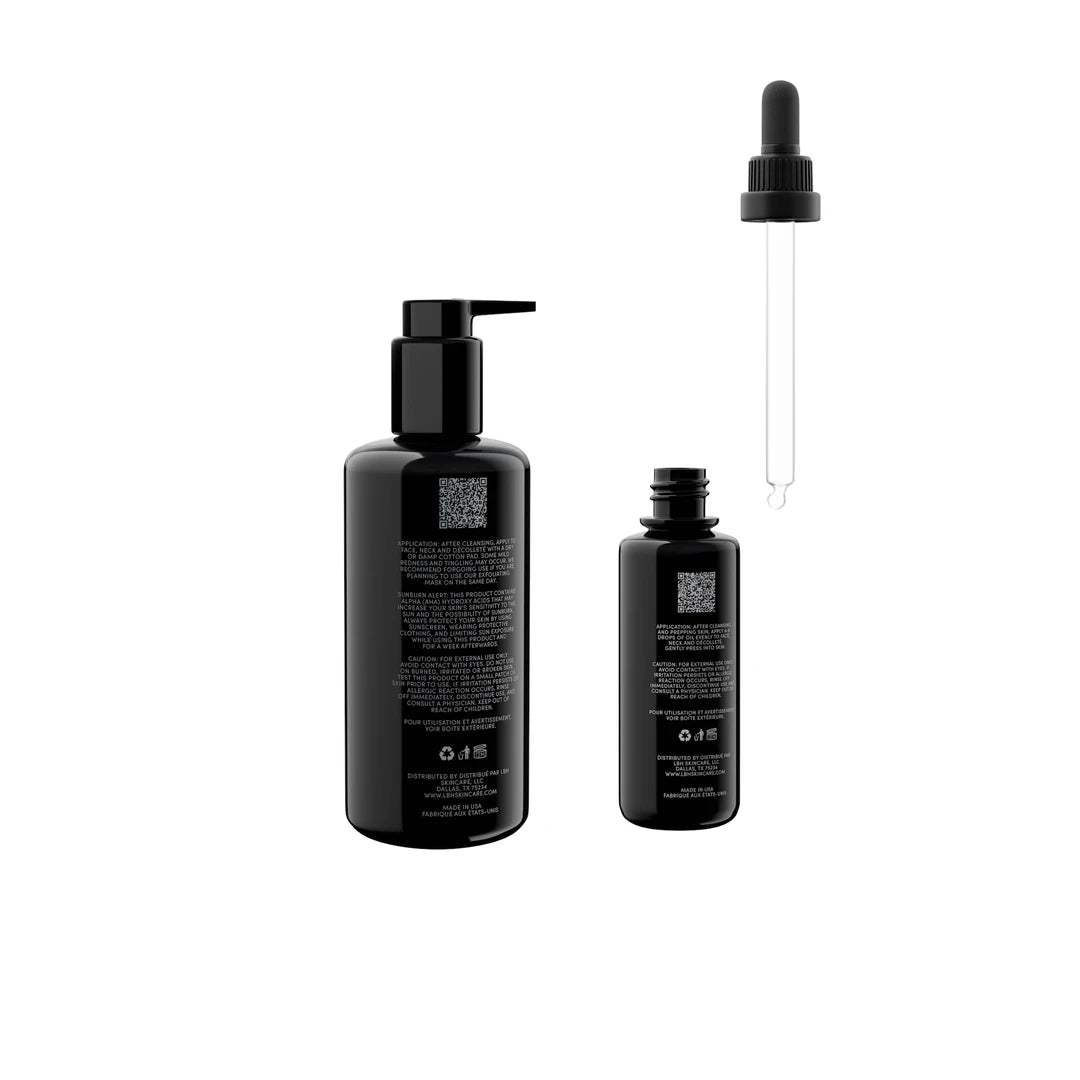
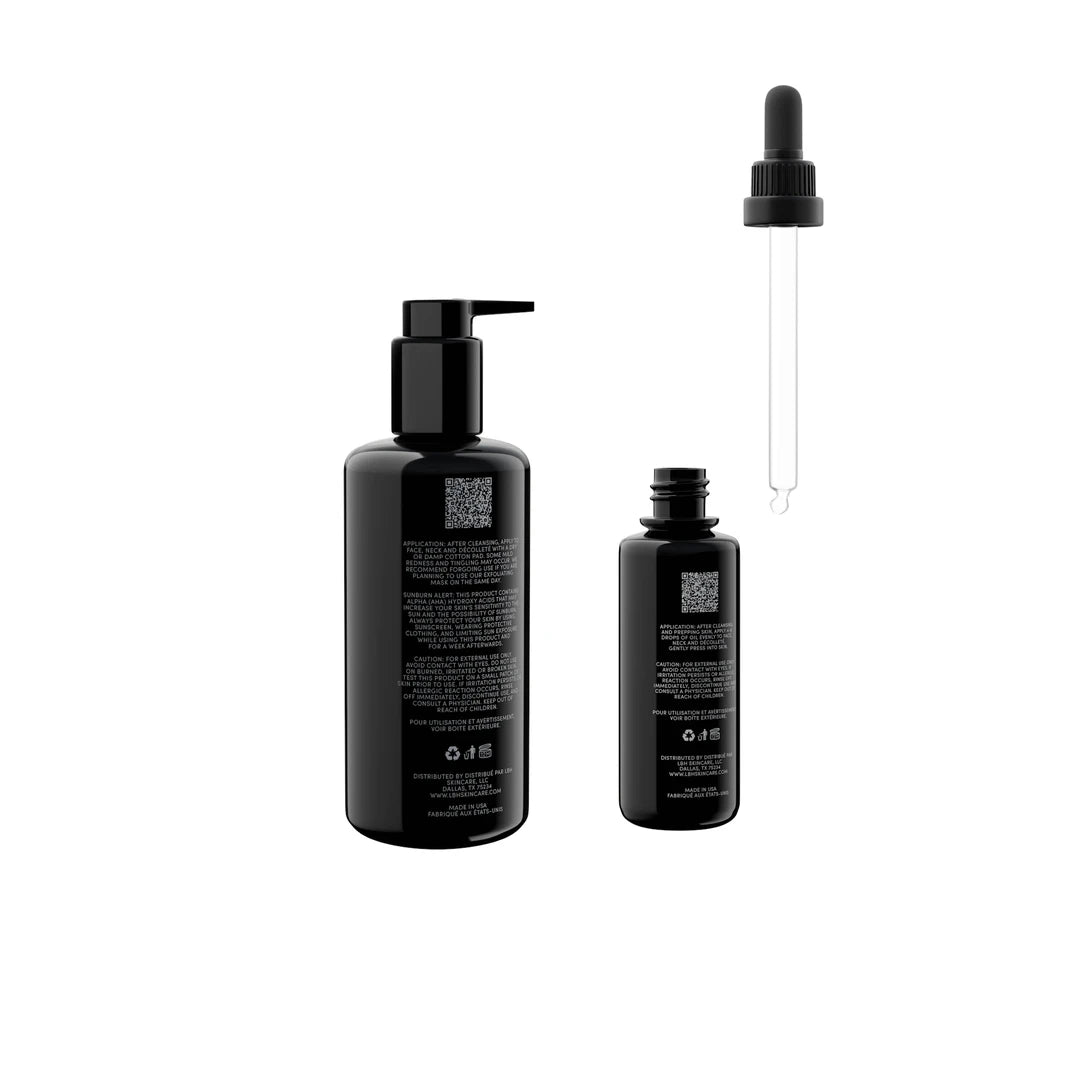
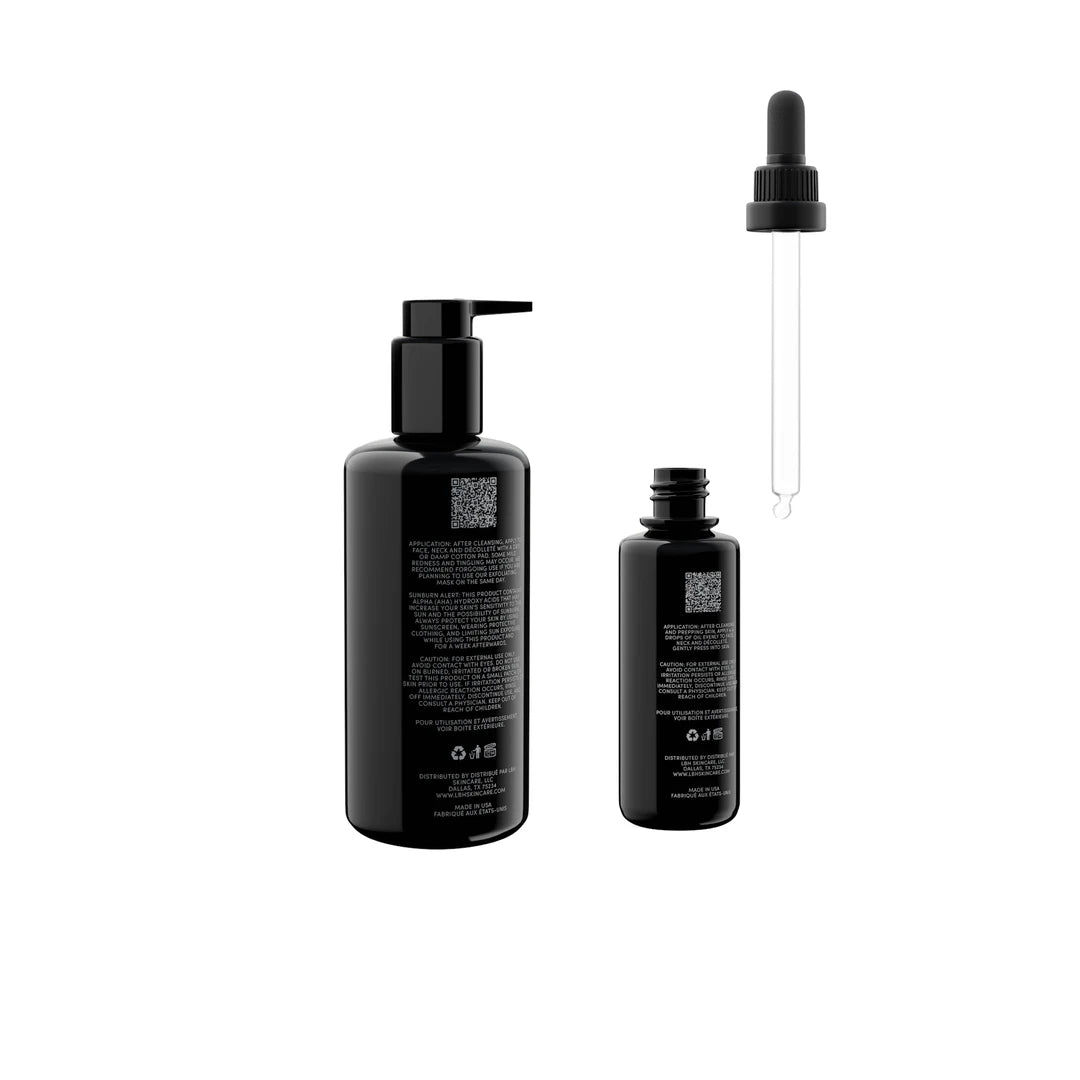
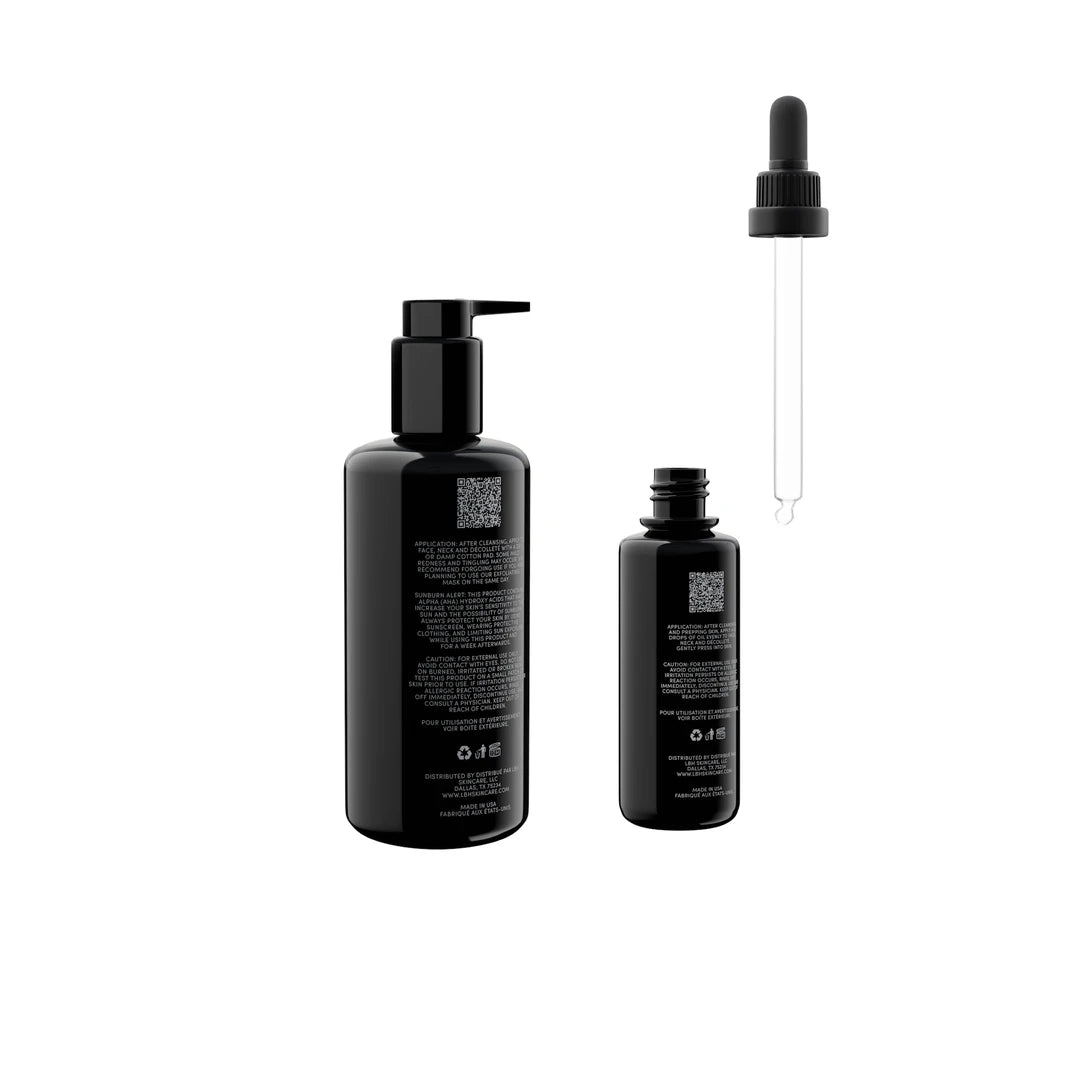
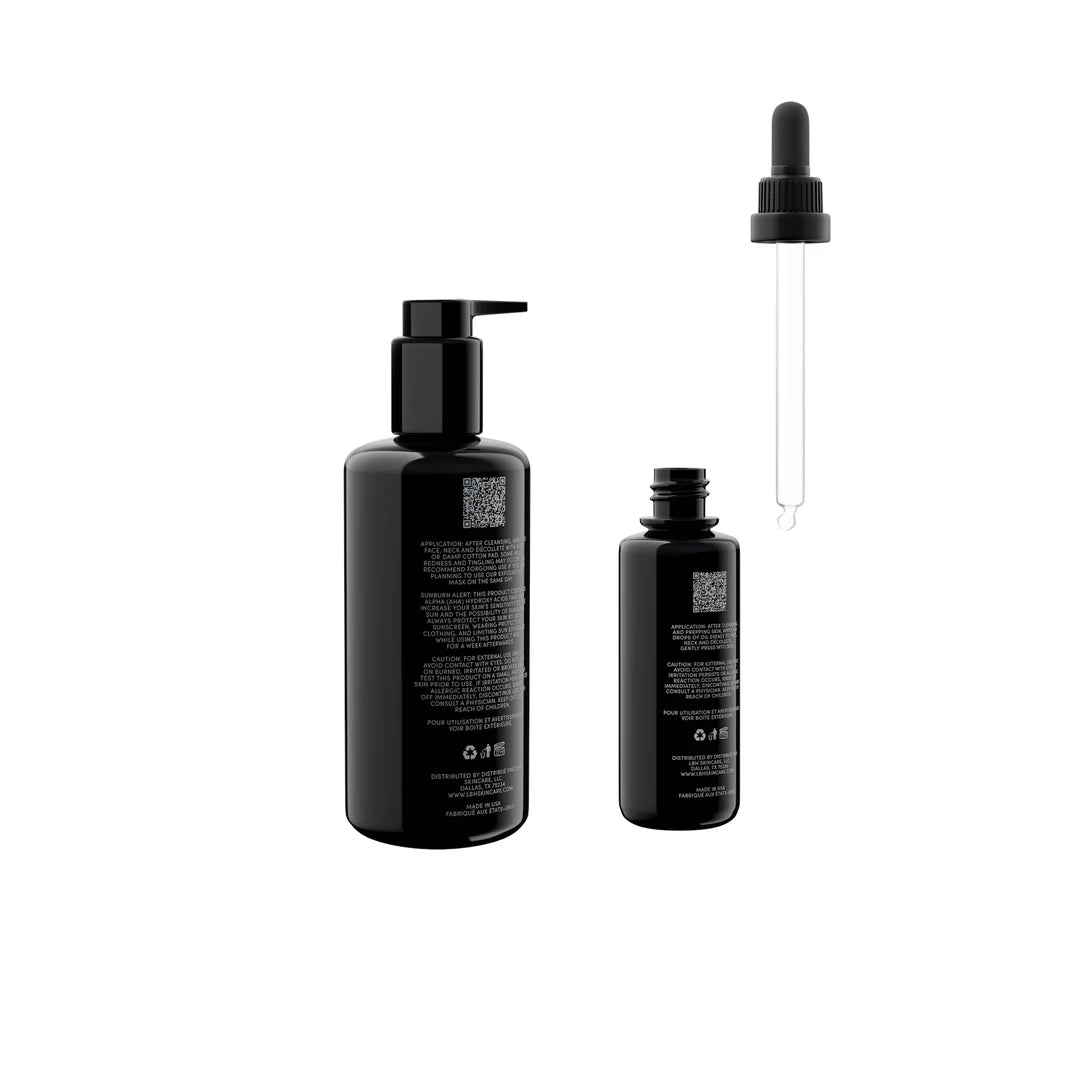
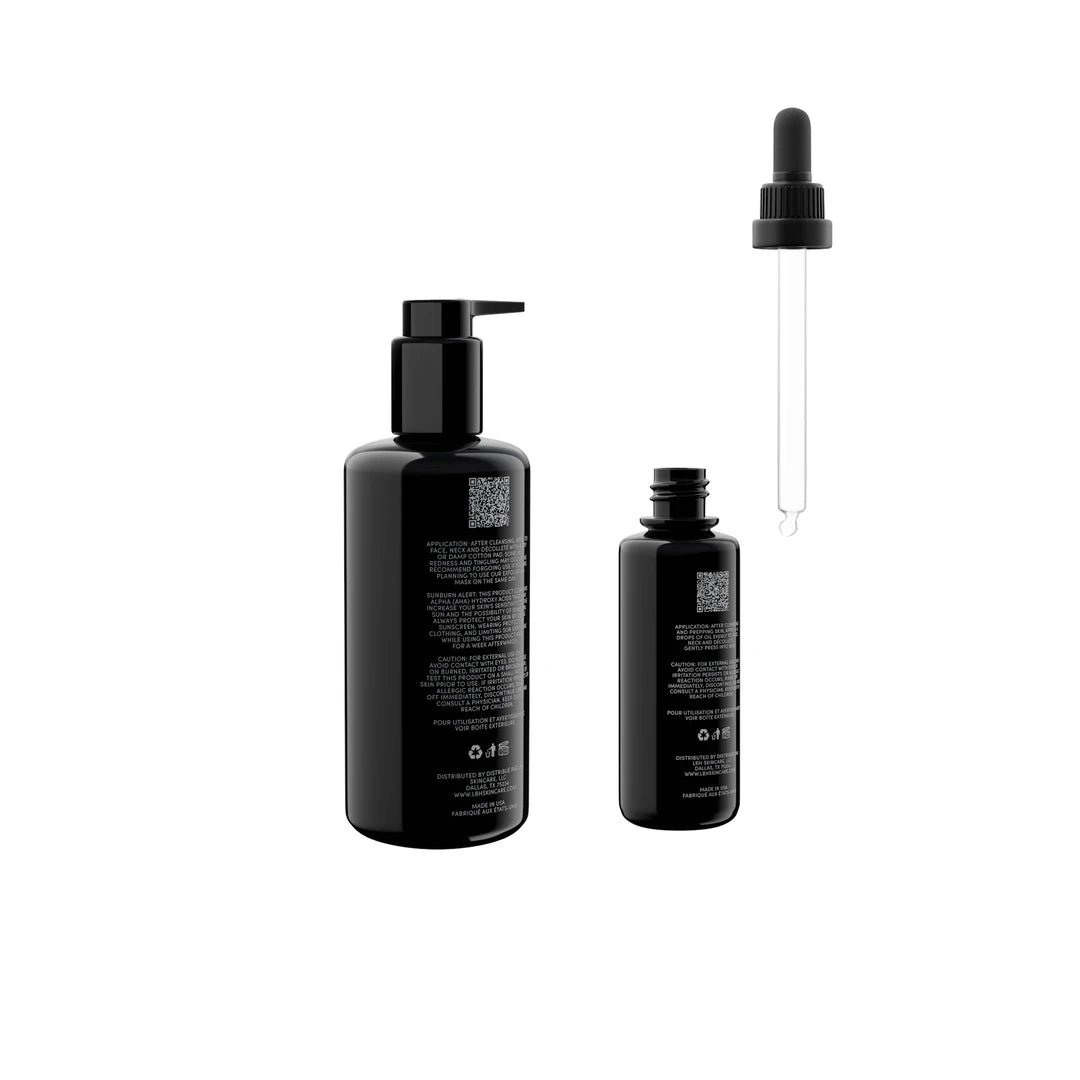
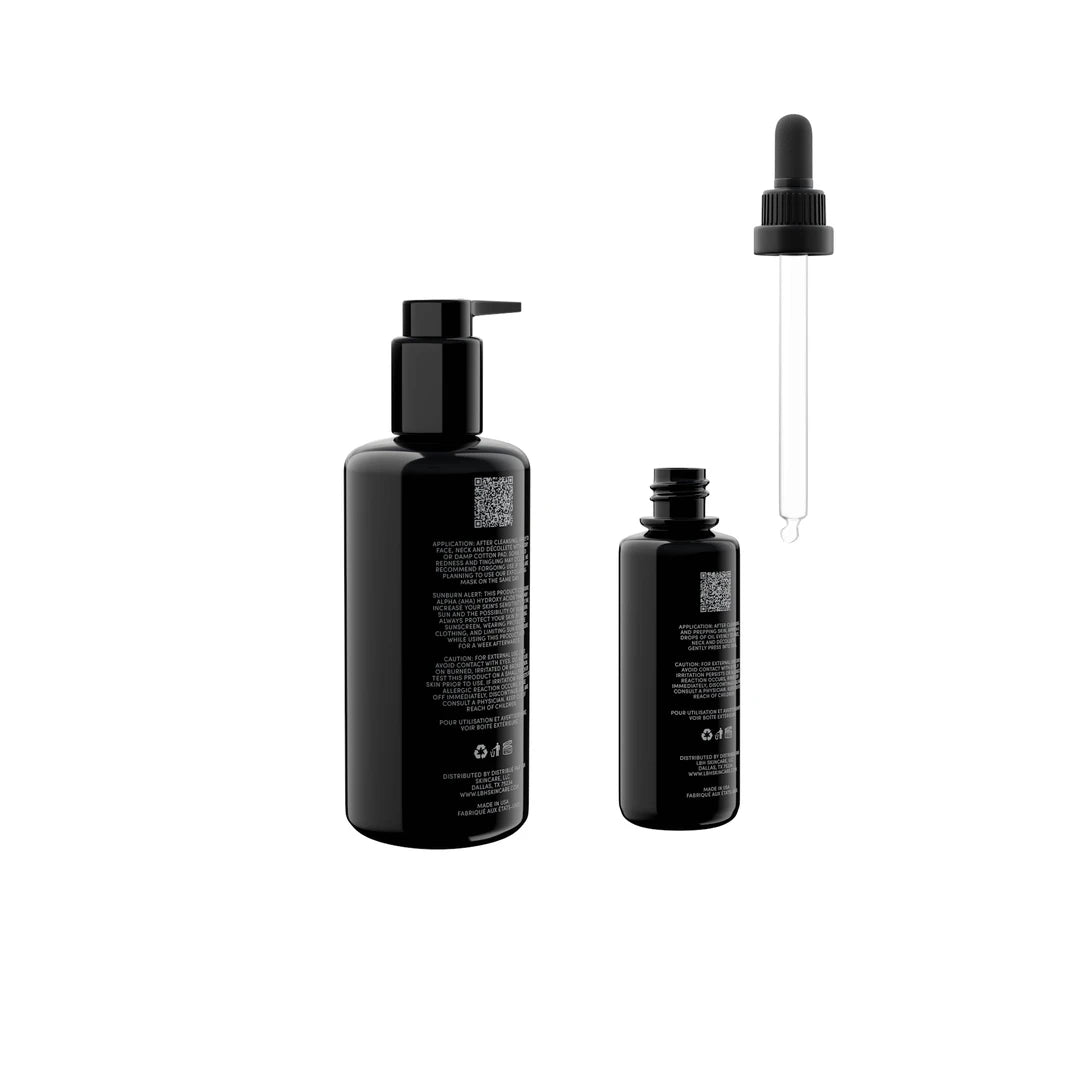
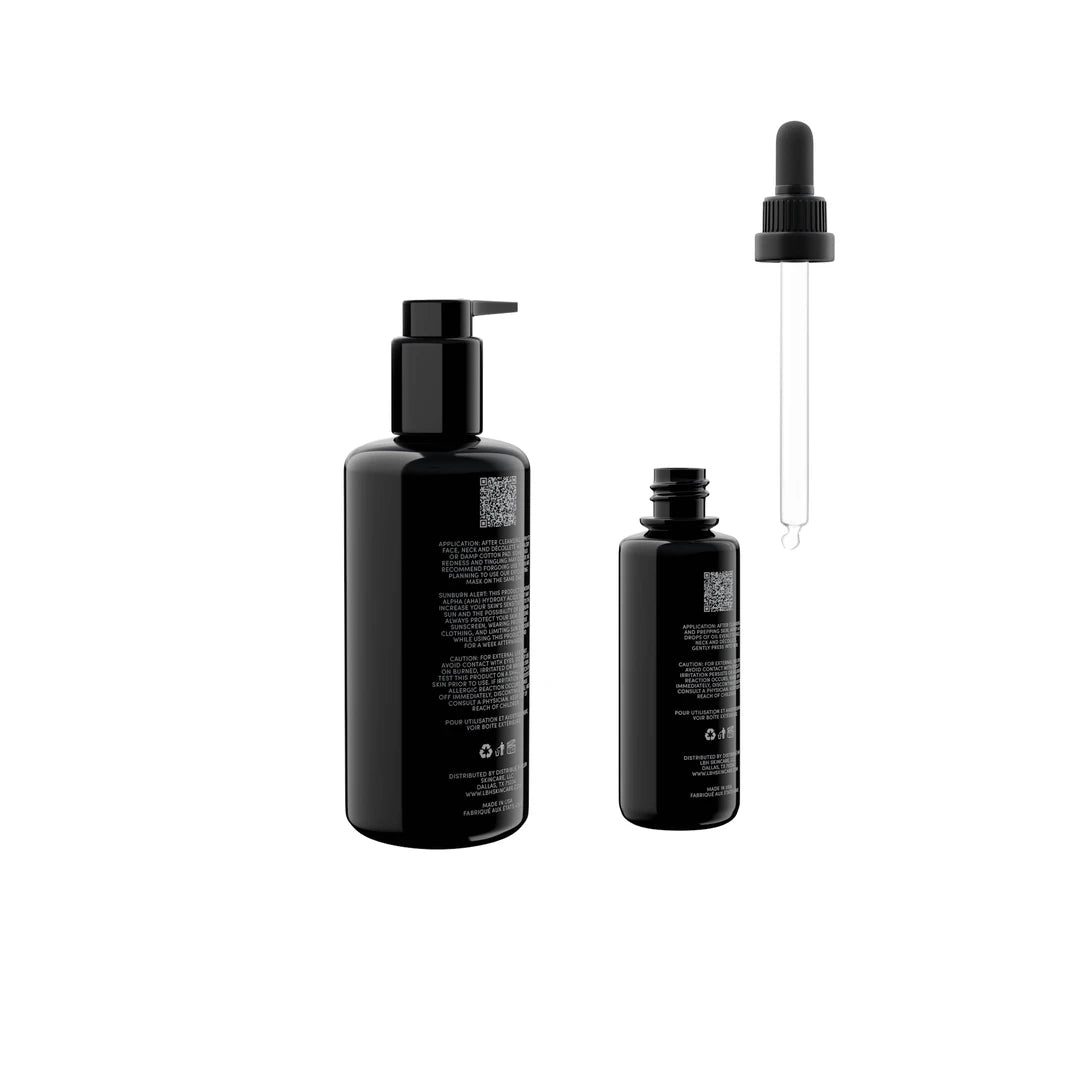
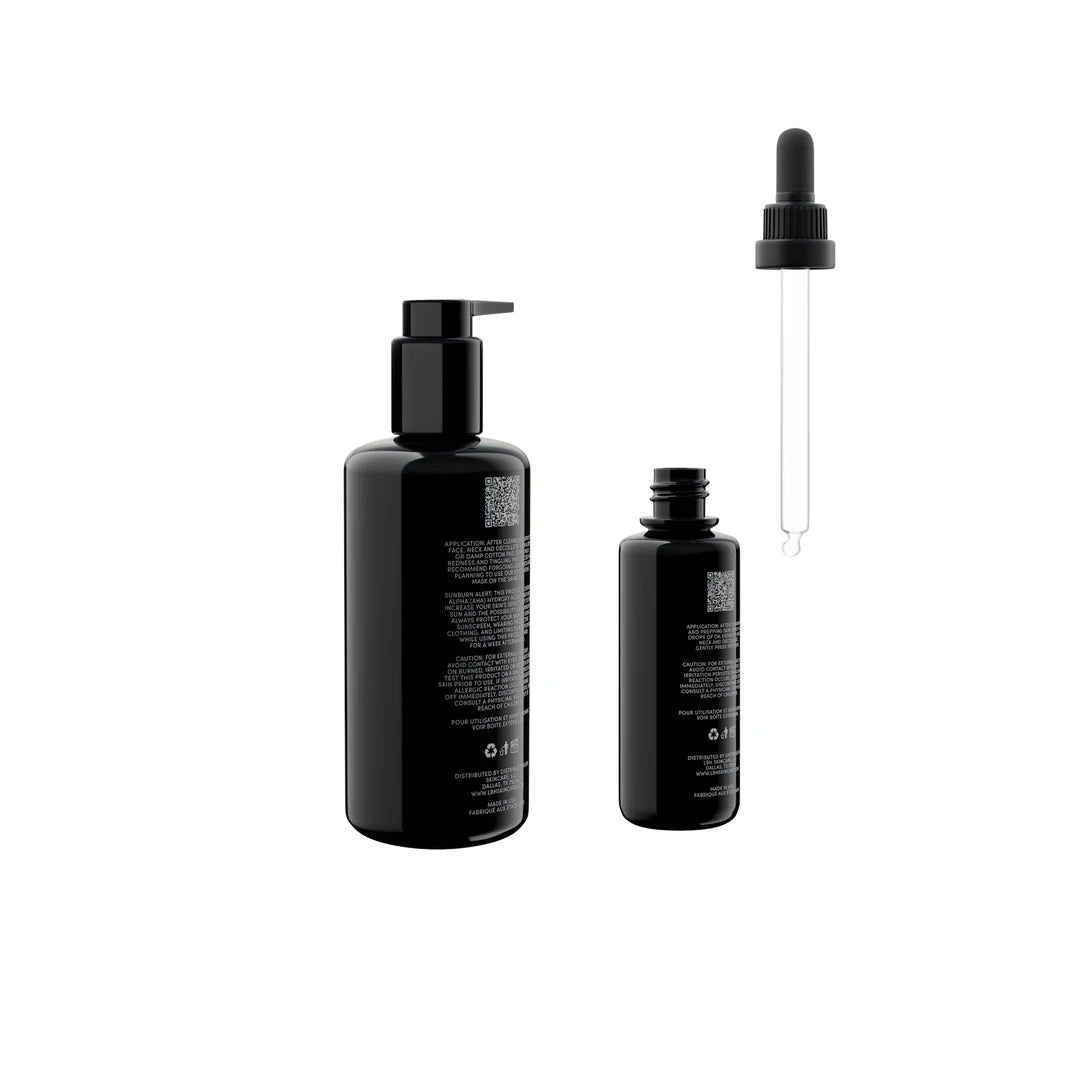
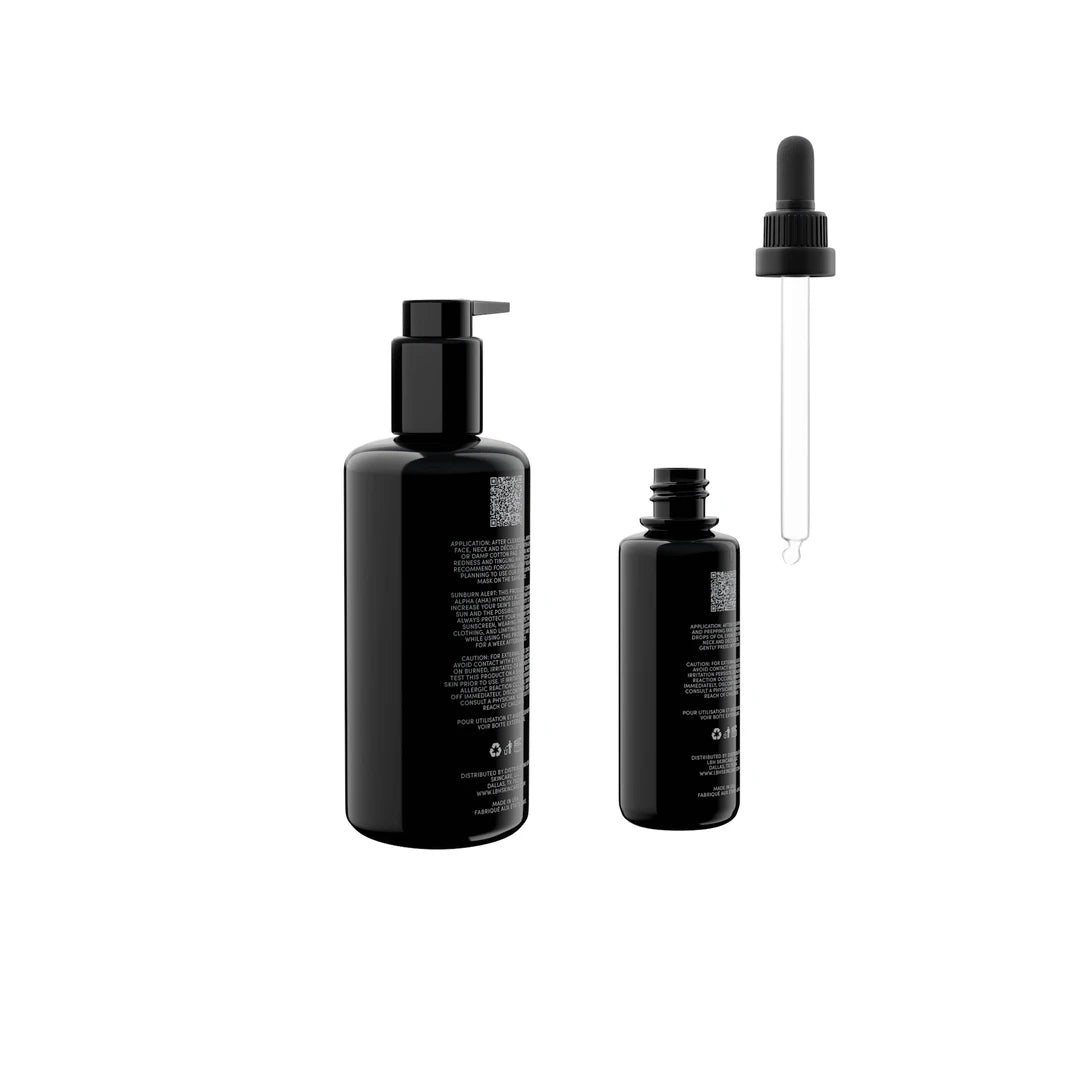
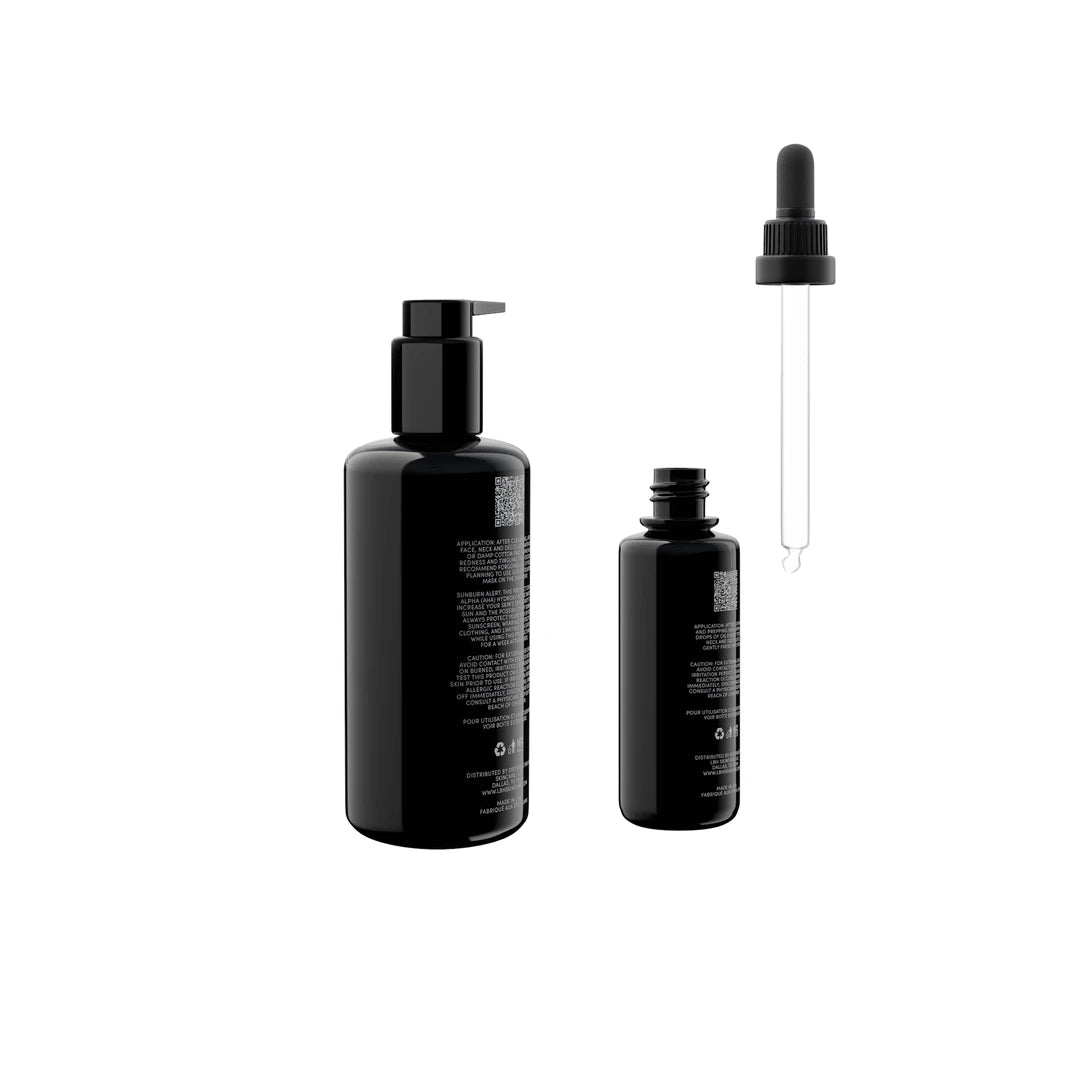
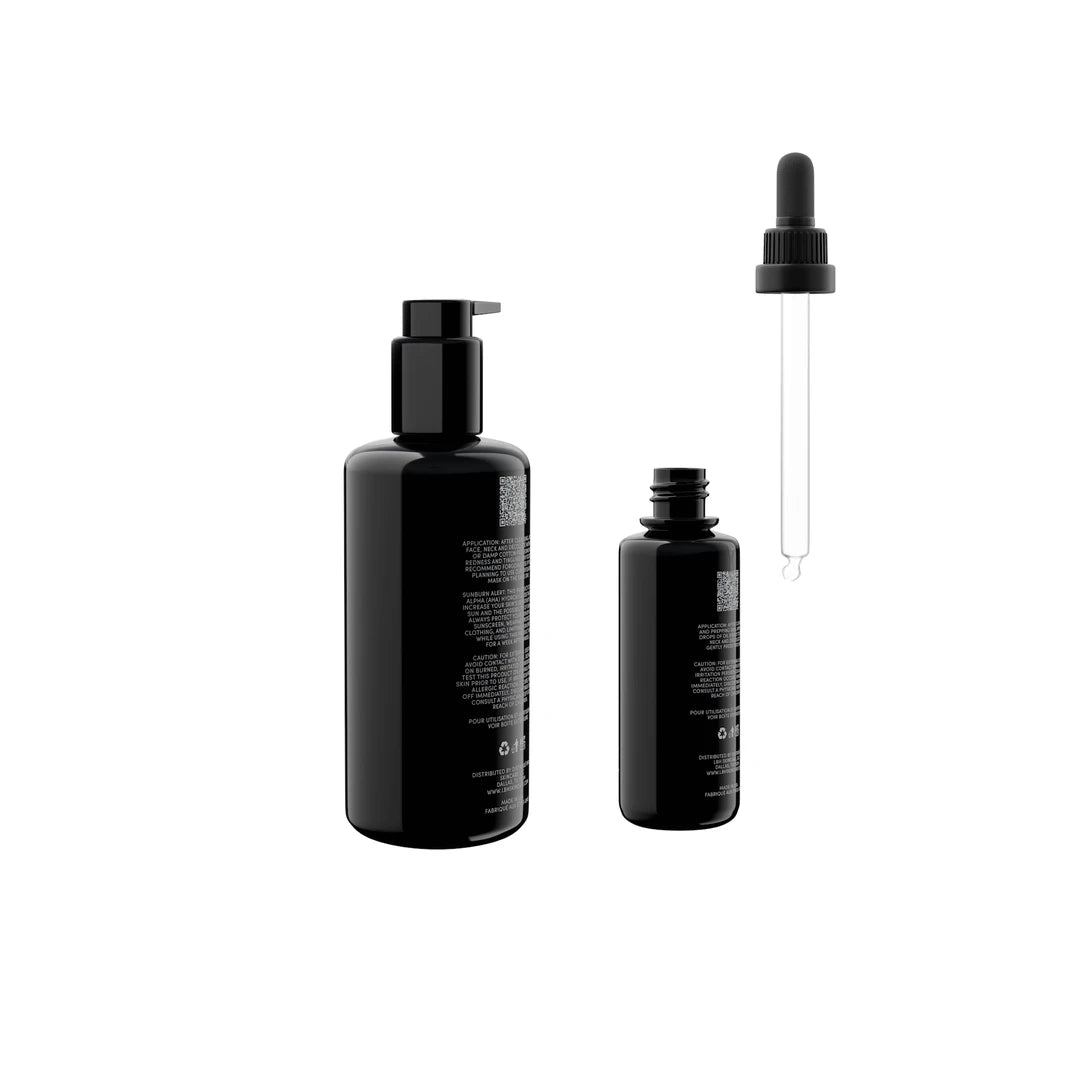
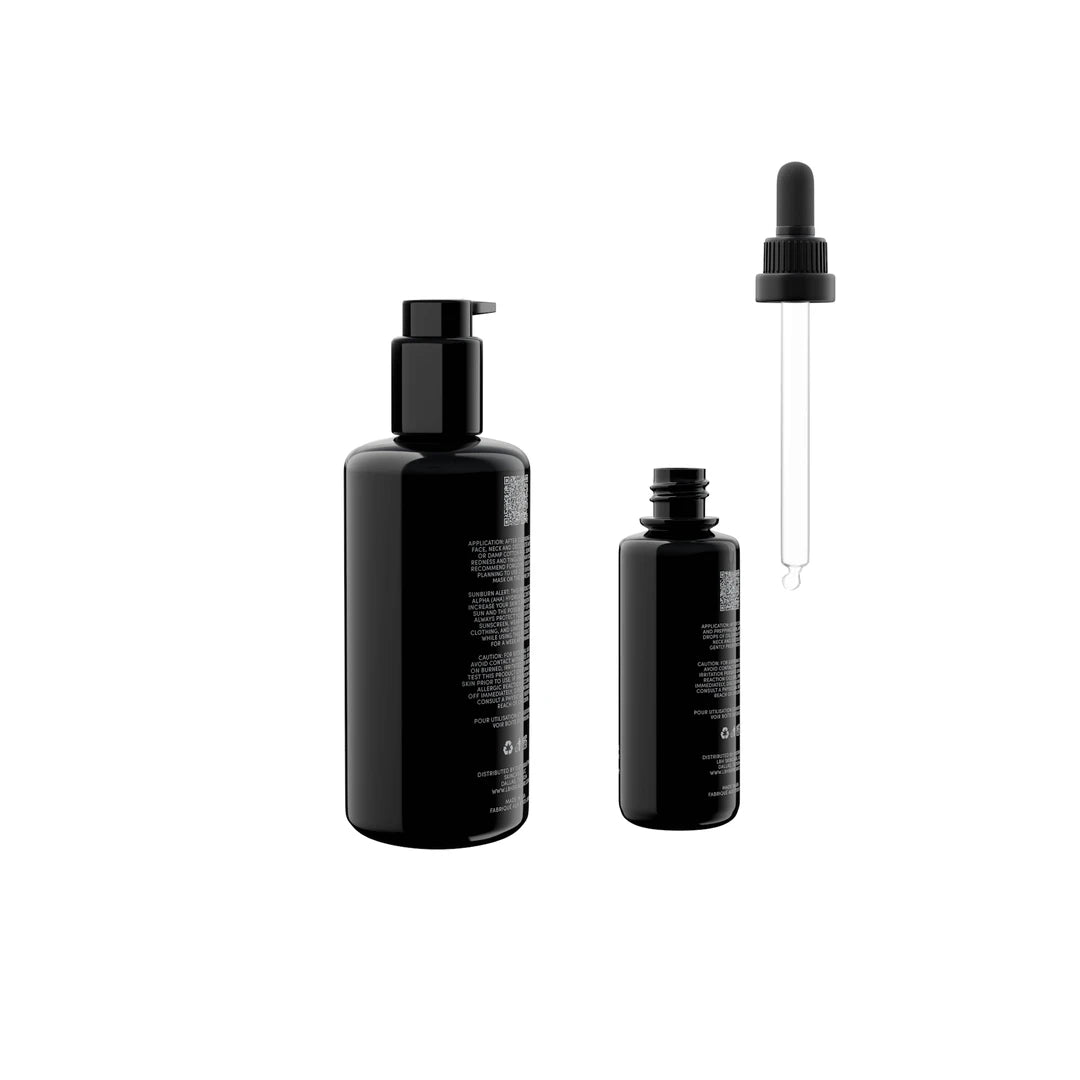
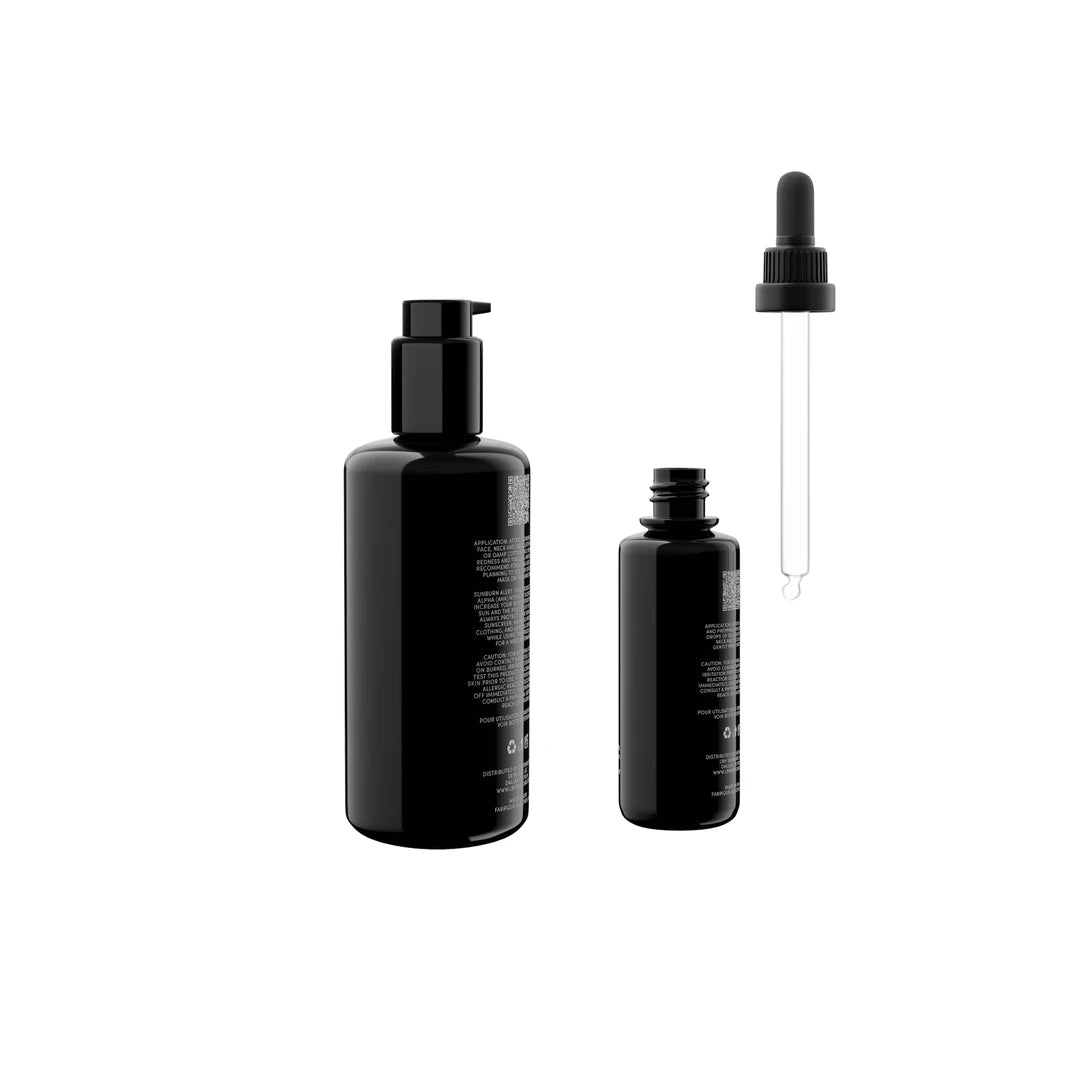
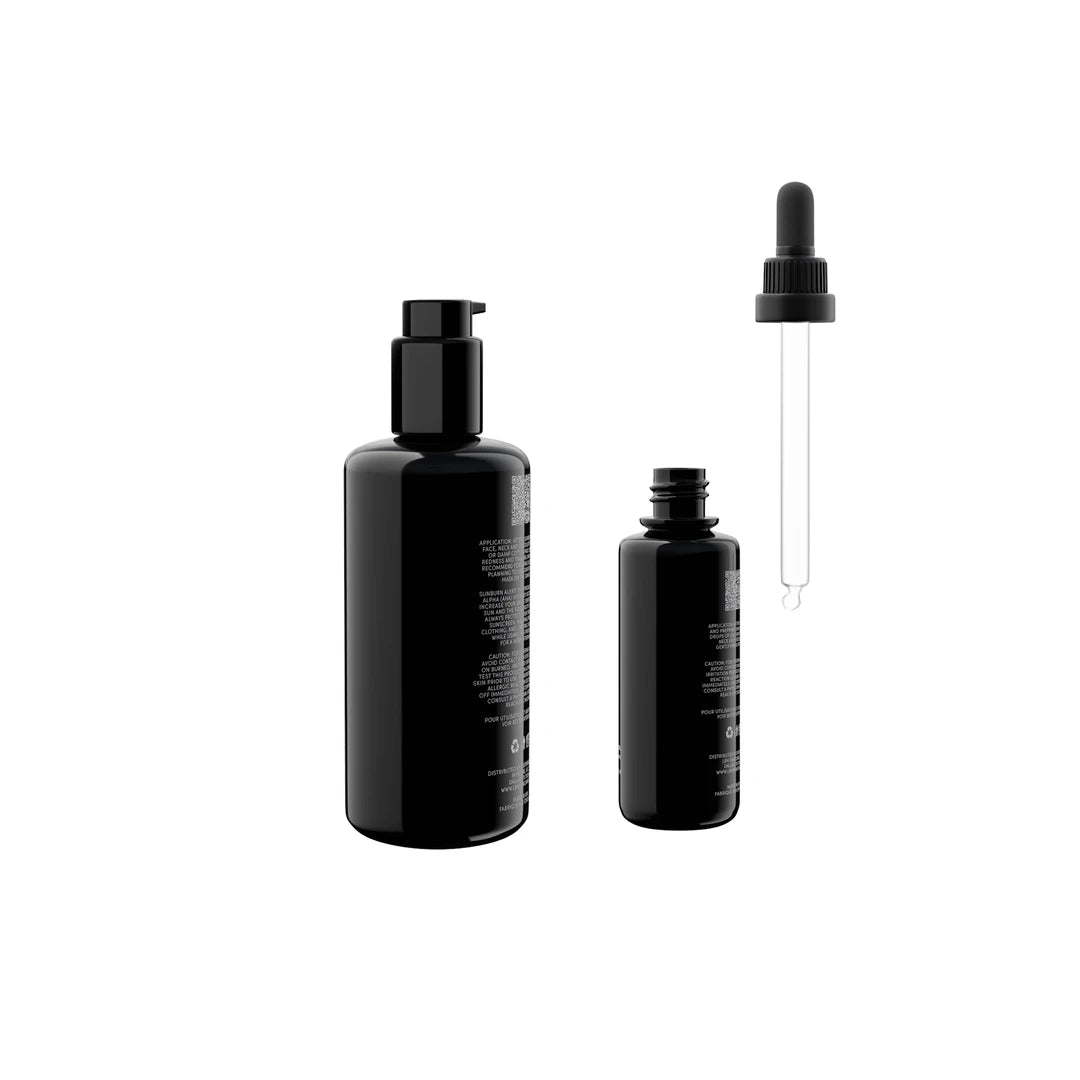
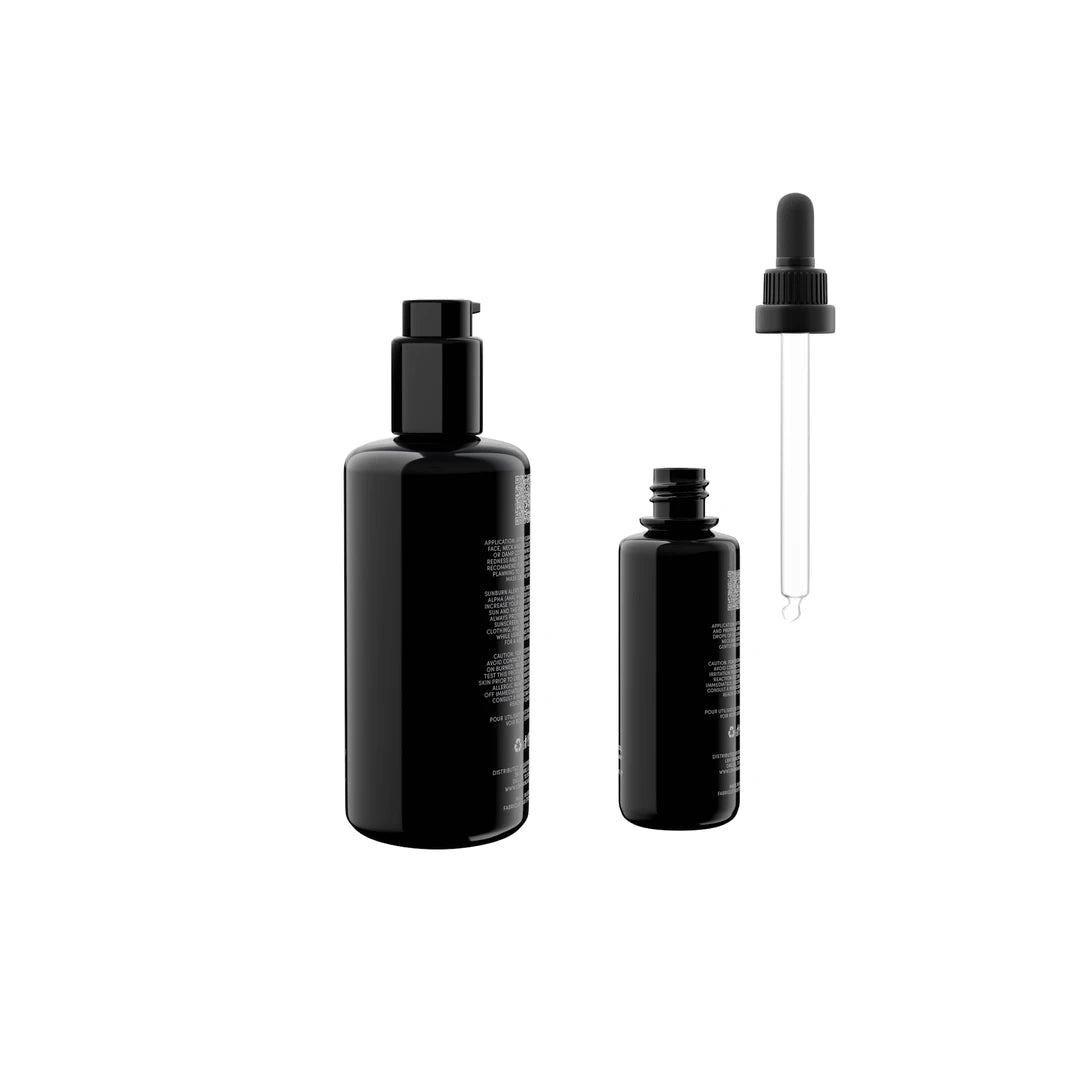


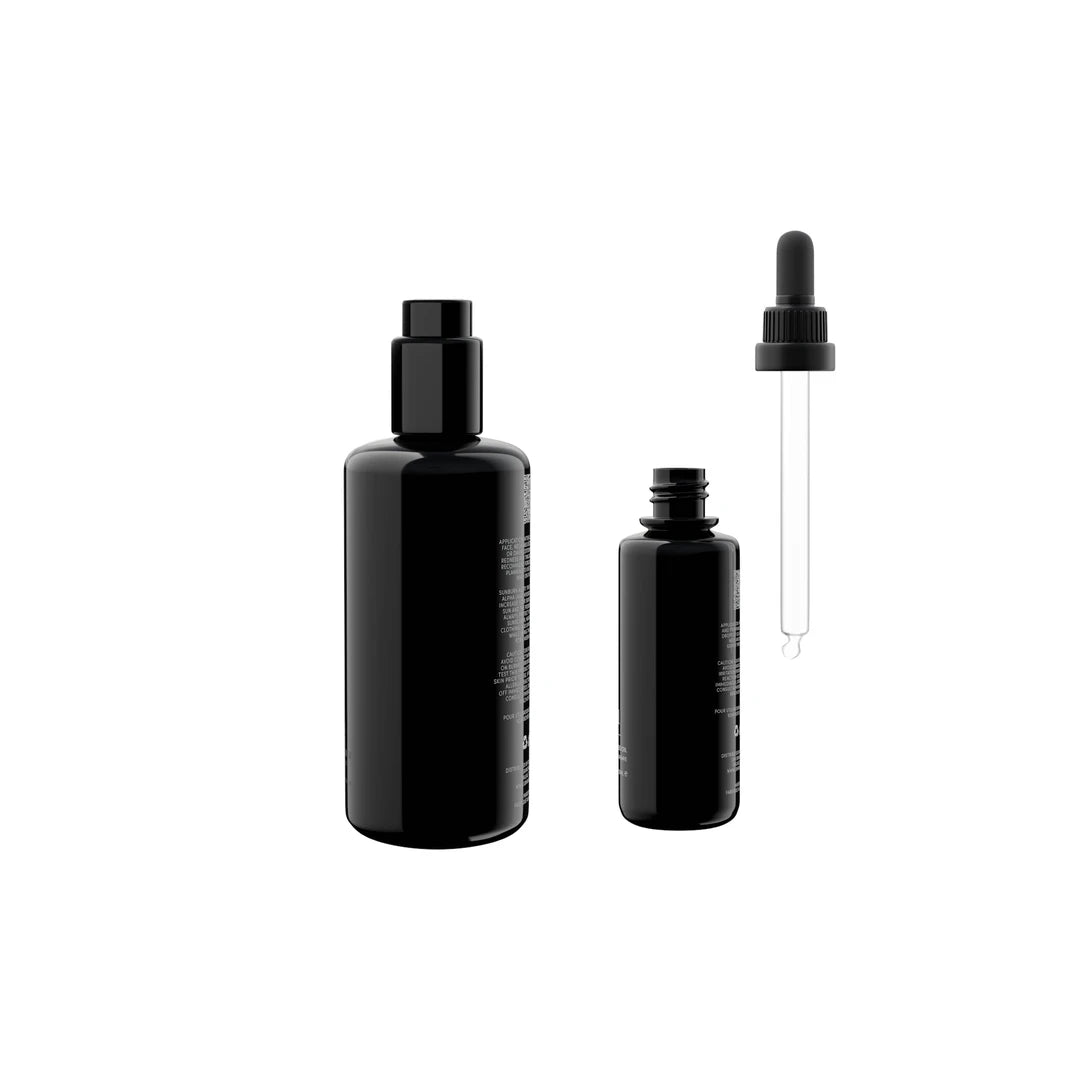
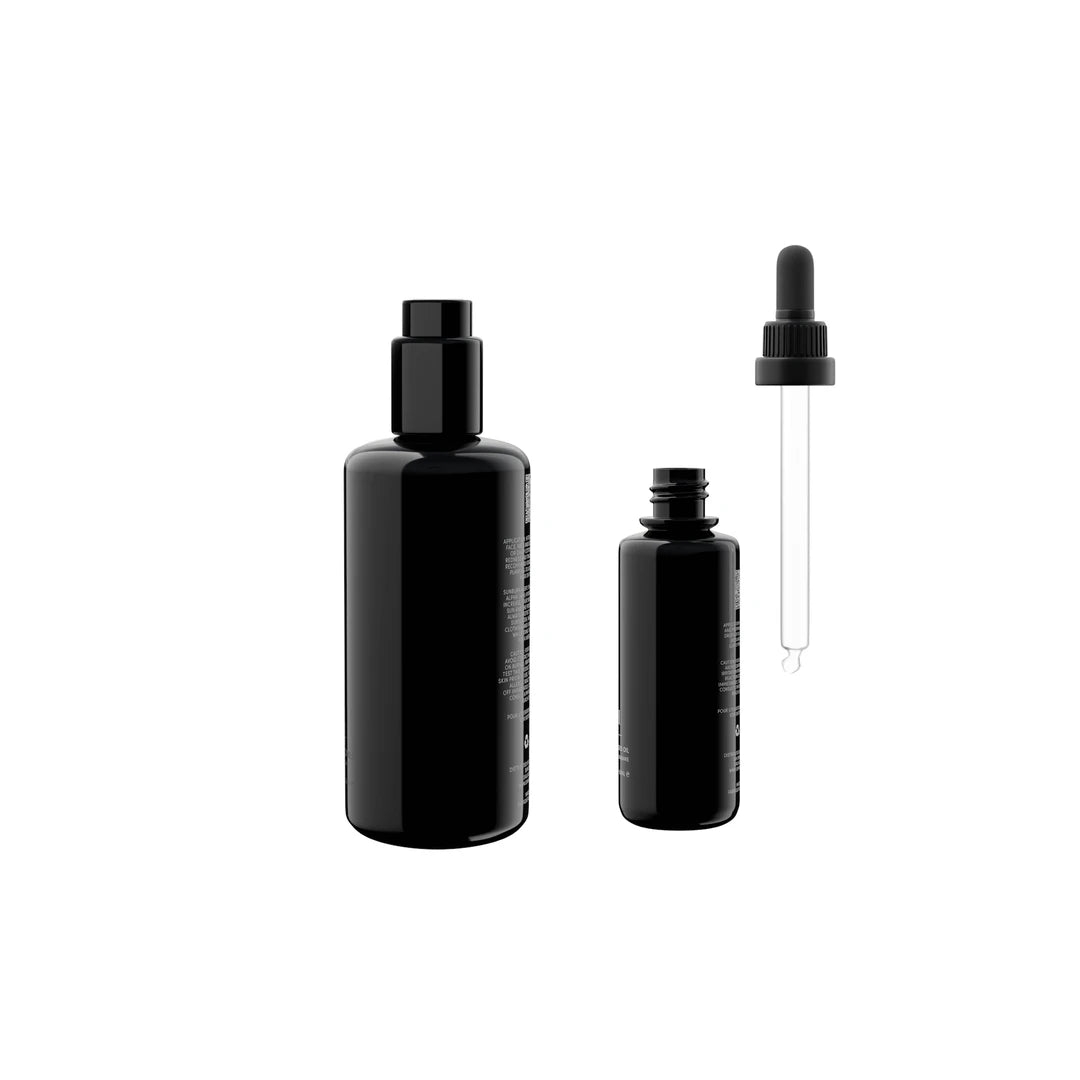
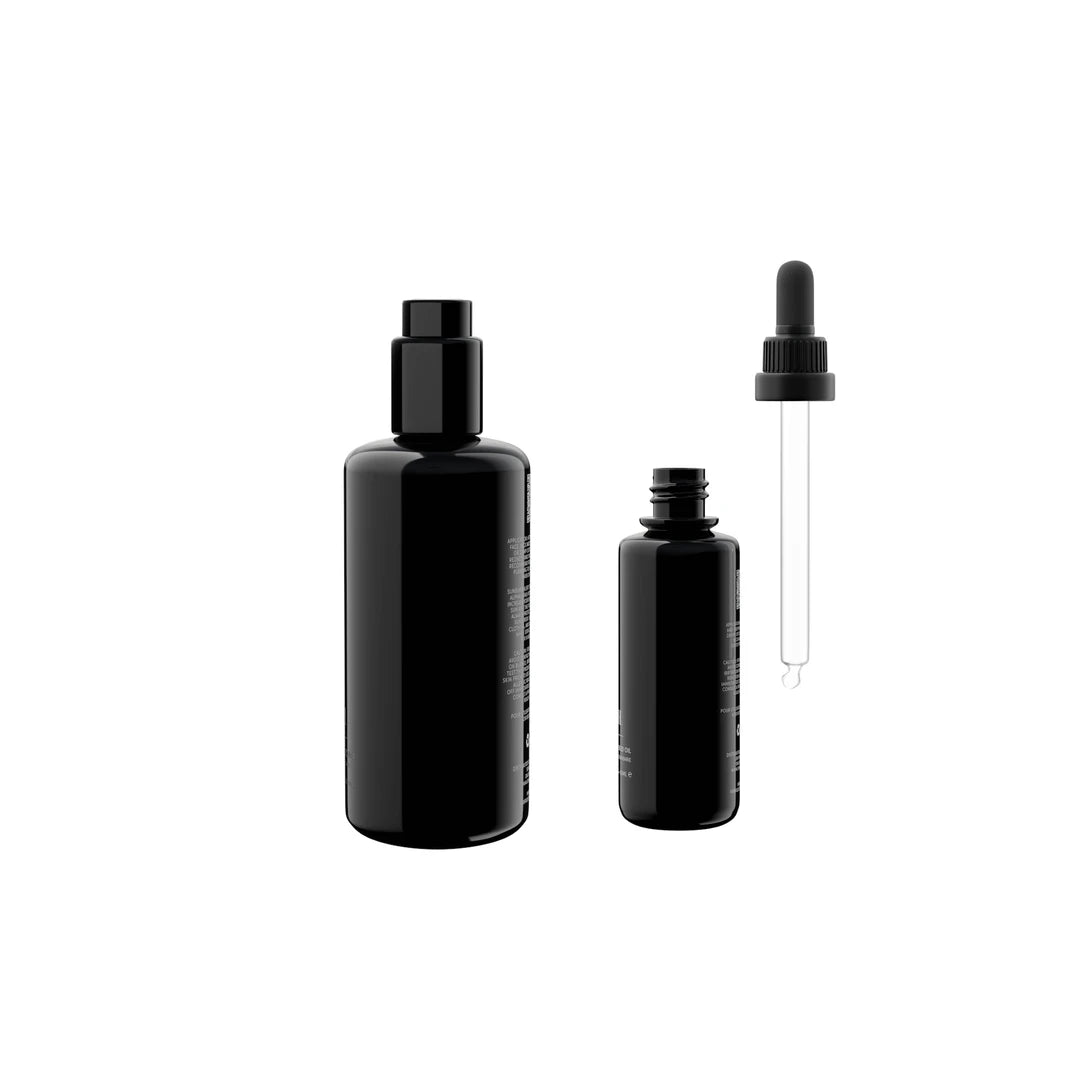


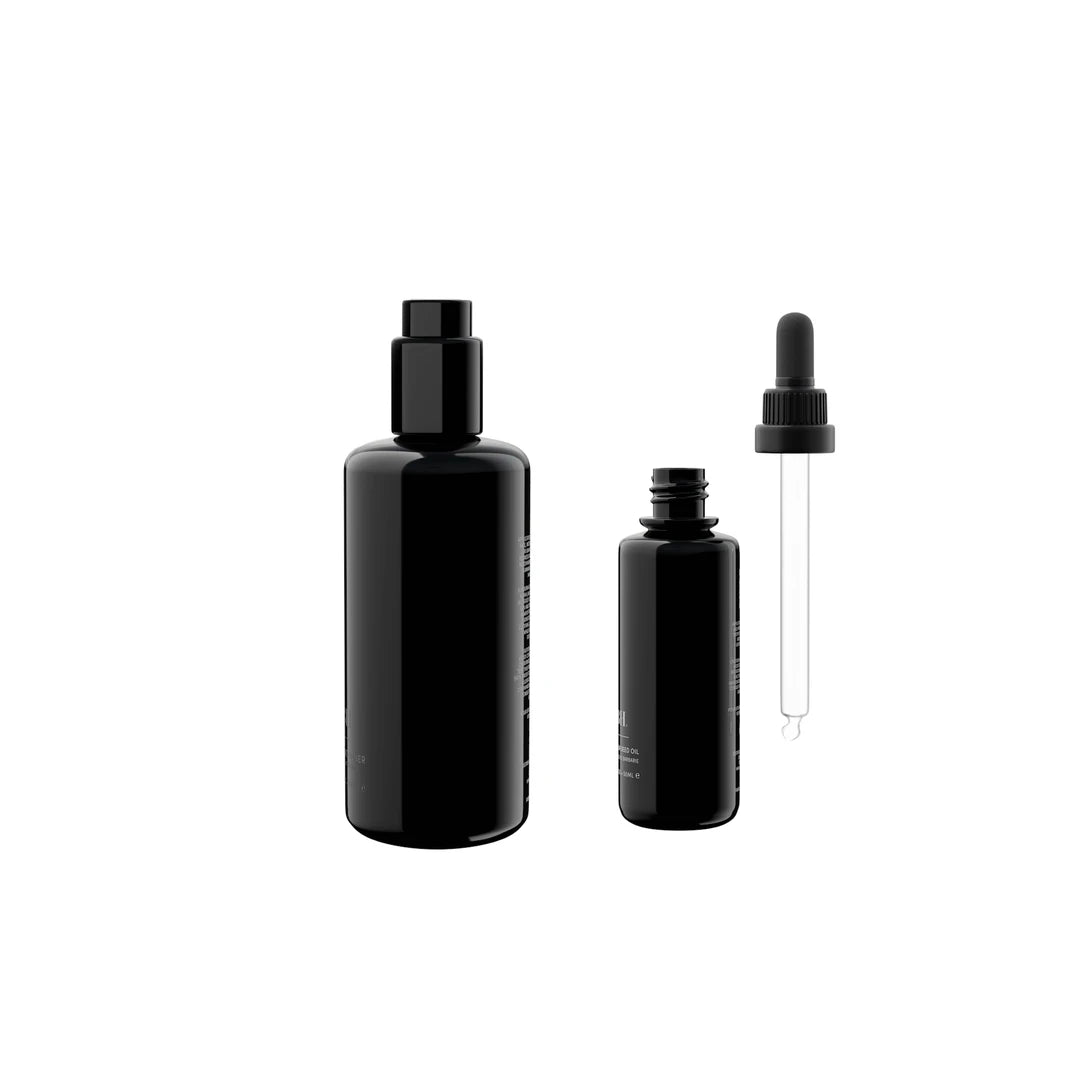
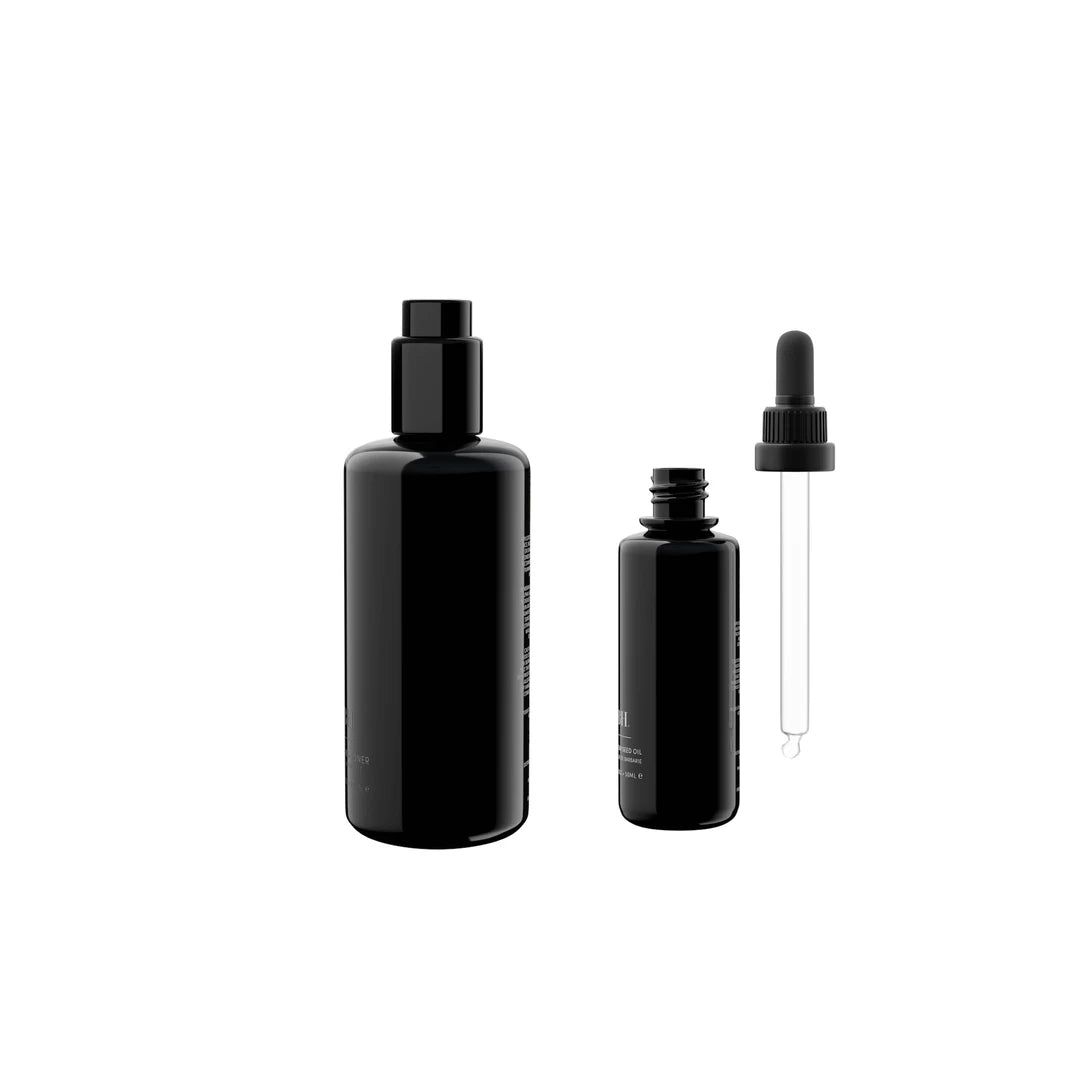
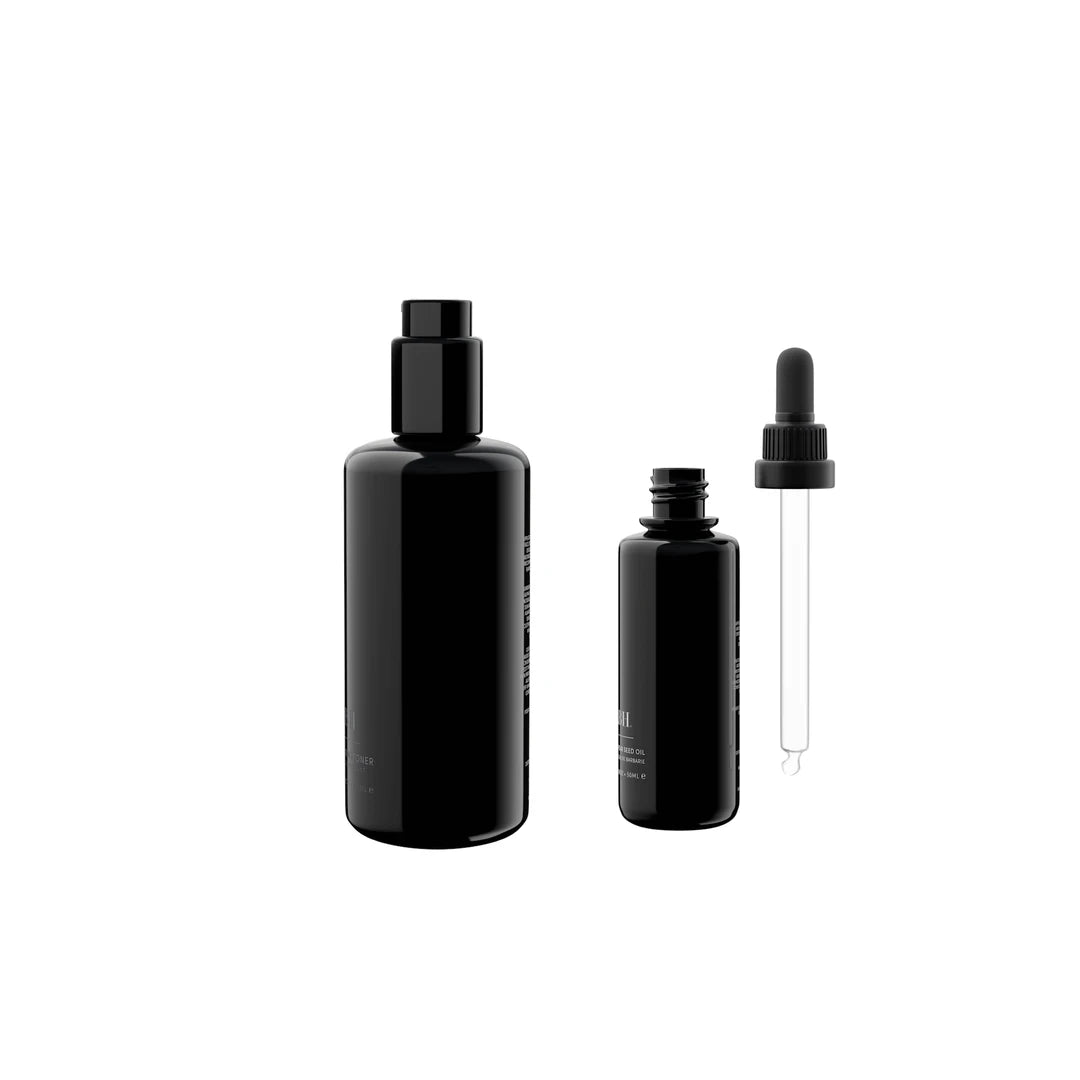
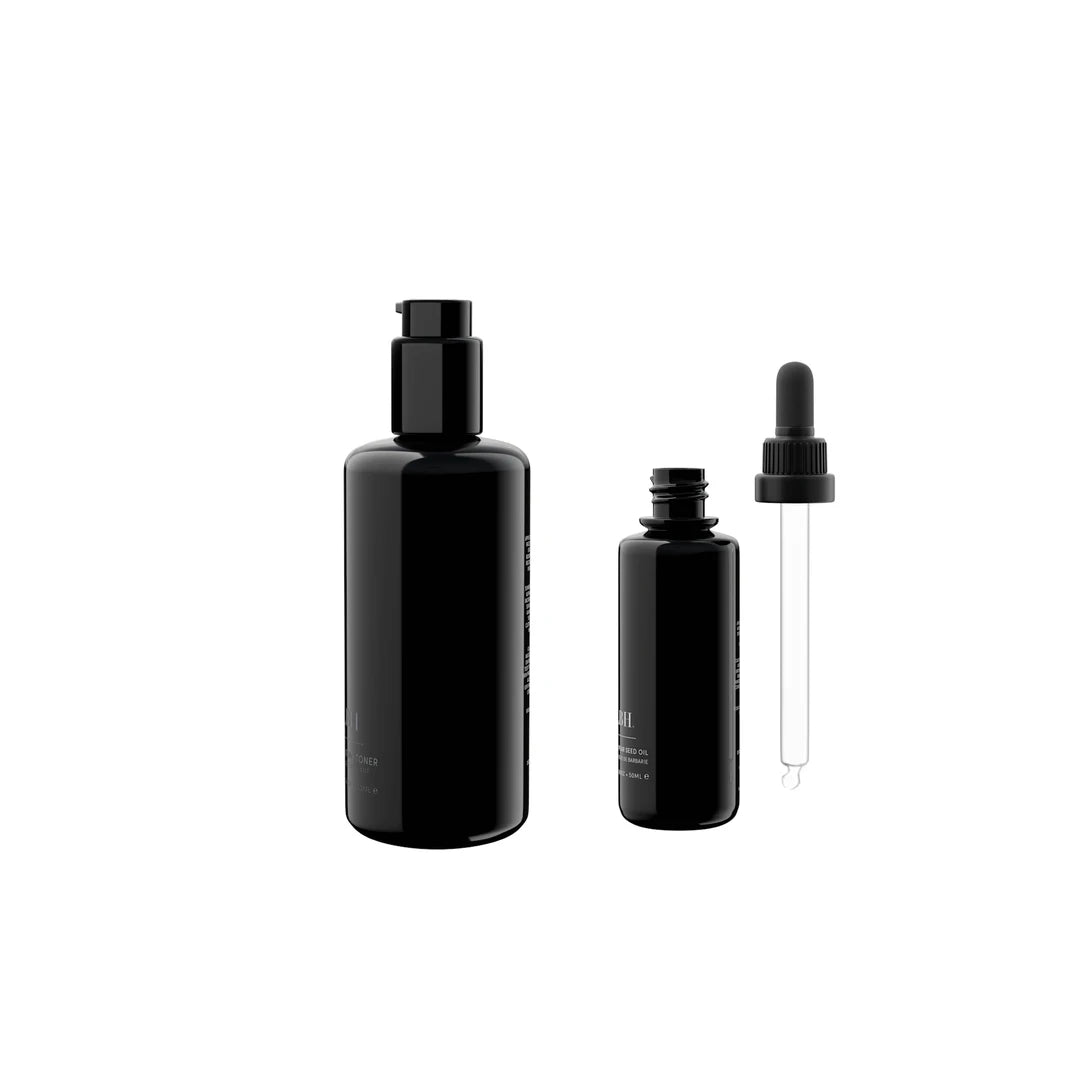

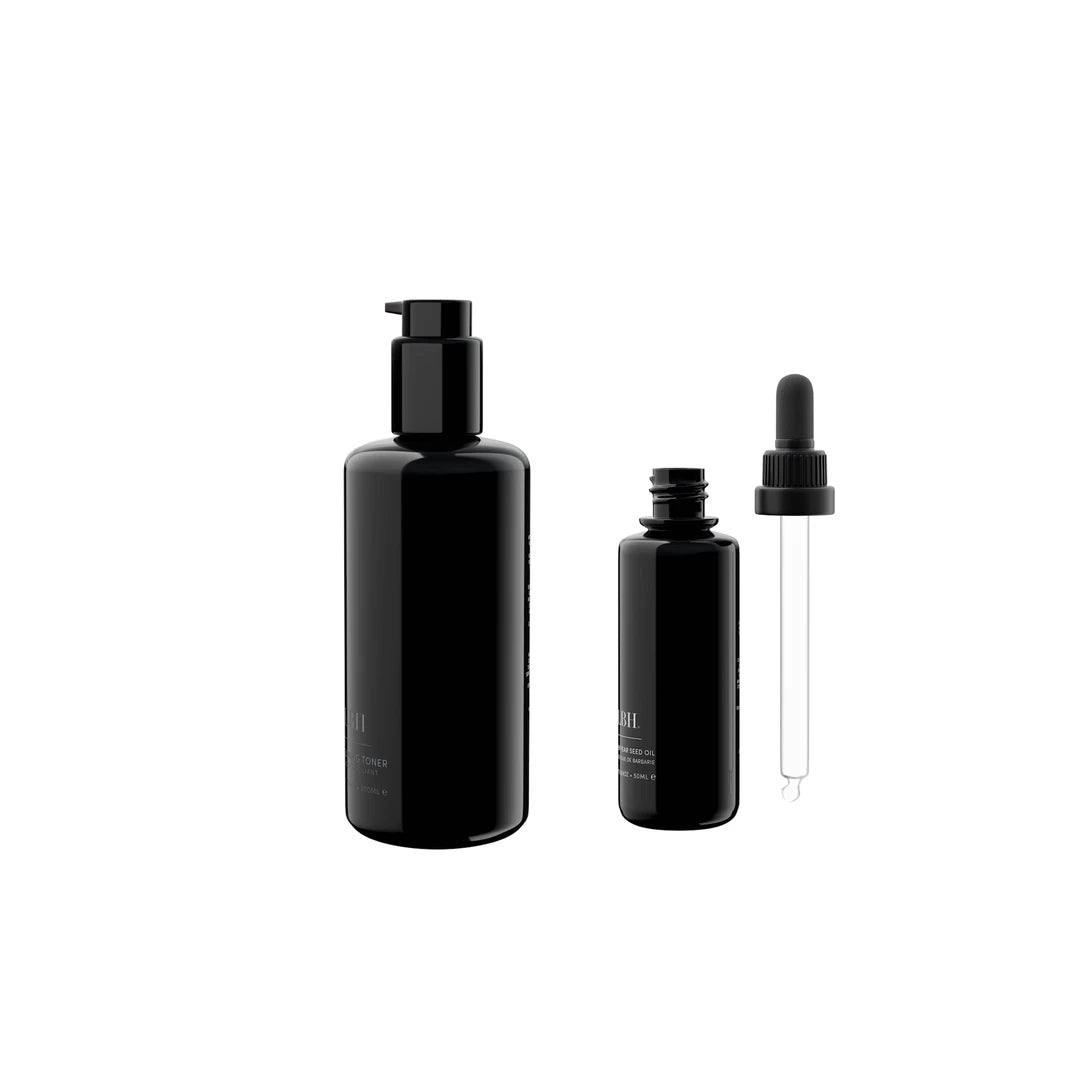

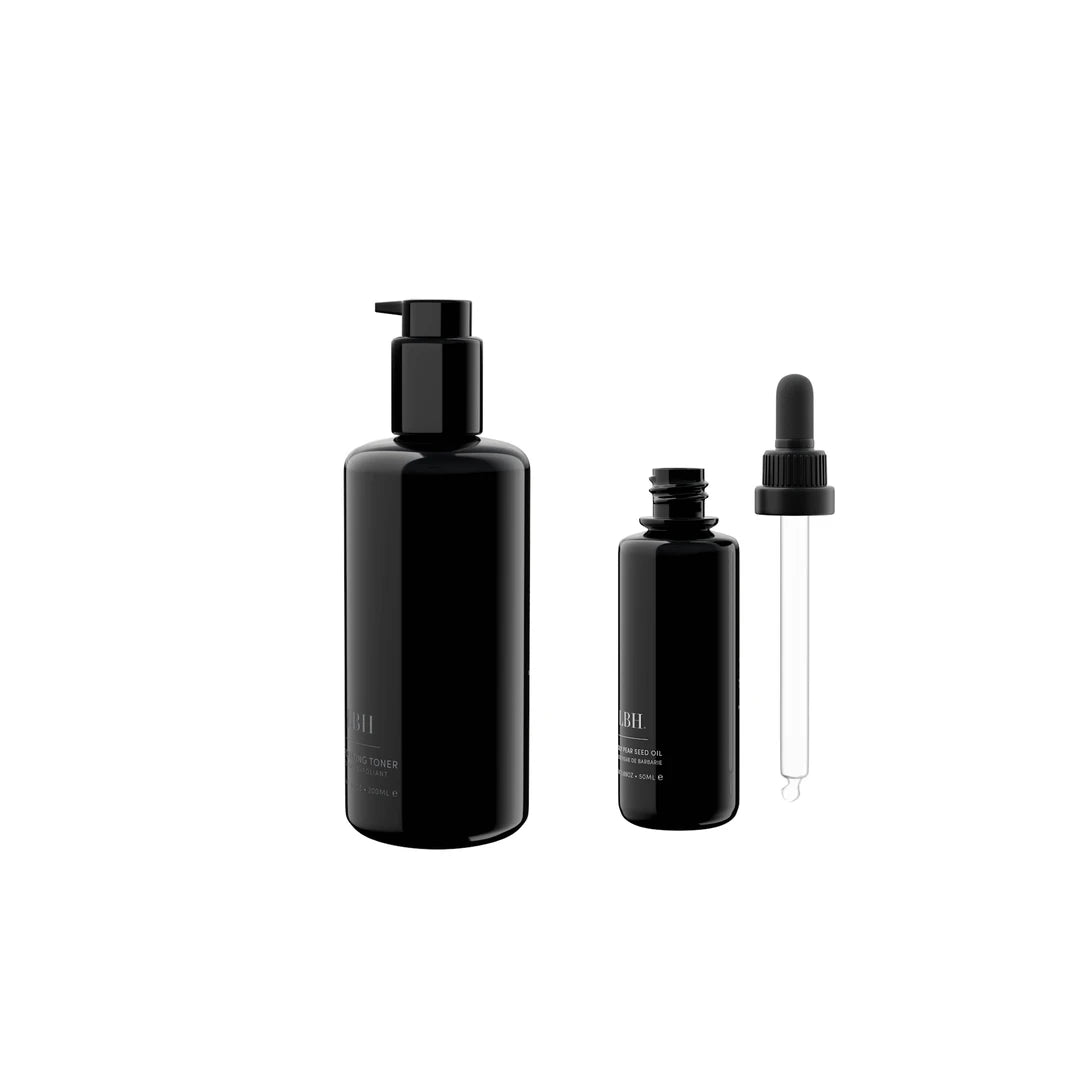
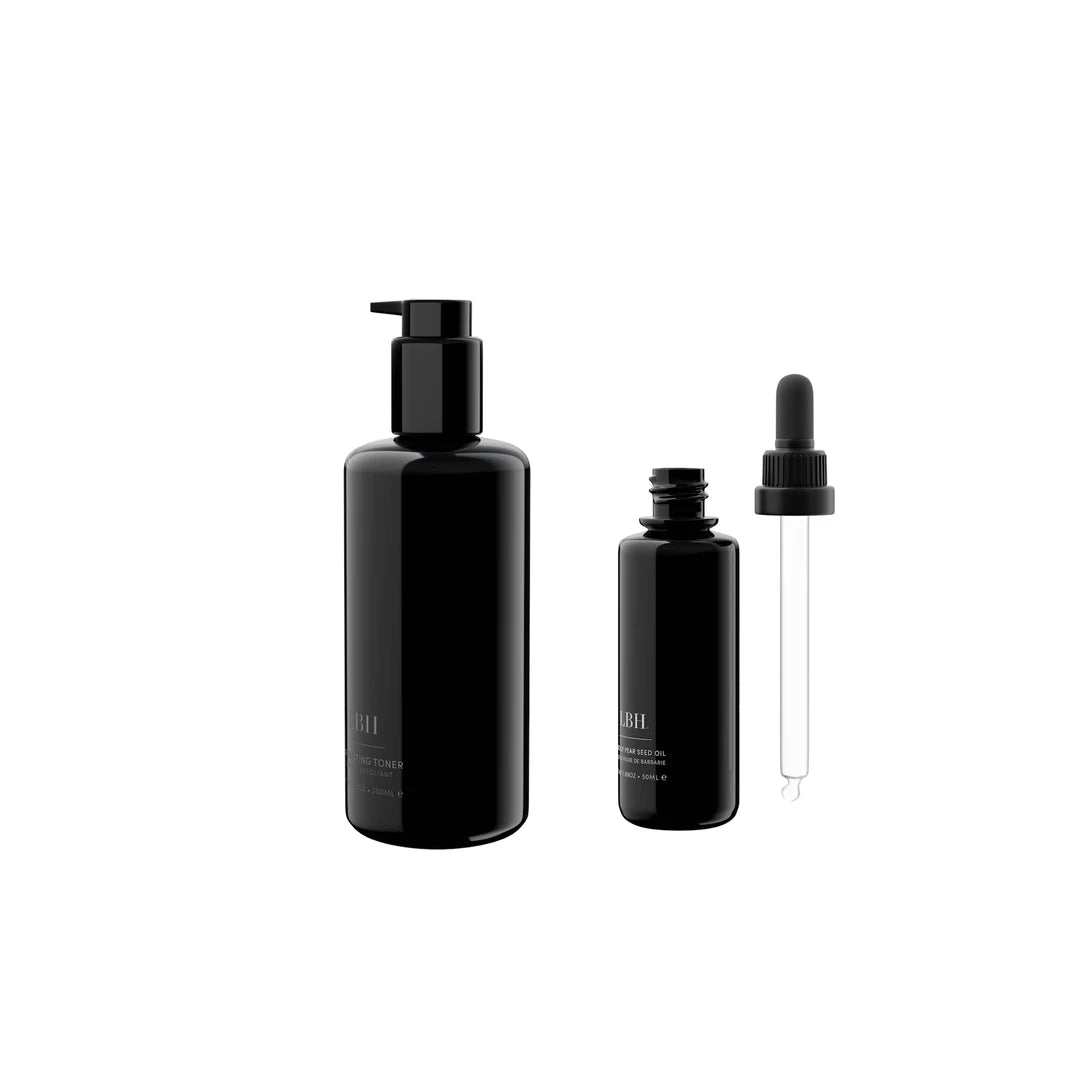
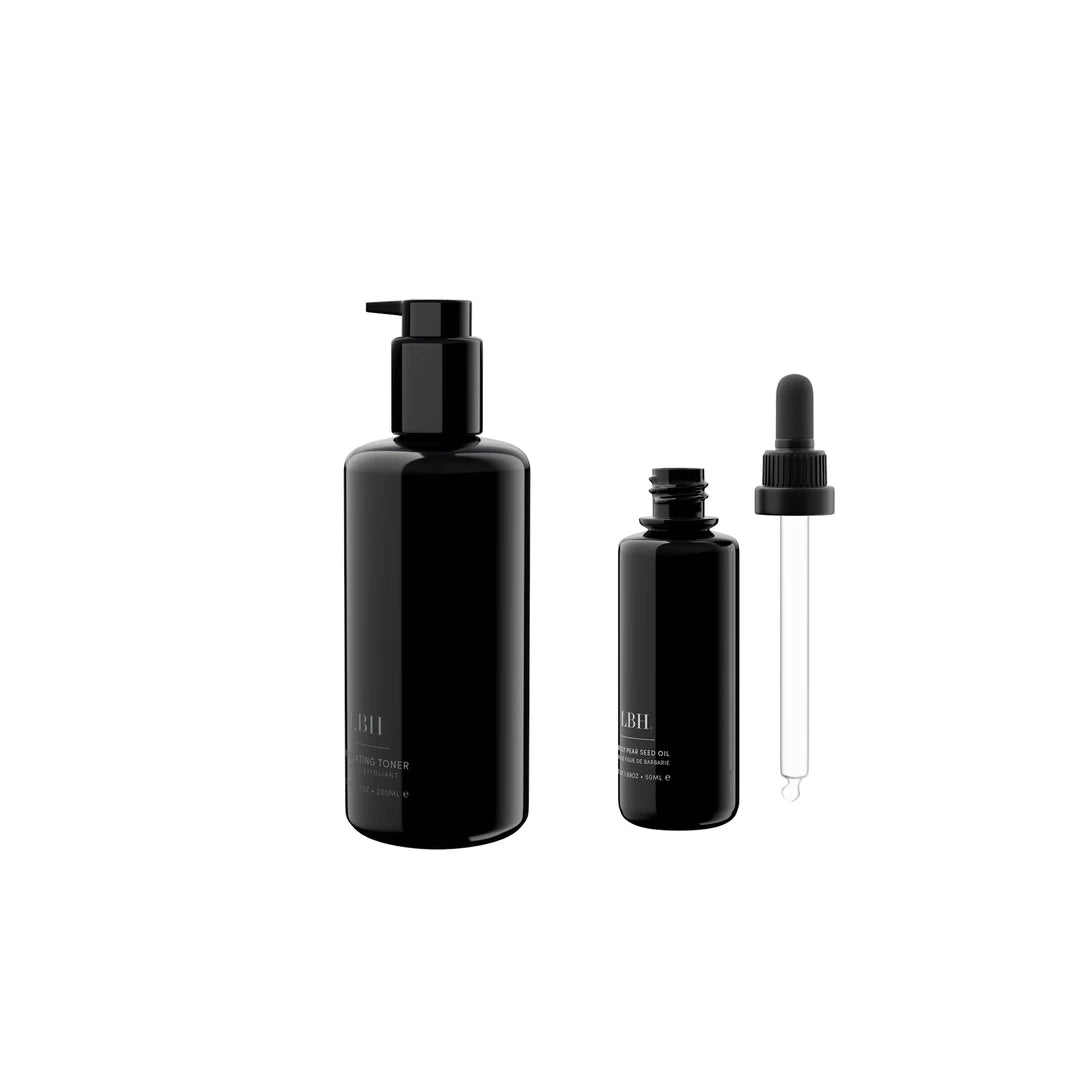

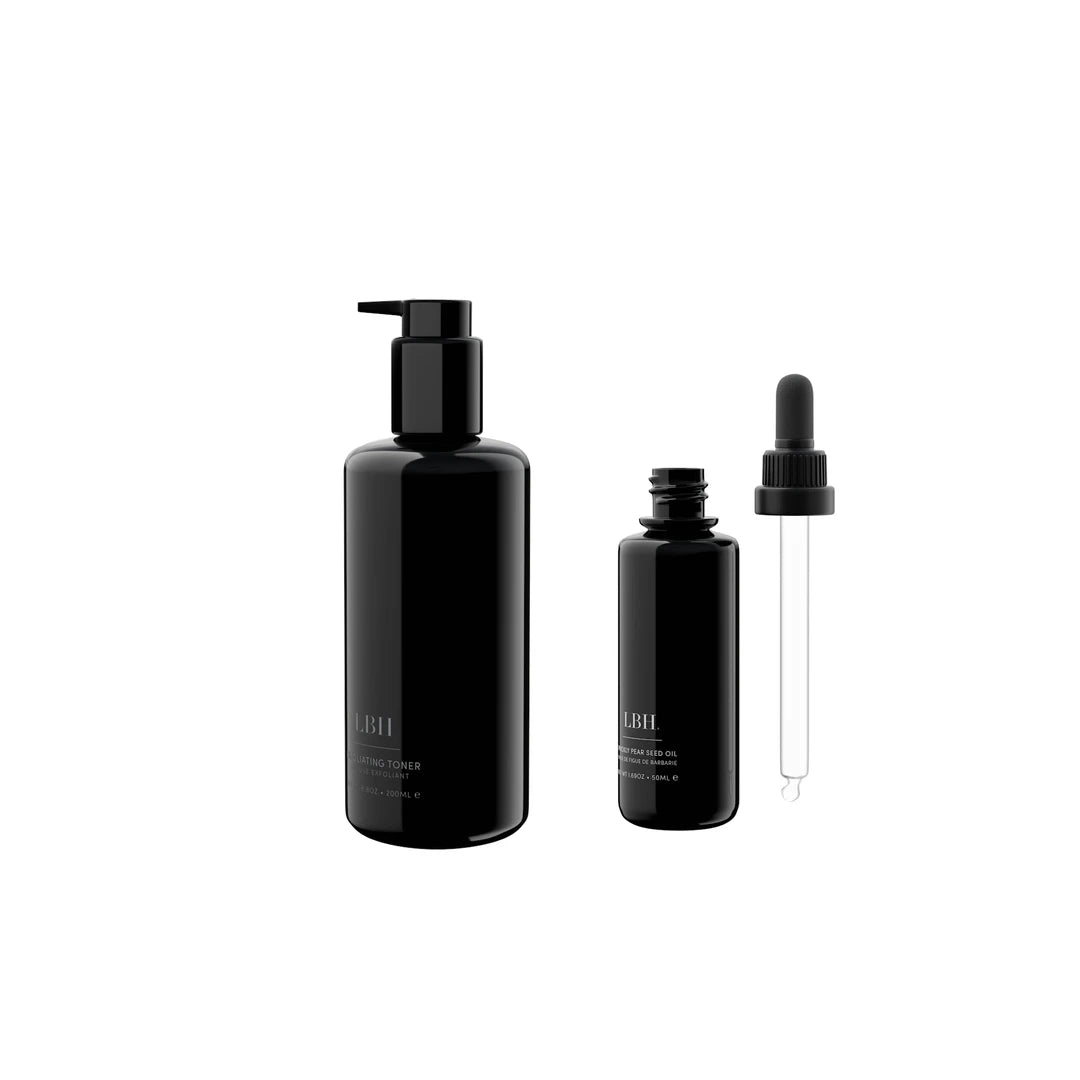
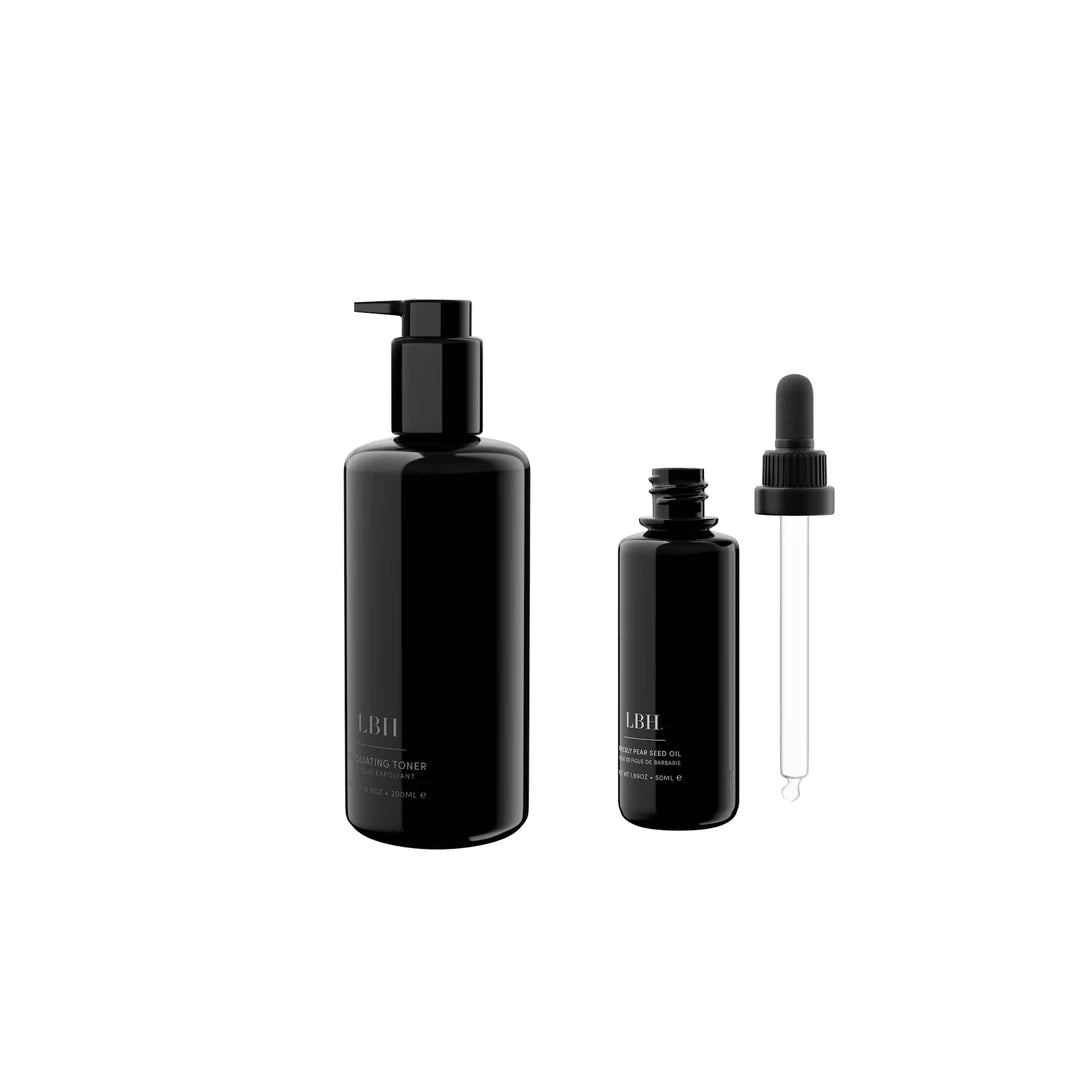
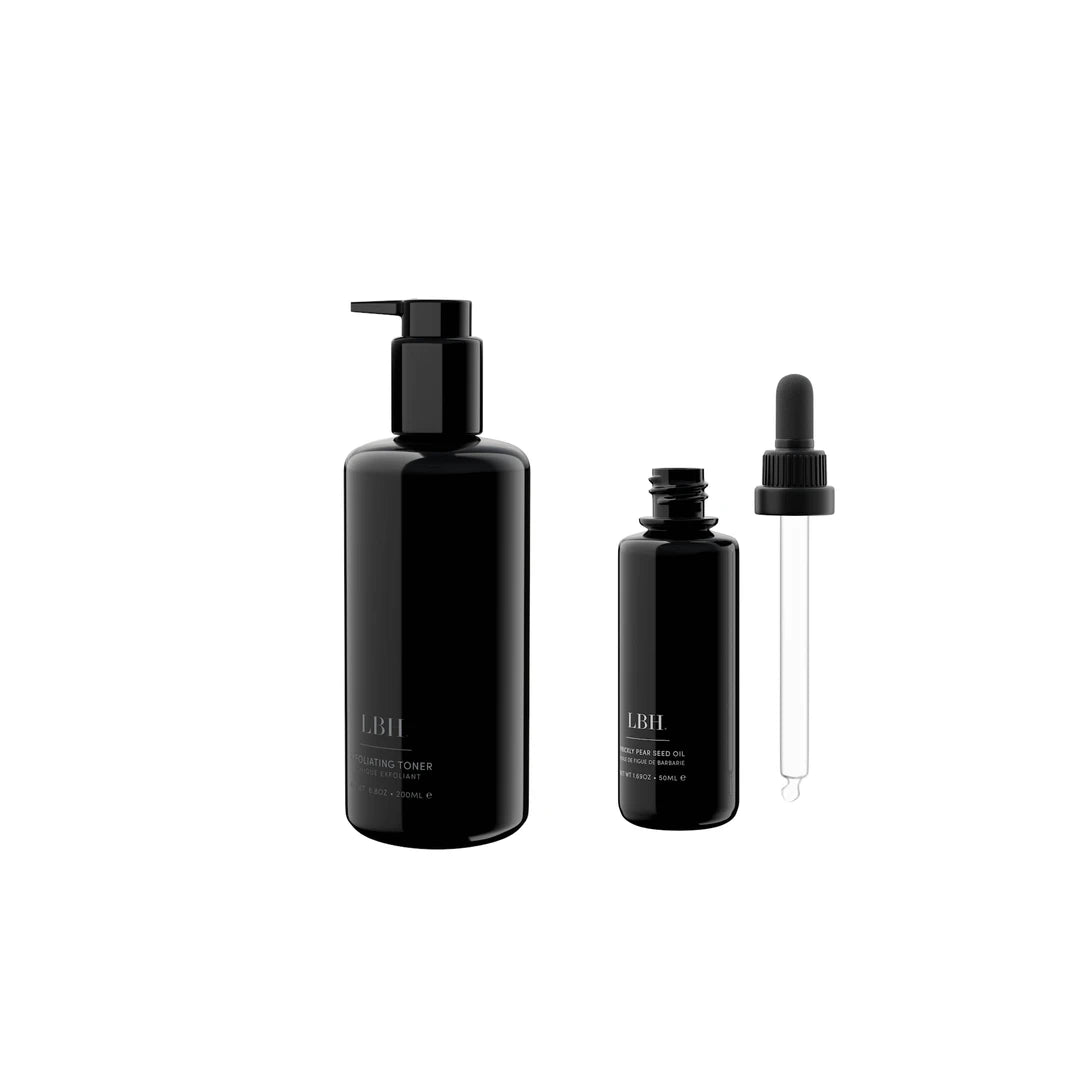
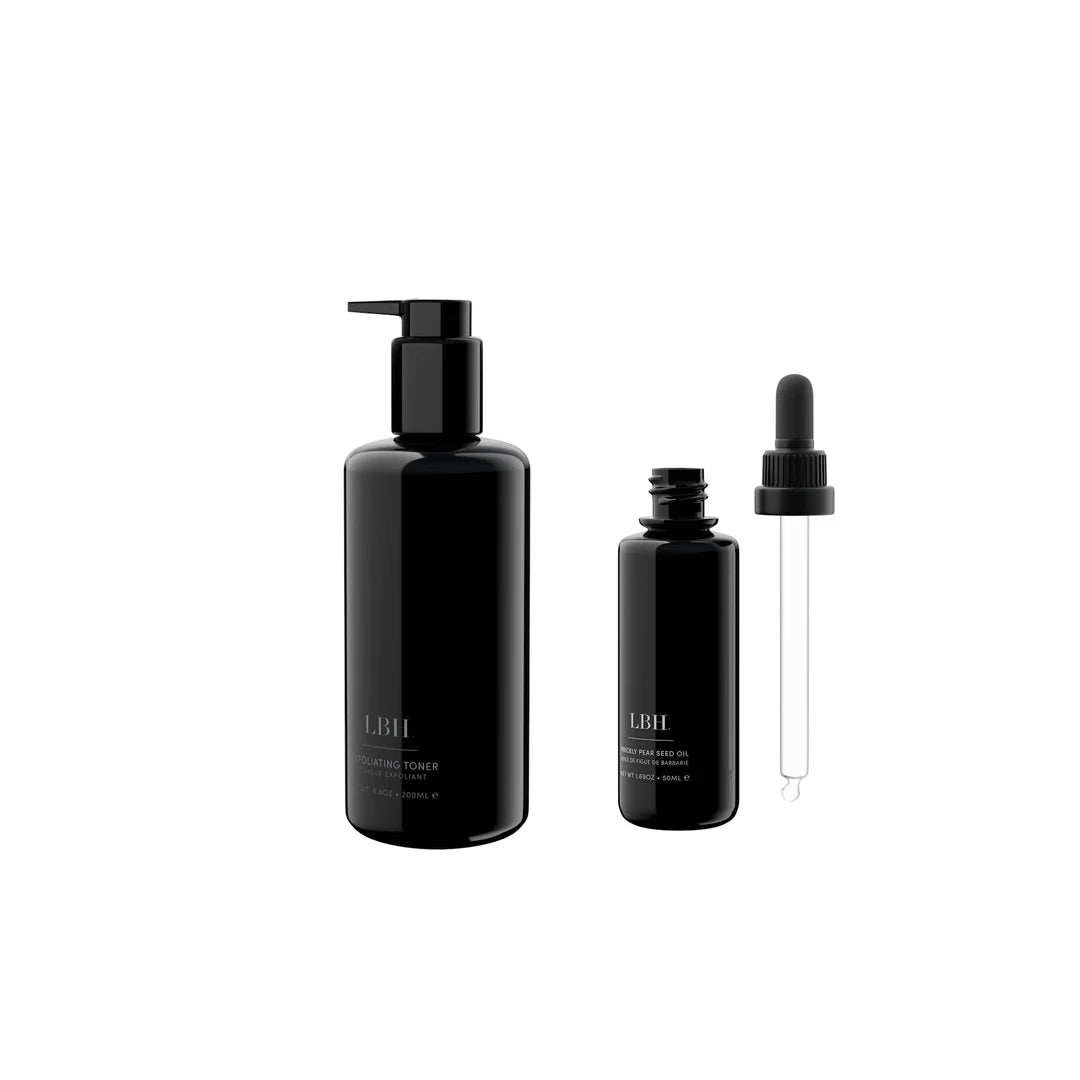
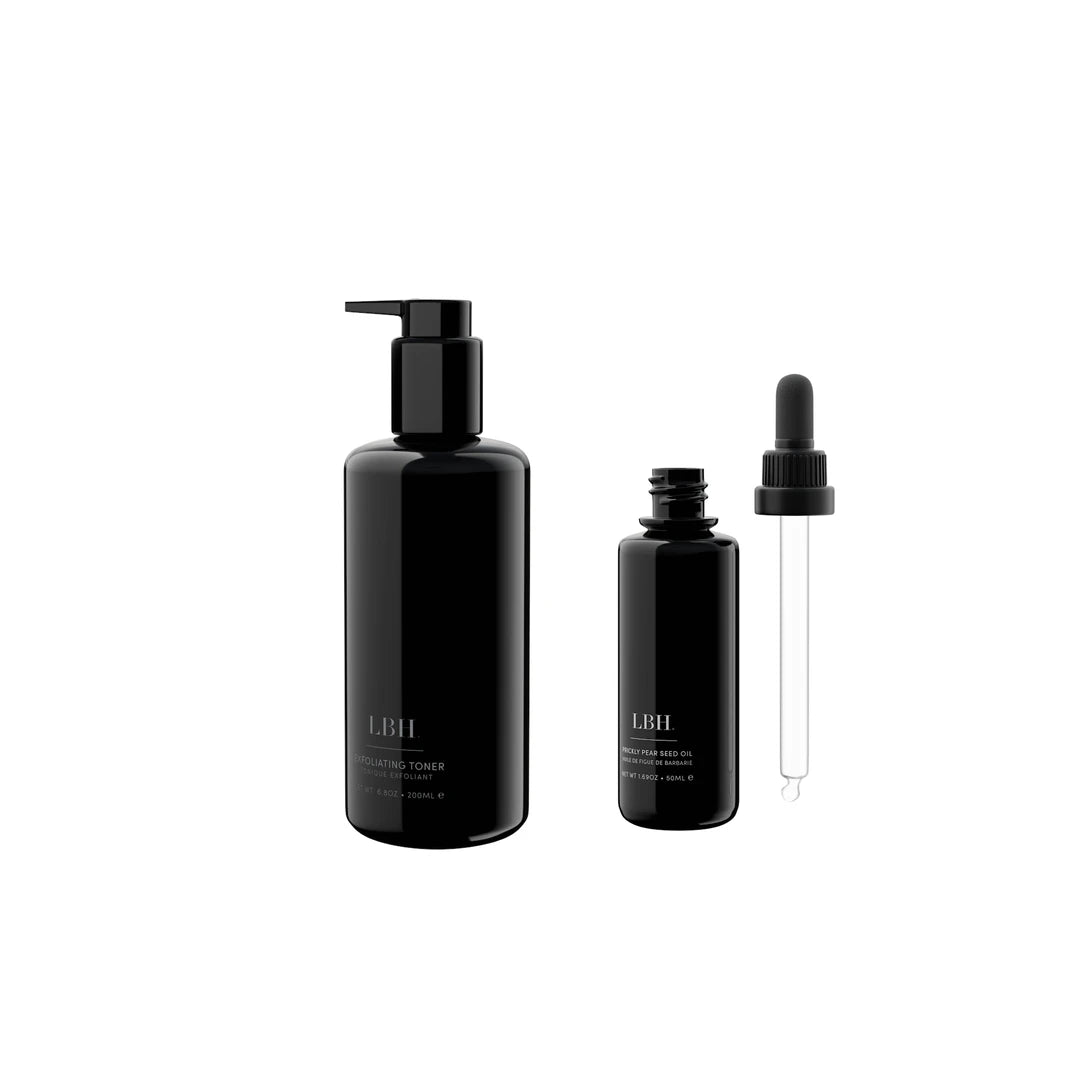
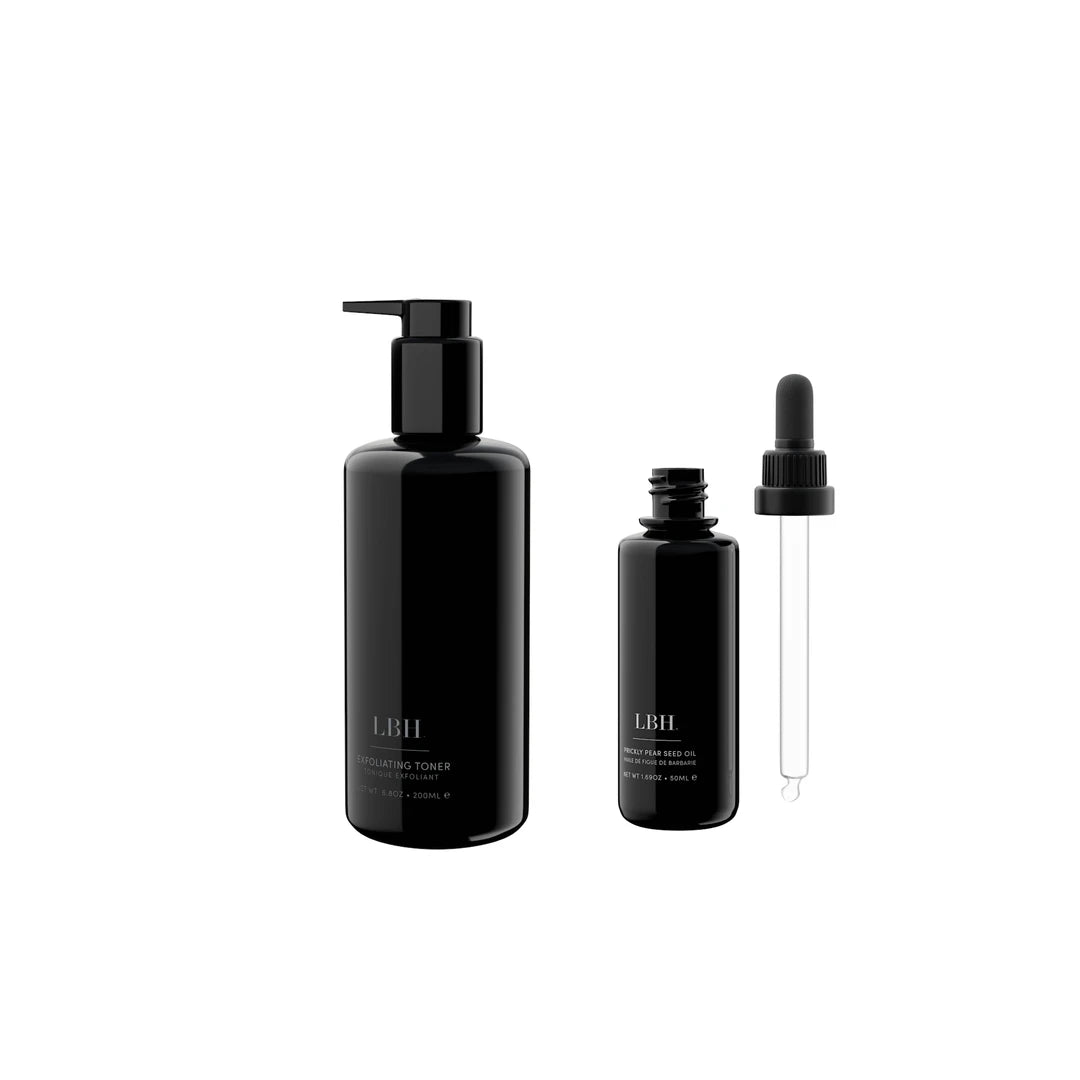
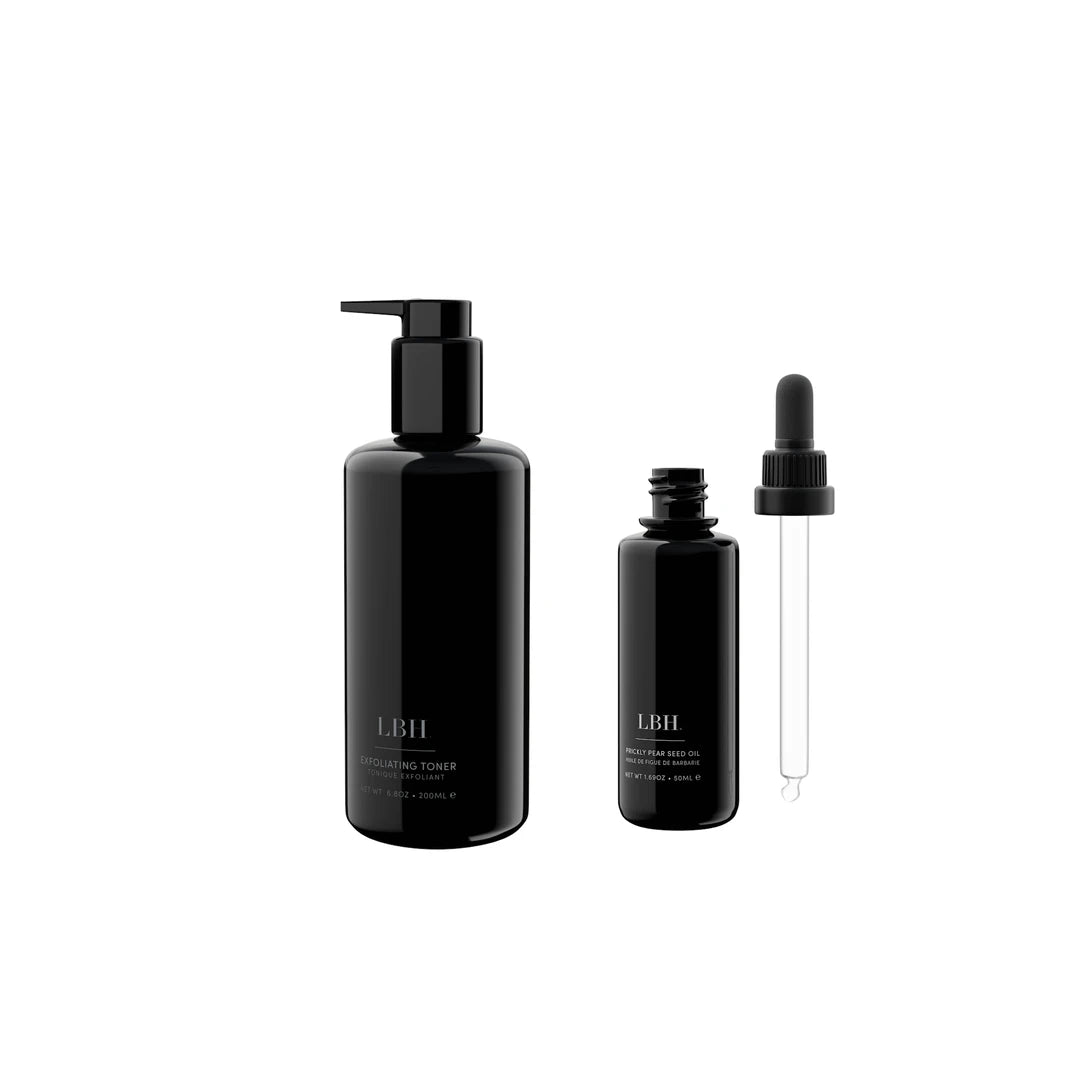
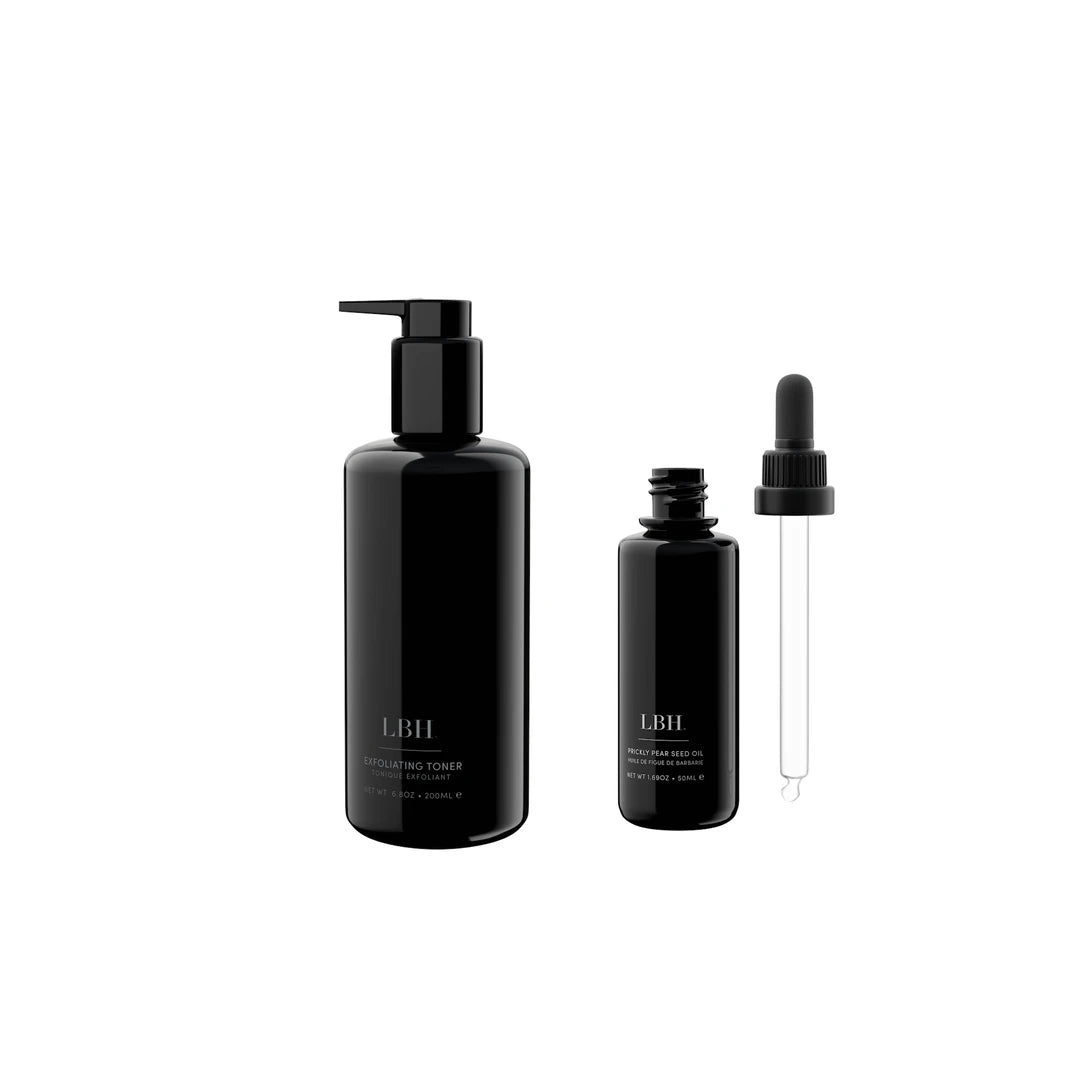
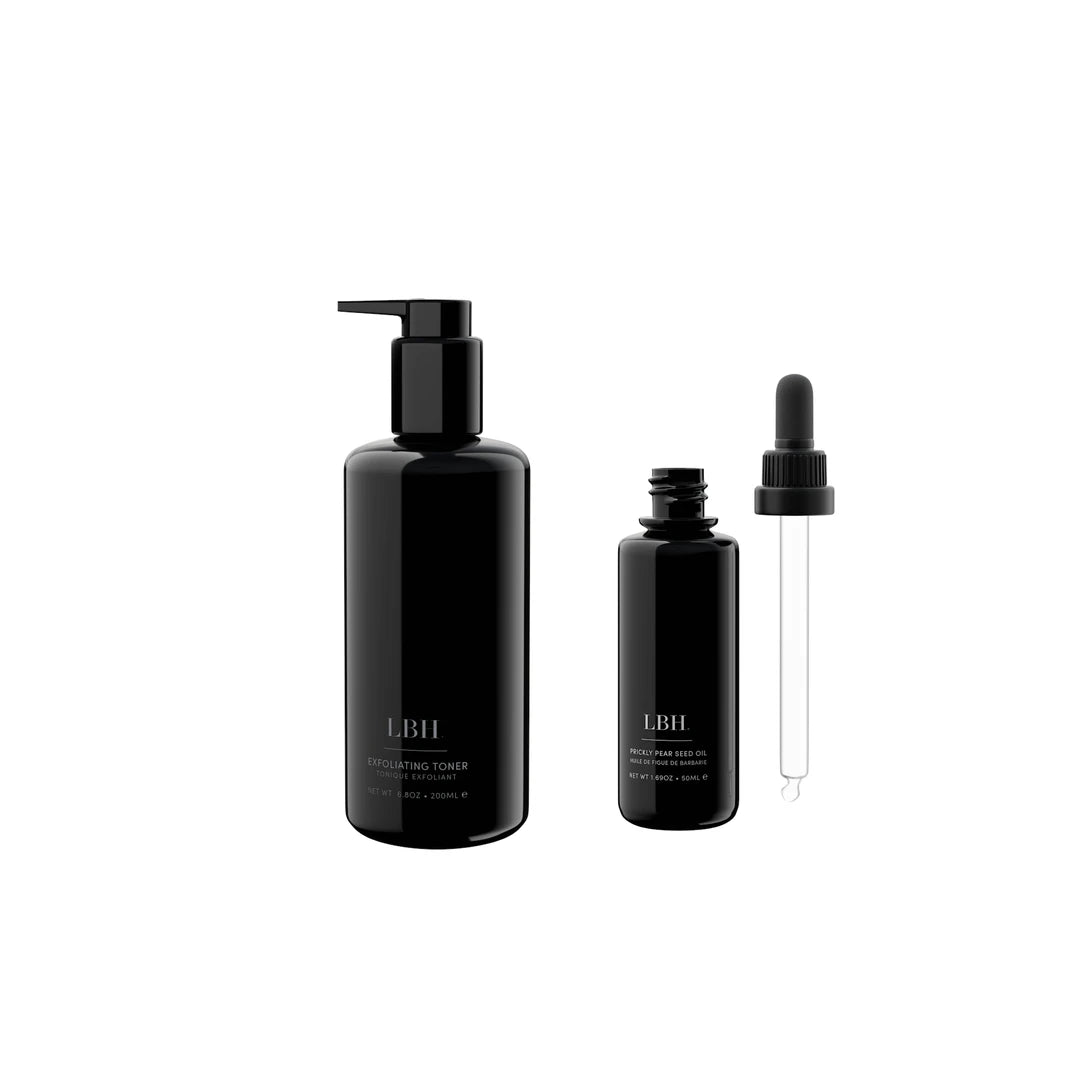
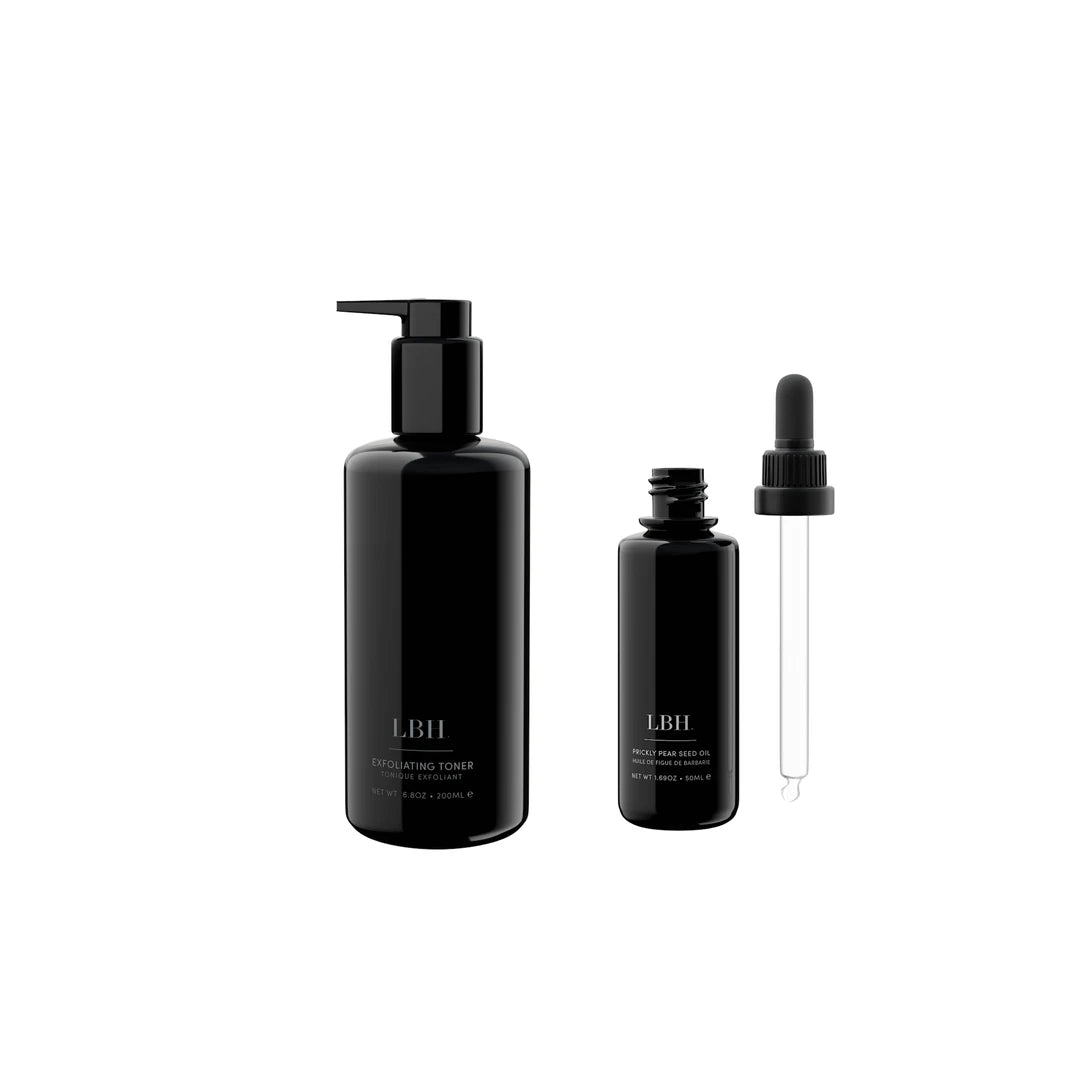
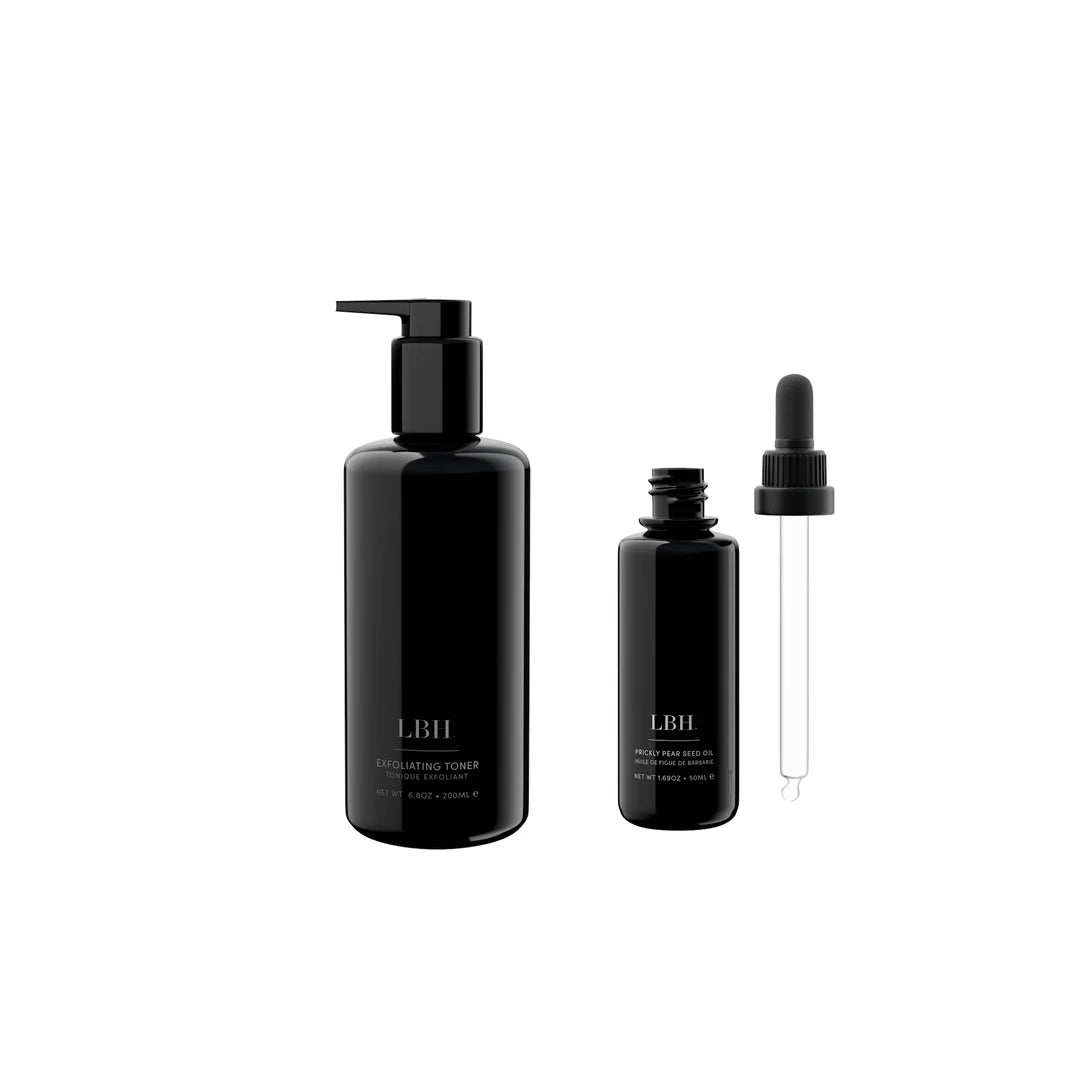
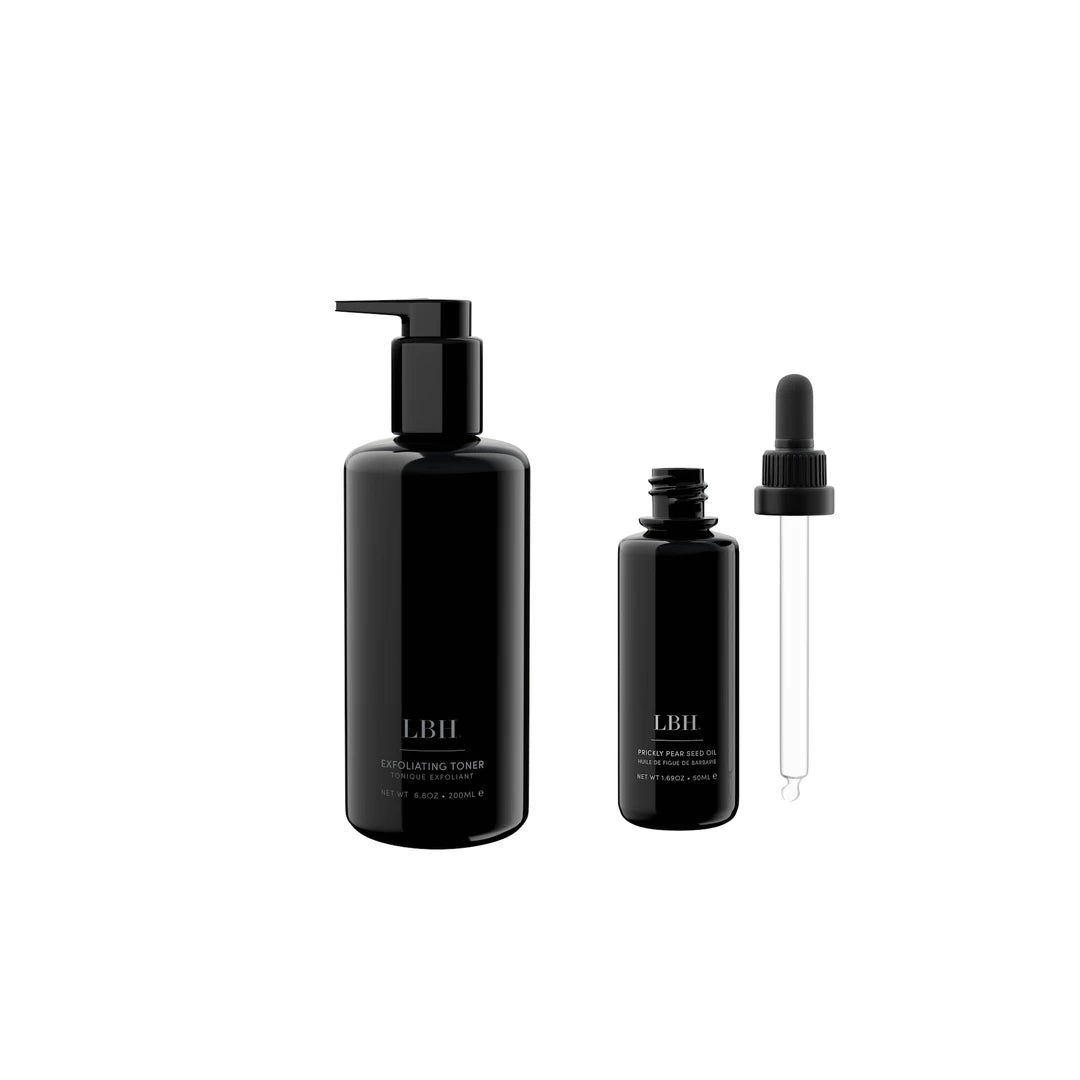
LBH Clinically-Proven Actives
Prickly Pear Seed Oil
Glycolic Acid
Lactic Acid
Mandelic Acid
Niacinamide
Sodium Hyaluronate
Propanediol
Xylitol
Aloe Barbadensis Leaf Extract
Sodium PCA
Panthenol
Centella Asiatica Extract
Melia Azadirachta Leaf Extract
REFERENCES
- Alakomi HL, Skyttä E, Saarela M, Mattila-Sandholm T, Latva-Kala K, Helander IM. Lactic acid permeabilizes gram-negative bacteria by disrupting the outer membrane. Appl Environ Microbiol. 2000 May;66(5):2001-5. doi: 10.1128/AEM.66.5.2001-2005.2000. PMID: 10788373; PMCID: PMC101446.
- Bardaa S, Chabchoub N, Jridi M, Moalla D, Mseddi M, Rebai T, Sahnoun Z. The effect of natural extracts on laser burn wound healing. J Surg Res. 2016 Apr;201(2):464-72. doi: 10.1016/j.jss.2015.11.052. Epub 2015 Dec 1. PMID: 27020833.
- Bardaa S, Turki M, Ben Khedir S, Mzid M, Rebai T, Ayadi F, Sahnoun Z. The Effect of Prickly Pear, Pumpkin, and Linseed Oils on Biological Mediators of Acute Inflammation and Oxidative Stress Markers. Biomed Res Int. 2020 Aug 2;2020:5643465. doi: 10.1155/2020/5643465. PMID: 32802857; PMCID: PMC7421017.
- Bernstein, E. F., Lee, J., Brown, D. B., Yu, R., & Van Scott, E. (2001). Glycolic acid treatment increases type I collagen mRNA and hyaluronic acid content of human skin. Dermatologic Surgery, 27(5), 429-433.
- Chougui N, Tamendjari A, Hamidj W, Hallal S, Barras A, Richard T, Larbat R. Oil composition and characterisation of phenolic compounds of Opuntia ficus-indica seeds. Food Chem. 2013 Aug 15;139(1-4):796-803. doi: 10.1016/j.foodchem.2013.01.054. Epub 2013 Jan 30. PMID: 23561175.
- Davis EC, Callender VD. Postinflammatory hyperpigmentation: a review of the epidemiology, clinical features, and treatment options in skin of color. J Clin Aesthet Dermatol. 2010 Jul;3(7):20-31. PMID: 20725554; PMCID: PMC2921758.
- Ditre C.M., Griffin T.D., Murphy G.F., Sueki H., Telegan B., Johnson W.C., Yu R.J., Van Scott E.J. Effects of alpha-hydroxy acids on photoaged skin: A pilot clinical, histologic, and ultrastructural study. Pt 1J. Am. Acad. Dermatol. 1996;34:187–195. doi: 10.1016/S0190-9622(96)80110-1
- Downing DT, Stewart ME, Wertz PW, Strauss JS. Essential fatty acids and acne. J Am Acad Dermatol. 1986 Feb;14(2 Pt 1):221-5. doi: 10.1016/s0190-9622(86)70025-x. PMID: 2936775.
- Fiume, M. Z., Bergfeld, W. F., Belsito, D. V., Klaassen, C. D., Liebler, D. C., Marks Jr., J. G., … & Andersen, F. A. (2012). Safety assessment of propanediol as used in cosmetics. International Journal of Toxicology, 31(1_suppl), 50S-57S.
- Garg VK, Sinha S, Sarkar R. Glycolic acid peels versus salicylic-mandelic acid peels in active acne vulgaris and post-acne scarring and hyperpigmentation: a comparative study. Dermatol Surg. 2009 Jan;35(1):59-65. doi: 10.1111/j.1524-4725.2008.34383.x. Epub 2008 Dec 8. PMID: 19076192.
- Gehring W. Nicotinic acid/niacinamide and the skin. J Cosmet Dermatol. 2004 Apr;3(2):88-93. doi: 10.1111/j.1473-2130.2004.00115.x. PMID: 17147561.
- Green BA, Yu RJ, Van Scott EJ. Clinical and cosmeceutical uses of hydroxyacids. Clin Dermatol. 2009 Sep-Oct;27(5):495-501. doi: 10.1016/j.clindermatol.2009.06.023. PMID: 19695482.
- Hakozaki T, Minwalla L, Zhuang J, Chhoa M, Matsubara A, Miyamoto K, Greatens A, Hillebrand GG, Bissett DL, Boissy RE. The effect of niacinamide on reducing cutaneous pigmentation and suppression of melanosome transfer. Br J Dermatol. 2002 Jul;147(1):20-31. doi: 10.1046/j.1365-2133.2002.04834.x. PMID: 12100180.
- Ikram Khémiri, Badiaa Essghaier Hédi, Najla Sadfi Zouaoui, Neyla Ben Gdara, Lotfi Bitri, "The Antimicrobial and Wound Healing Potential of Opuntia ficus indica L. inermis Extracted Oil from Tunisia", Evidence-Based Complementary and Alternative Medicine, vol. 2019, Article ID 9148782, 10 pages, 2019. https://doi.org/10.1155/2019/9148782
- Jegasothy, S. M., Zabolotniaia, V., & Bielfeldt, S. (2014). Efficacy of a new topical nano-hyaluronic acid in humans. Journal of Clinical and Aesthetic Dermatology, 7(3), 27-29.
- Koshak AE, Algandaby MM, Mujallid MI, Abdel-Naim AB, Alhakamy NA, Fahmy UA, Alfarsi A, Badr-Eldin SM, Neamatallah T, Nasrullah MZ, M Abdallah H, Esmat A. Wound Healing Activity of Opuntia ficus-indicaFixed Oil Formulated in a Self-Nanoemulsifying Formulation. Int J Nanomedicine. 2021 Jun 9;16:3889-3905. doi: 10.2147/IJN.S299696. PMID: 34135583; PMCID: PMC8200171.
- Letawe C, Boone M, Piérard GE. Digital image analysis of the effect of topically applied linoleic acid on acne microcomedones. Clin Exp Dermatol. 1998 Mar;23(2):56-8. doi: 10.1046/j.1365-2230.1998.00315.x. PMID: 9692305.
- Narda M, Trullas C, Brown A, Piquero-Casals J, Granger C, Fabbrocini G. Glycolic acid adjusted to pH 4 stimulates collagen production and epidermal renewal without affecting levels of proinflammatory TNF-alpha in human skin explants. J Cosmet Dermatol. 2021 Feb;20(2):513-521. doi: 10.1111/jocd.13570. Epub 2020 Jul 24. PMID: 32583600; PMCID: PMC7891644.
- Niren NM. Pharmacologic doses of nicotinamide in the treatment of inflammatory skin conditions: a review. Cutis. 2006 Jan;77(1 Suppl):11-6. PMID: 16871774.
- Okano, Y., Abe, Y., & Masaki, H. (2003). Biological effects of glycolic acid on dermal matrix metabolism mediated by dermal fibroblasts and epidermal keratinocytes. Experimental Dermatology, 12(s2), 57-63
- Ouwehand, A.; Salli, K.; Lehtinen, M.; Tiihonen, K. Xylitol’s Benefits to Skin. Encyclopedia. Available online: https://encyclopedia.pub/entry/14606 (accessed on 15 June 2023).
- Papakonstantinou, E., Roth, M., & Karakiulakis, G. (2012). Hyaluronic acid: A key molecule in skin aging. Dermato-Endocrinology, 4(3), 253-258.
- Price, R. D., Myers, S., Leigh, I. M., & Navsaria, H. A. (2007). The role of hyaluronic acid in wound healing: assessment of clinical evidence. American Journal of Clinical Dermatology, 8(3), 139-144.
- Rawlings, A. V., Davies, A., Carlomusto, M., Pillai, S., Zhang, K., Kosturko, R., ... & Imokawa, G. (1996). Effect of lactic acid isomers on keratinocyte ceramide synthesis, stratum corneum barrier function, and irritation. Archives of Dermatological Research, 288(7), 383-390.
- Salli K, Lehtinen MJ, Tiihonen K, Ouwehand AC. Xylitol's Health Benefits beyond Dental Health: A Comprehensive Review. Nutrients. 2019 Aug 6;11(8):1813. doi: 10.3390/nu11081813. PMID: 31390800; PMCID: PMC6723878.
- Smith, W. P. (1994). Epidermal and dermal effects of topical lactic acid. Journal of the American Academy of Dermatology, 31(5), S29-S33.
- Tang SC, Yang JH. Dual Effects of Alpha-Hydroxy Acids on the Skin. Molecules. 2018 Apr 10;23(4):863. doi: 10.3390/molecules23040863. PMID: 29642579; PMCID: PMC6017965.
- Valle-González ER, Jackman JA, Yoon BK, Mokrzecka N, Cho NJ. pH-Dependent Antibacterial Activity of Glycolic Acid: Implications for Anti-Acne Formulations. Sci Rep. 2020 May 4;10(1):7491. doi: 10.1038/s41598-020-64545-9. PMID: 32367064; PMCID: PMC7198592.
